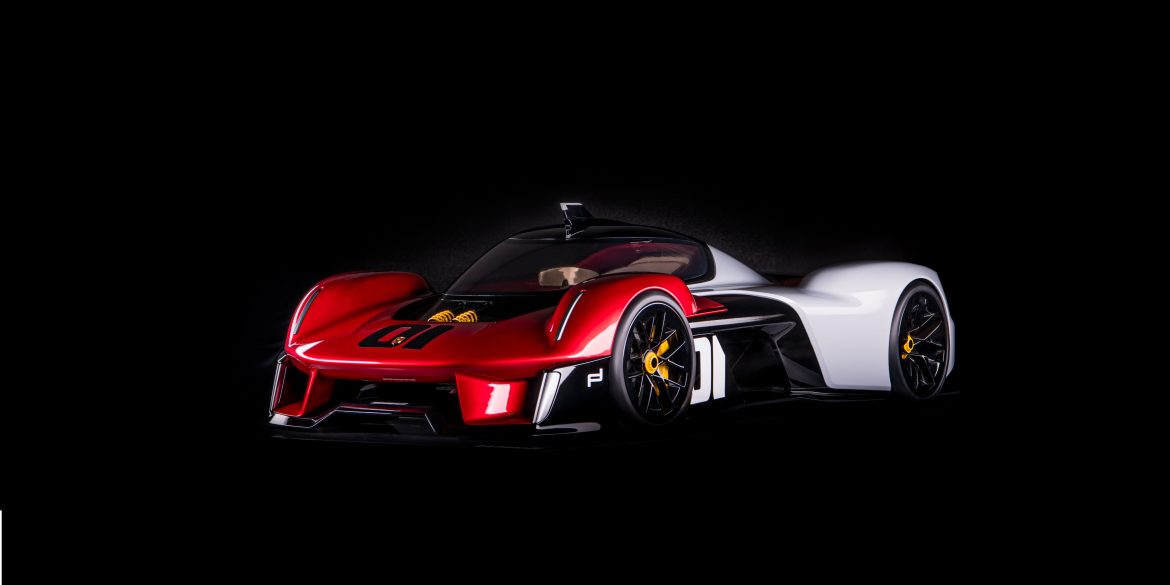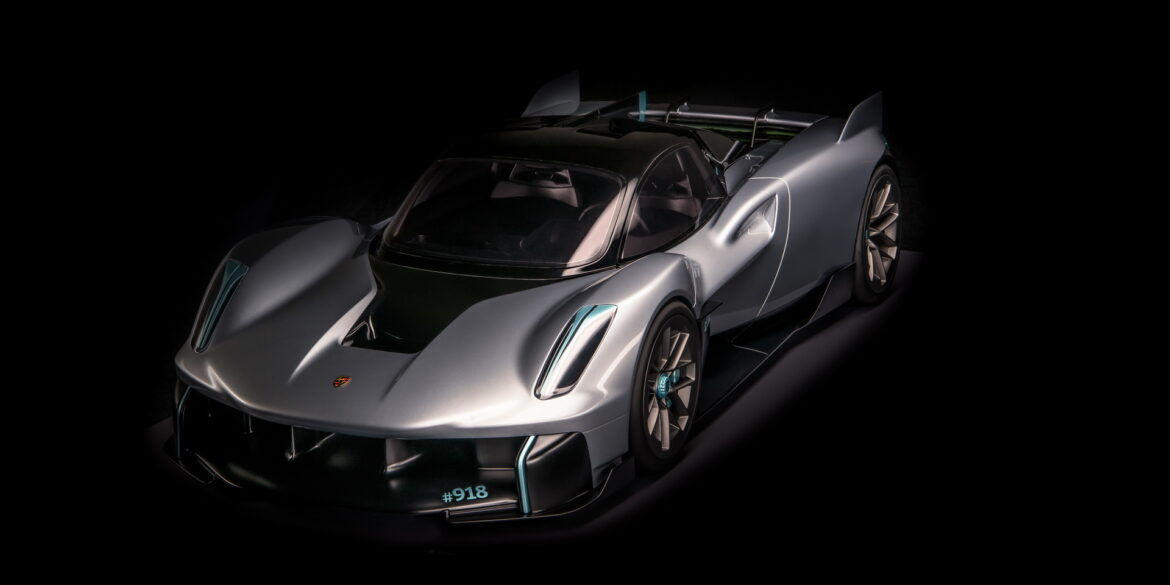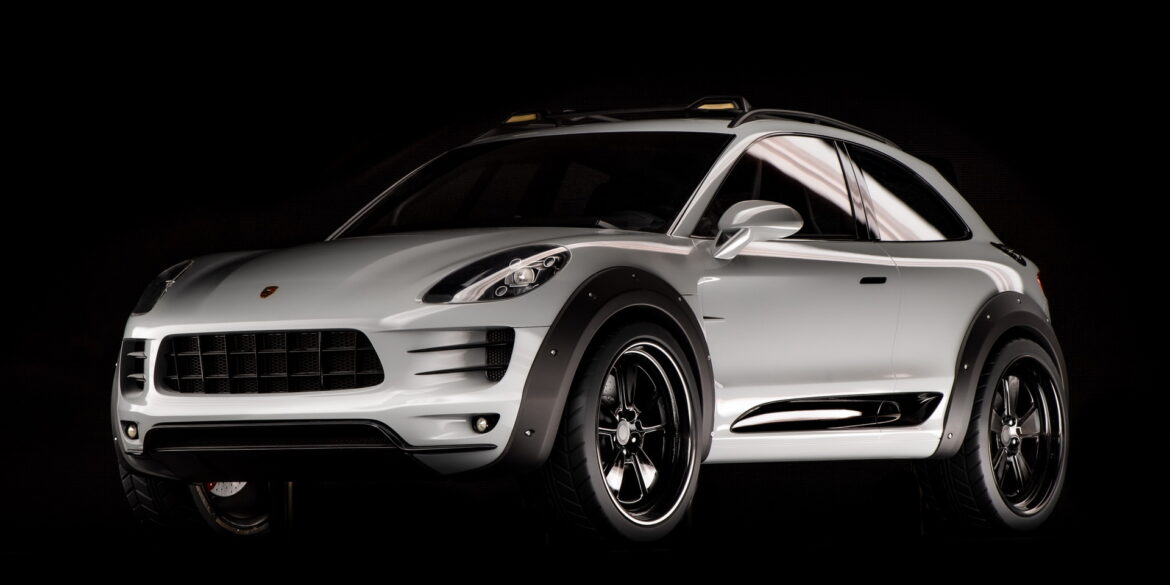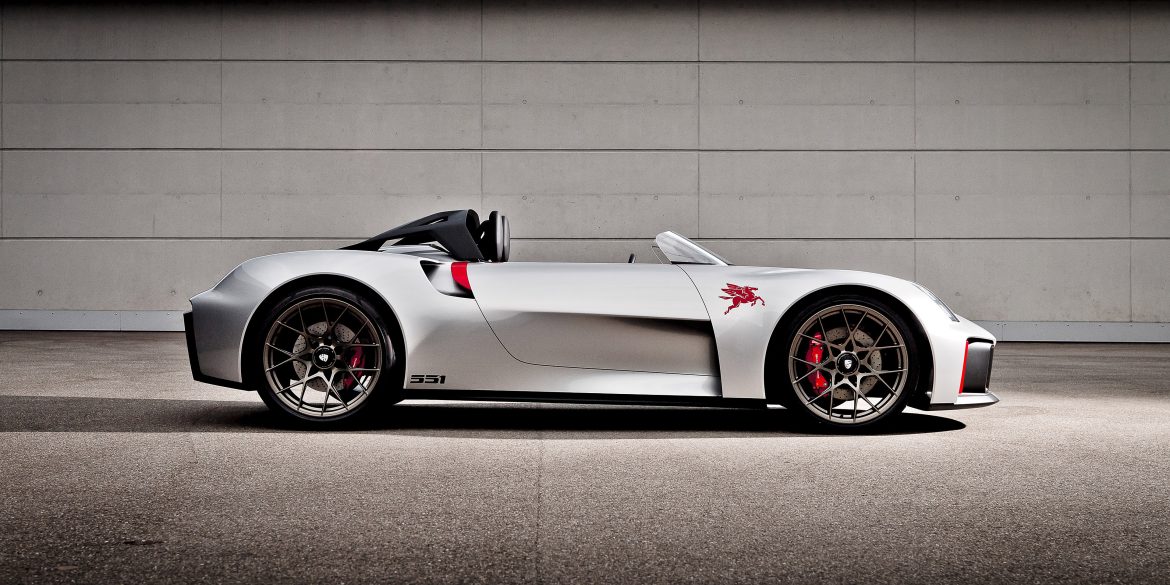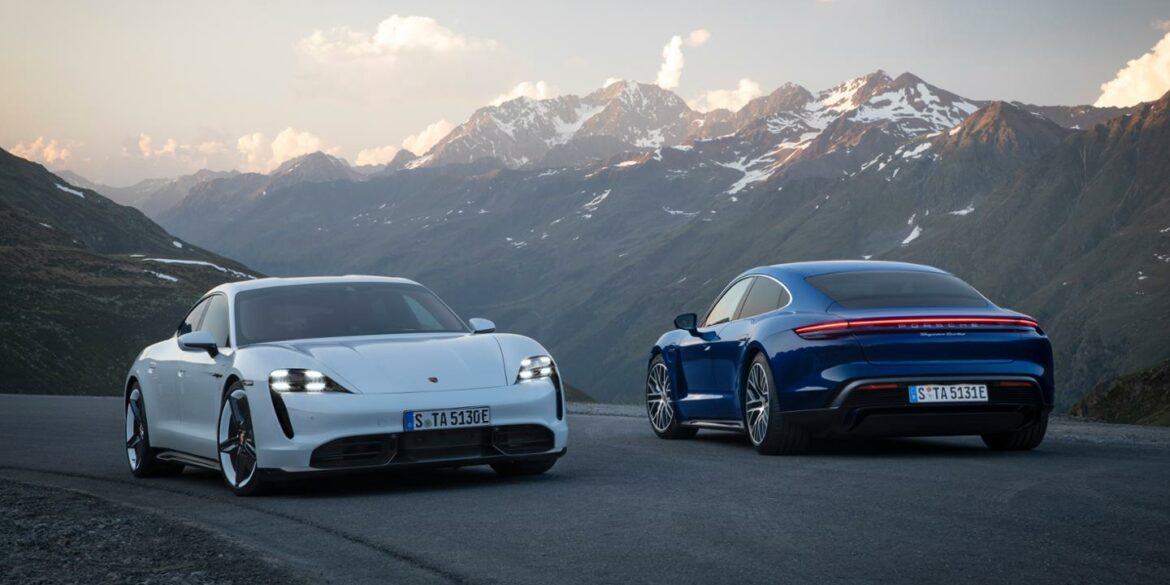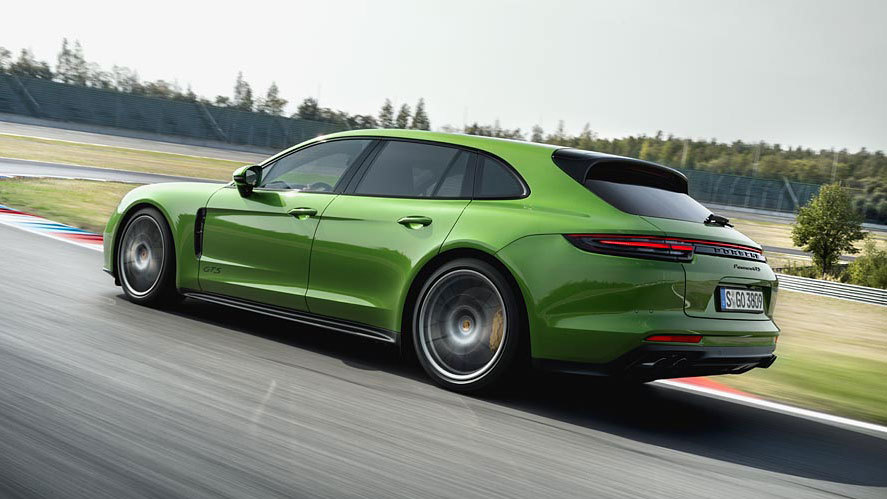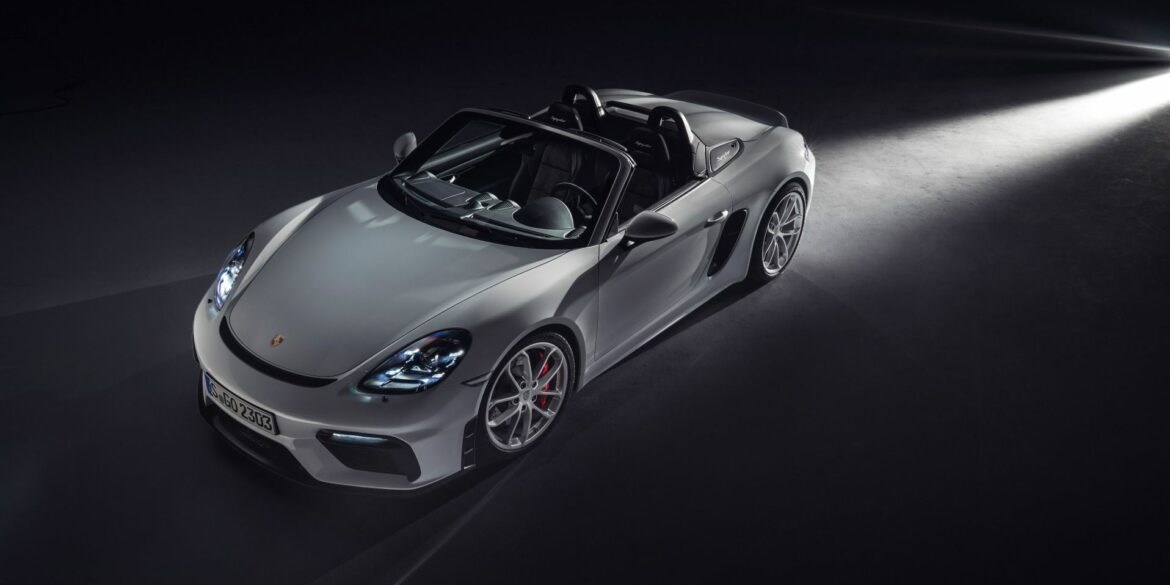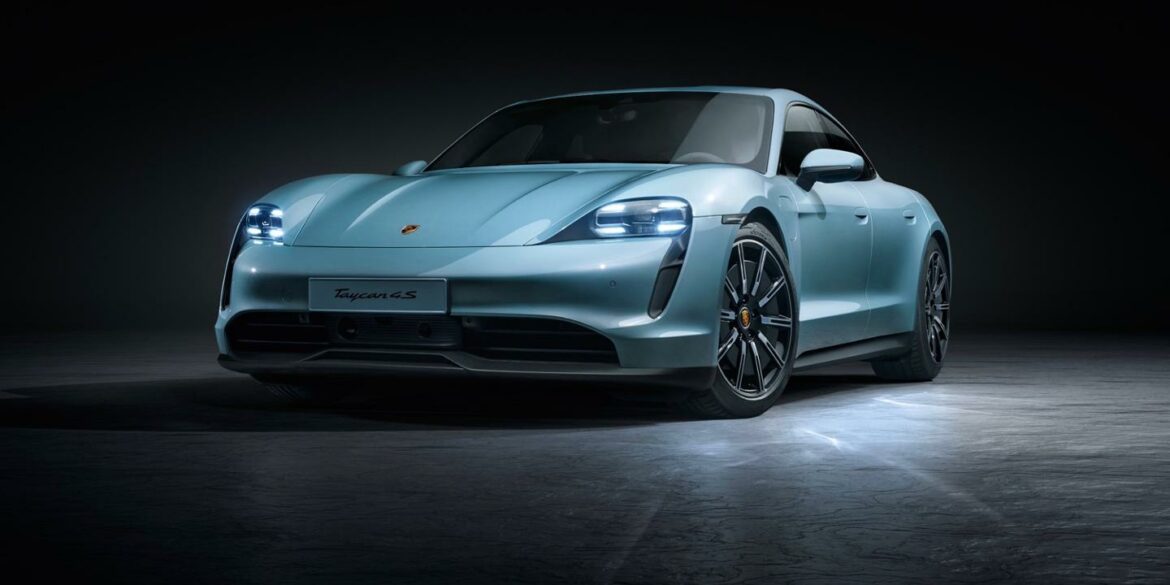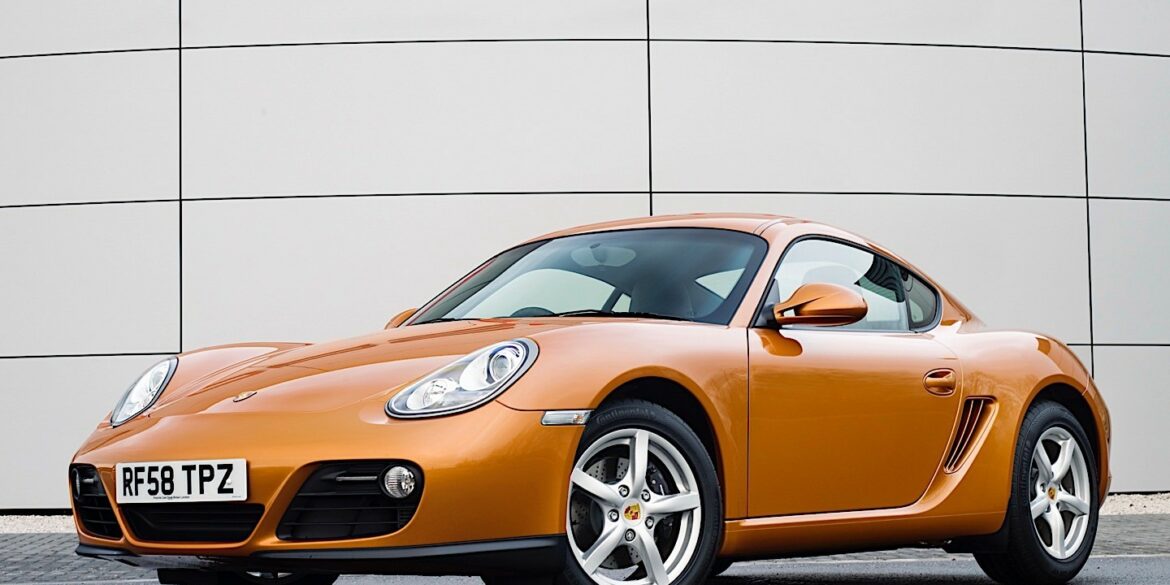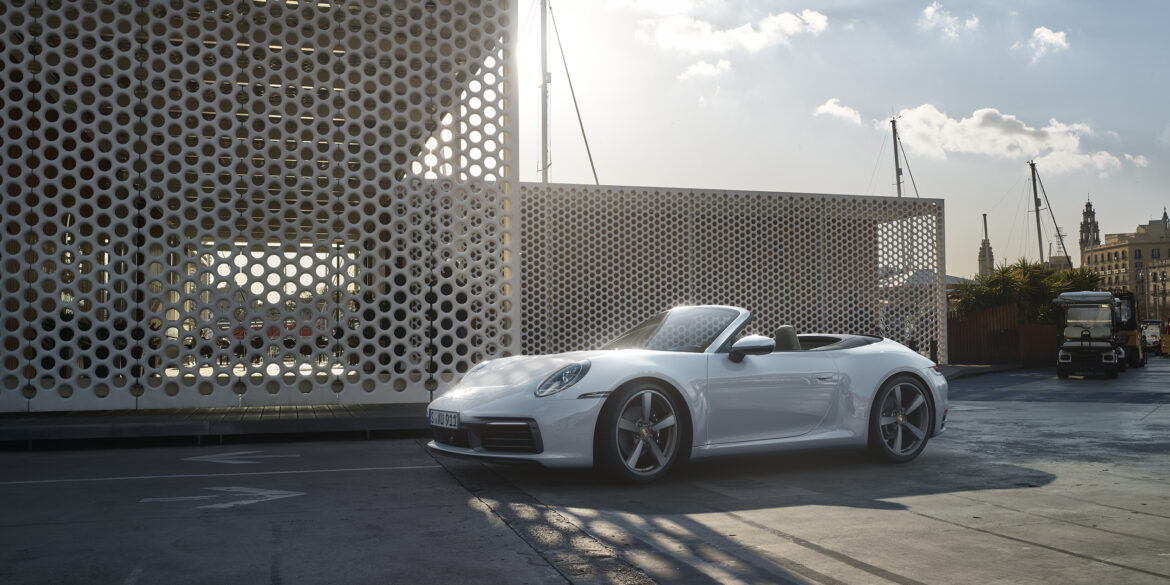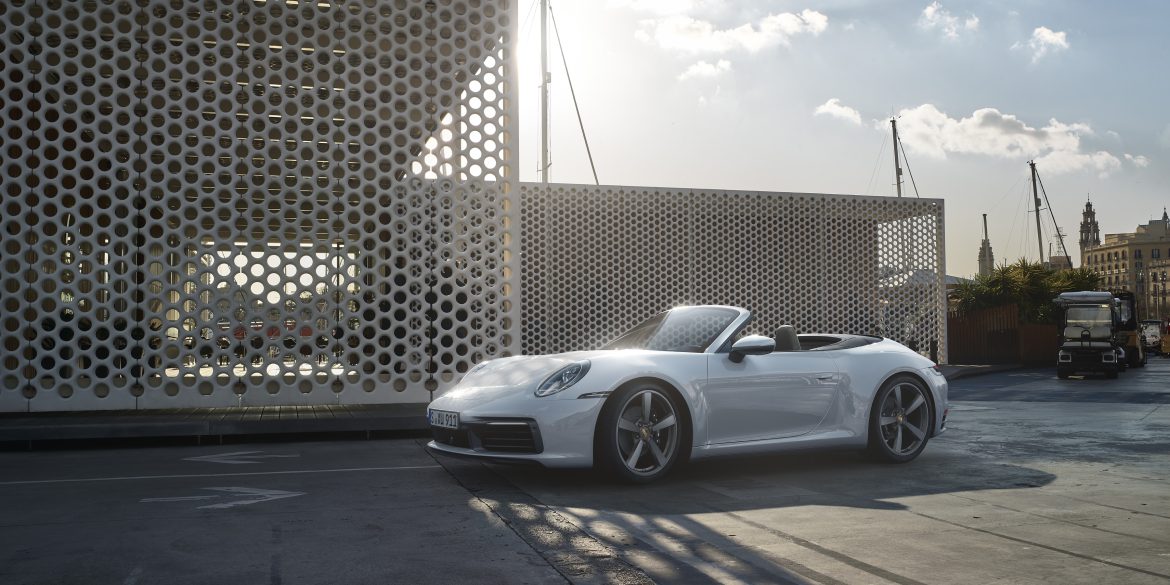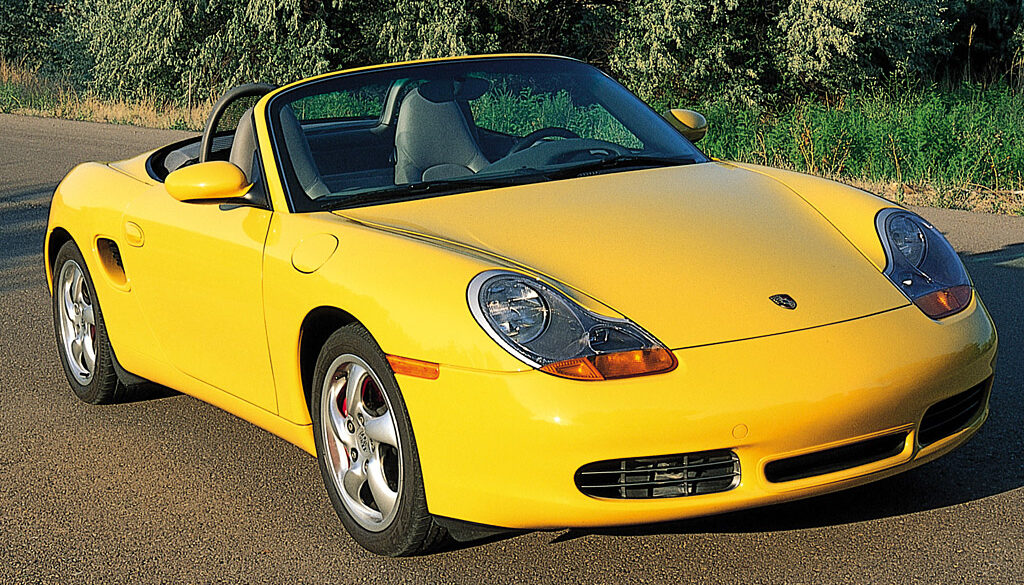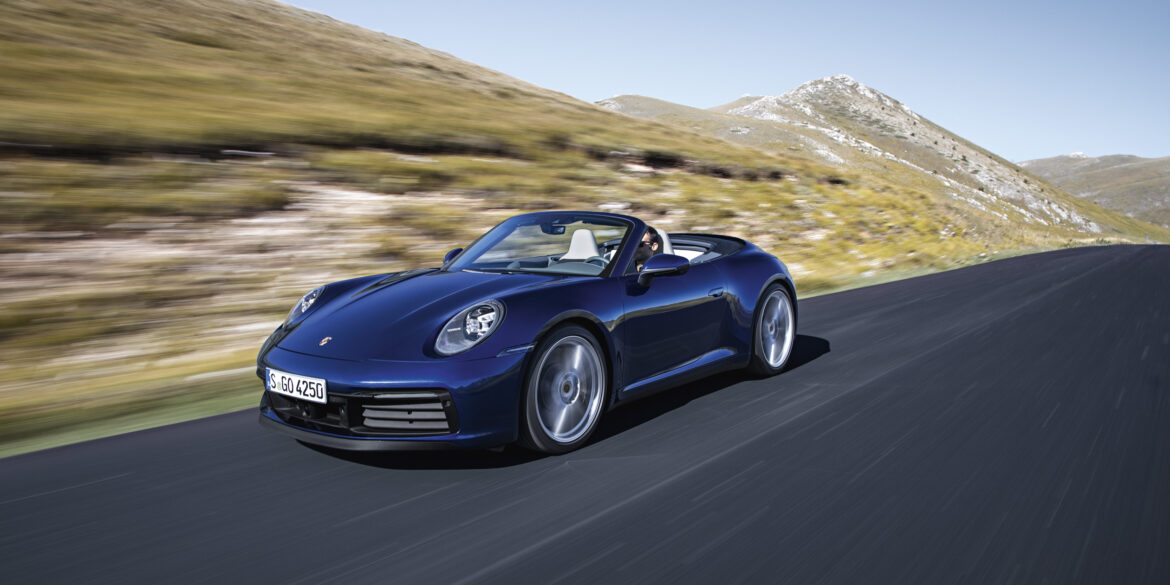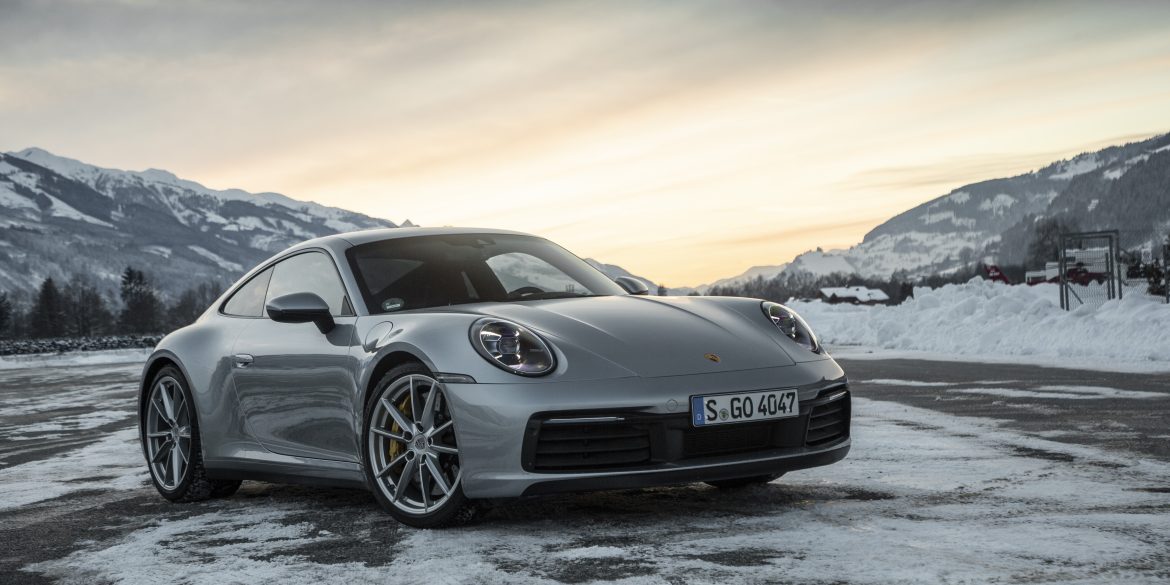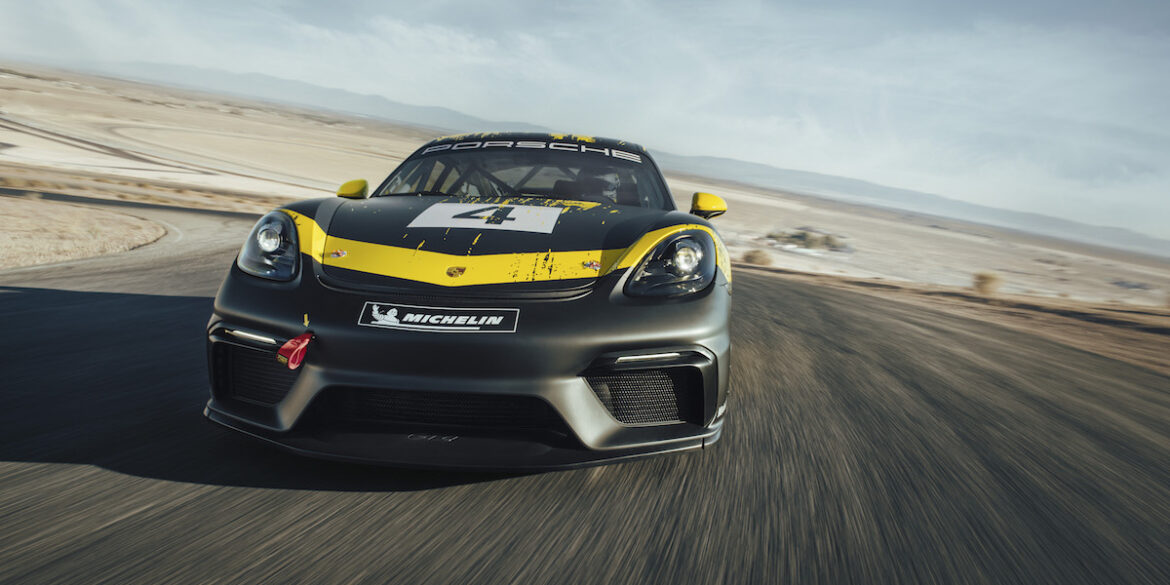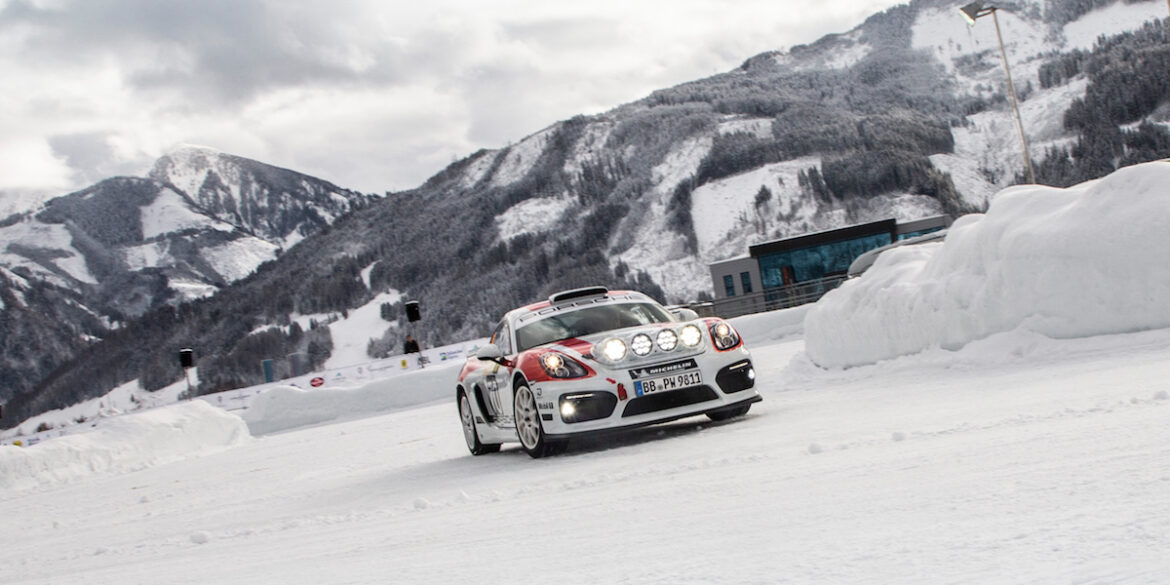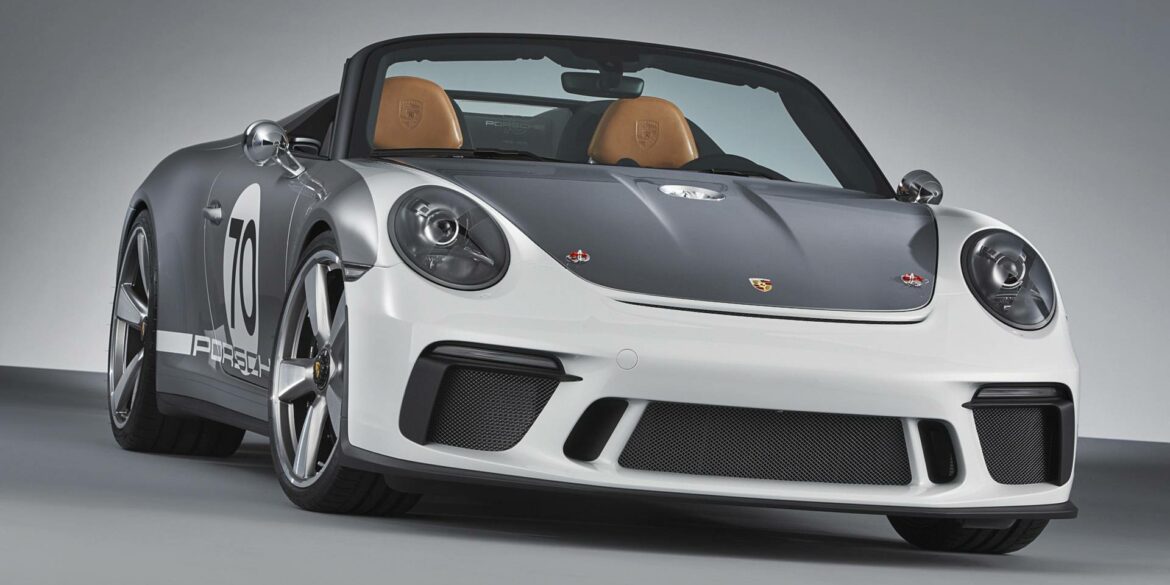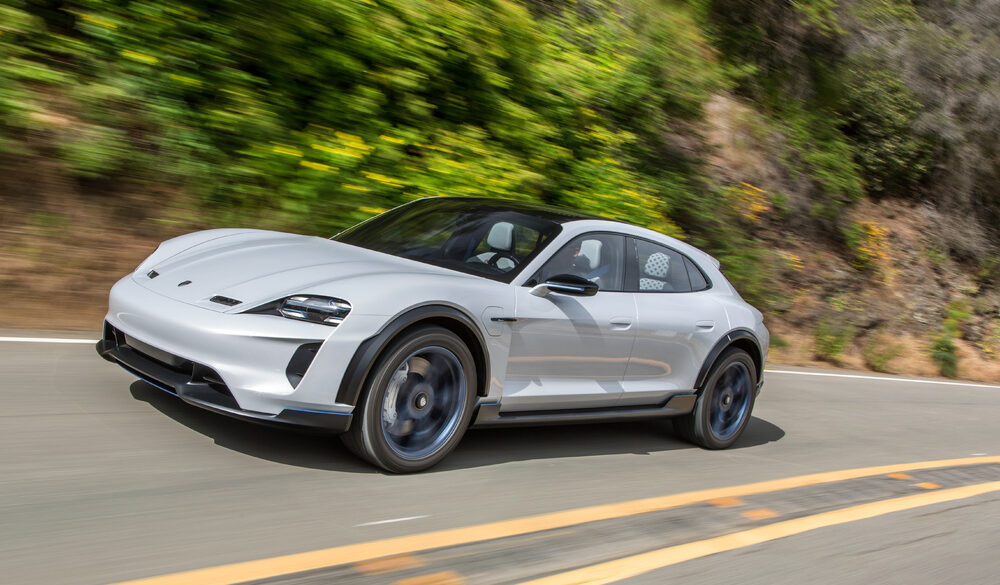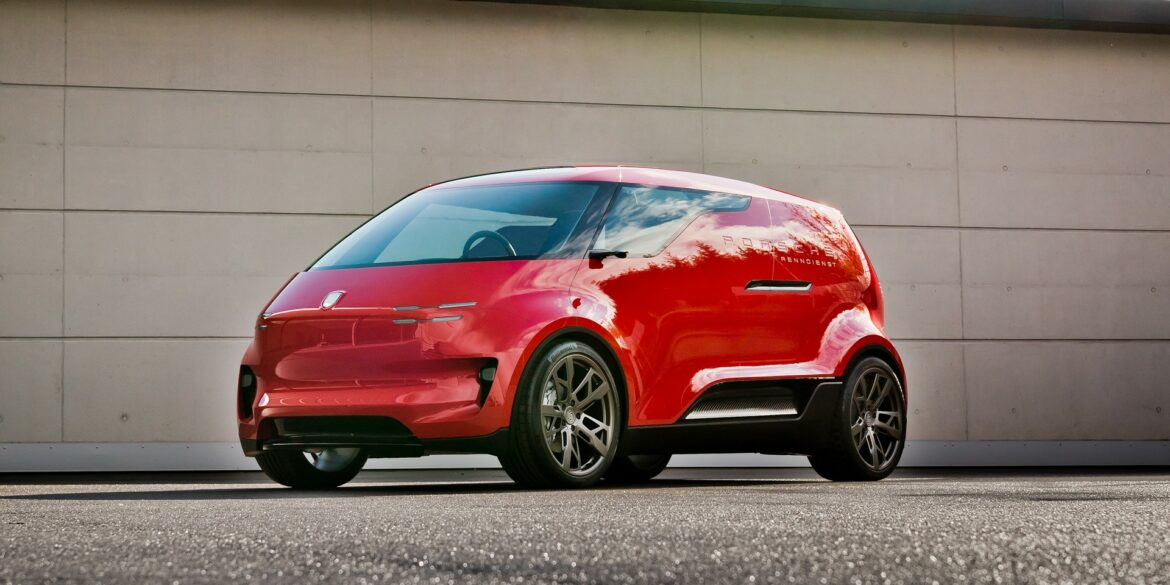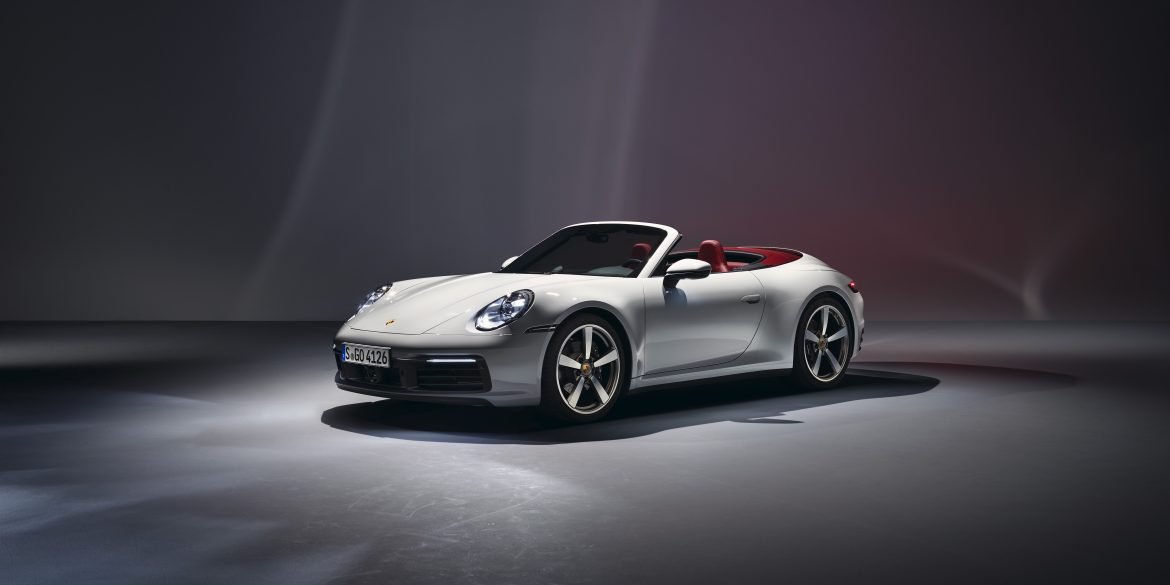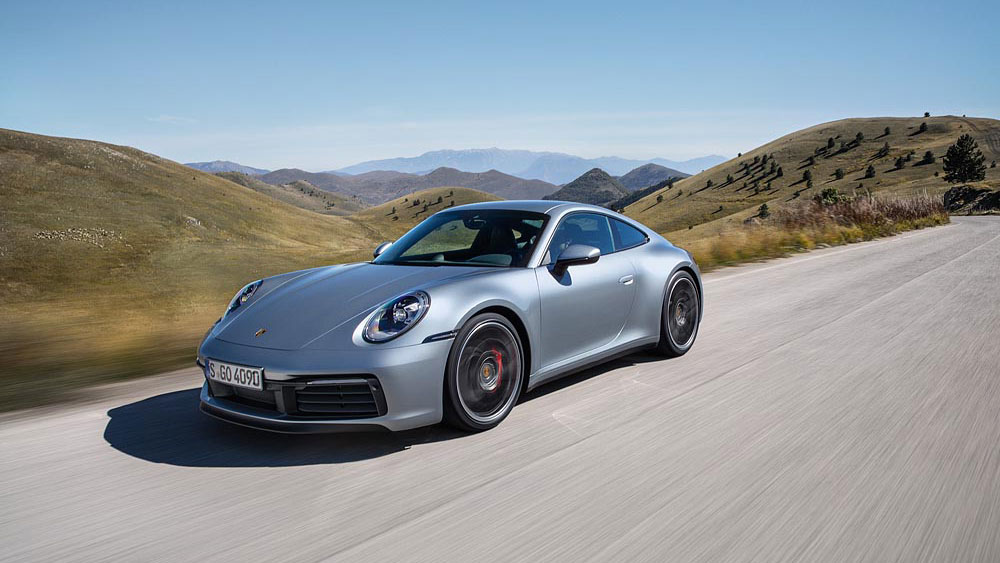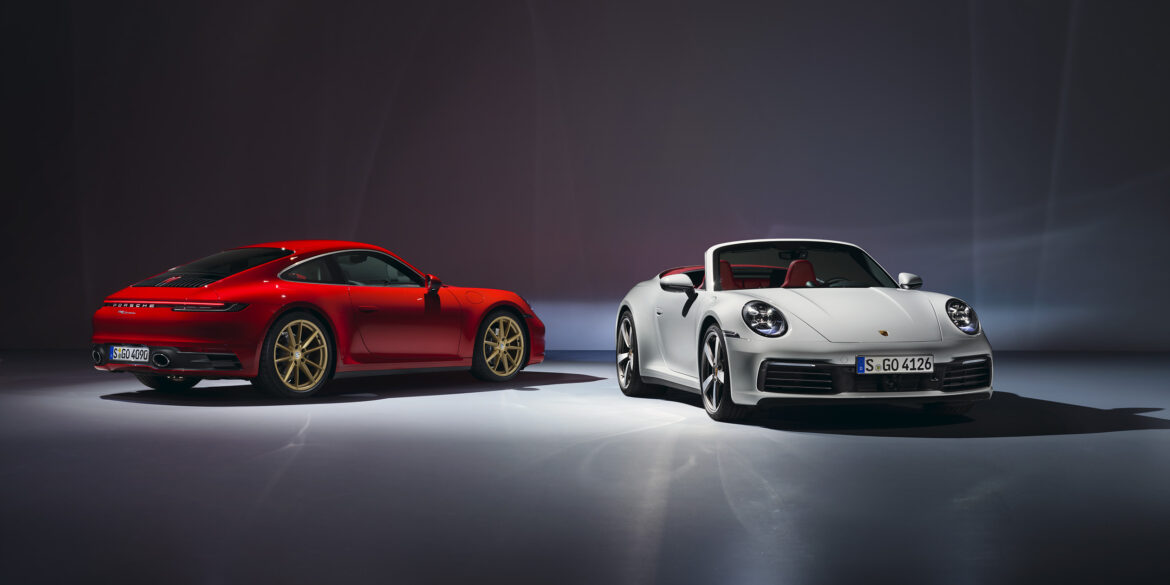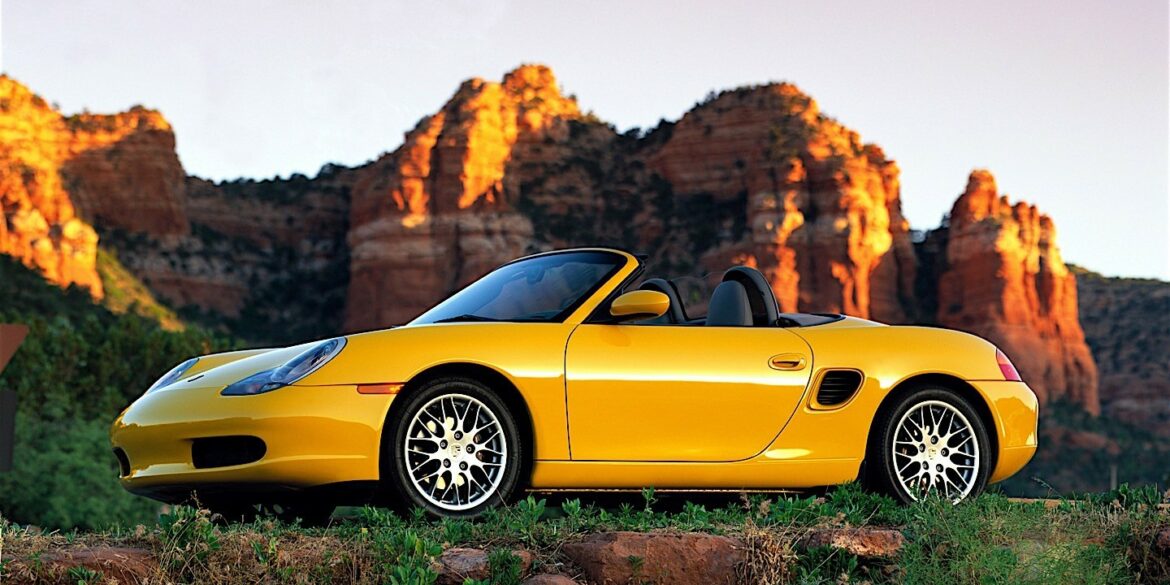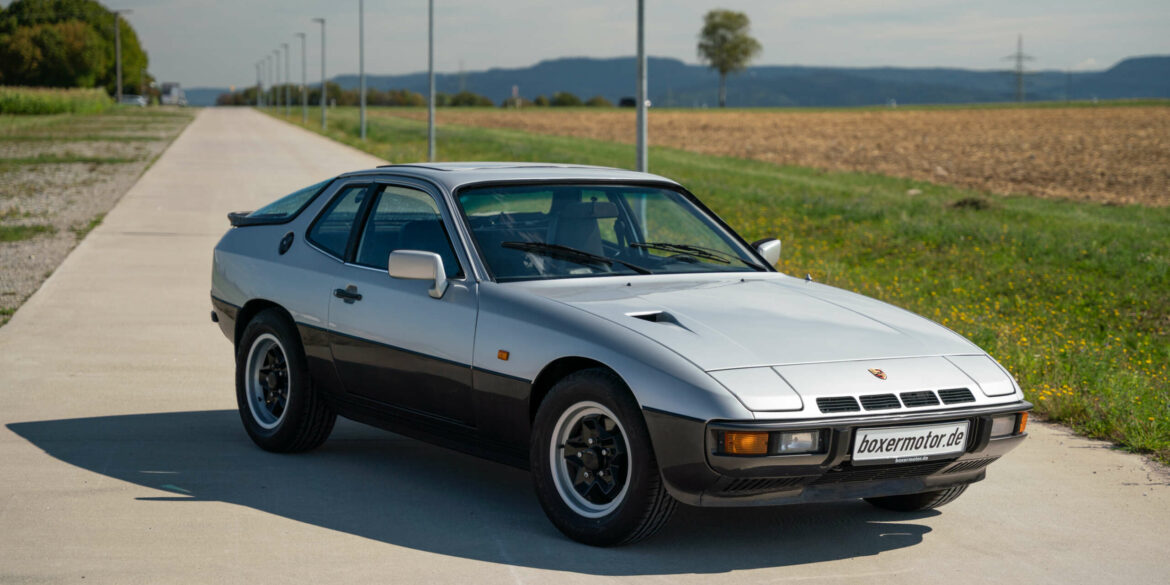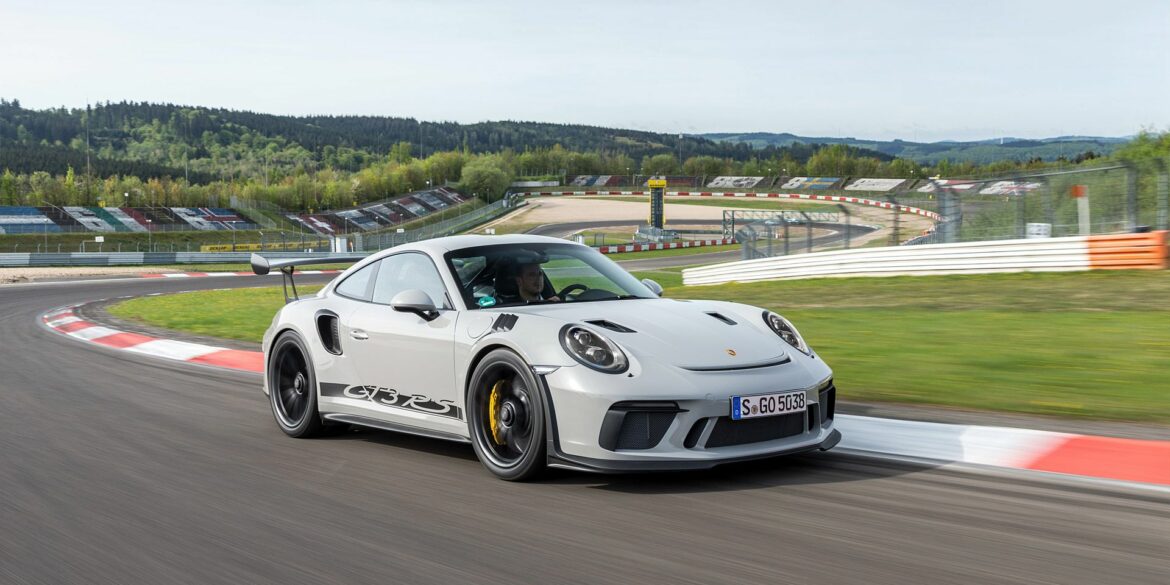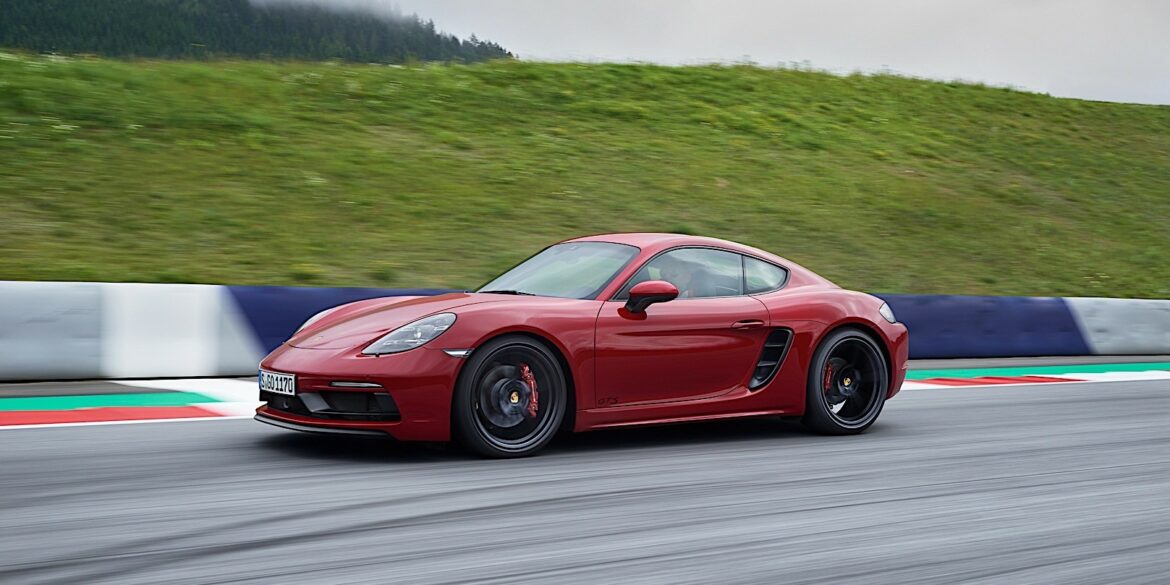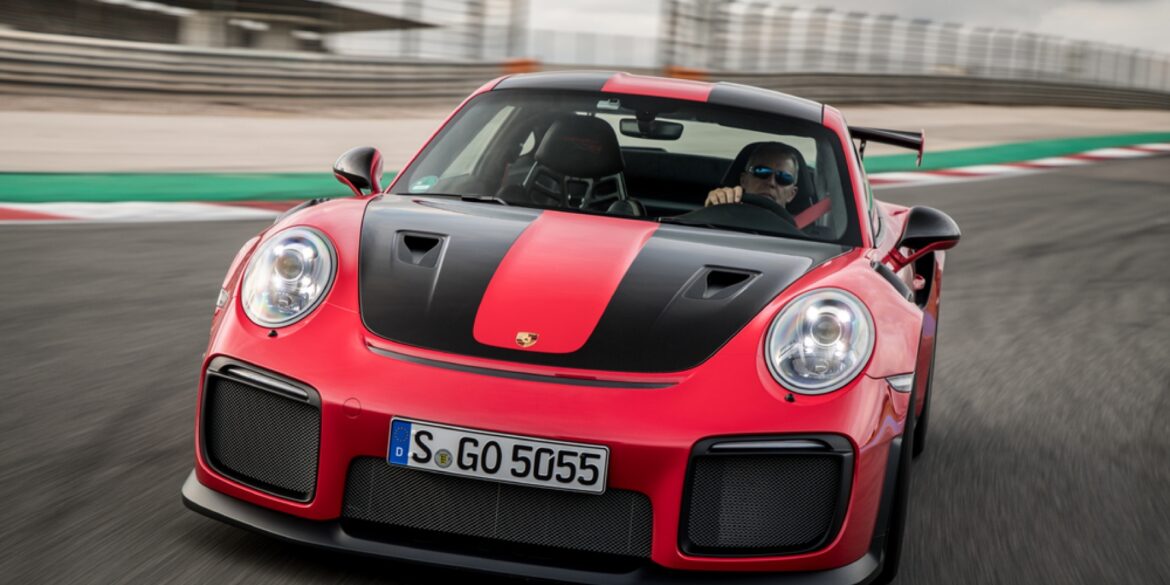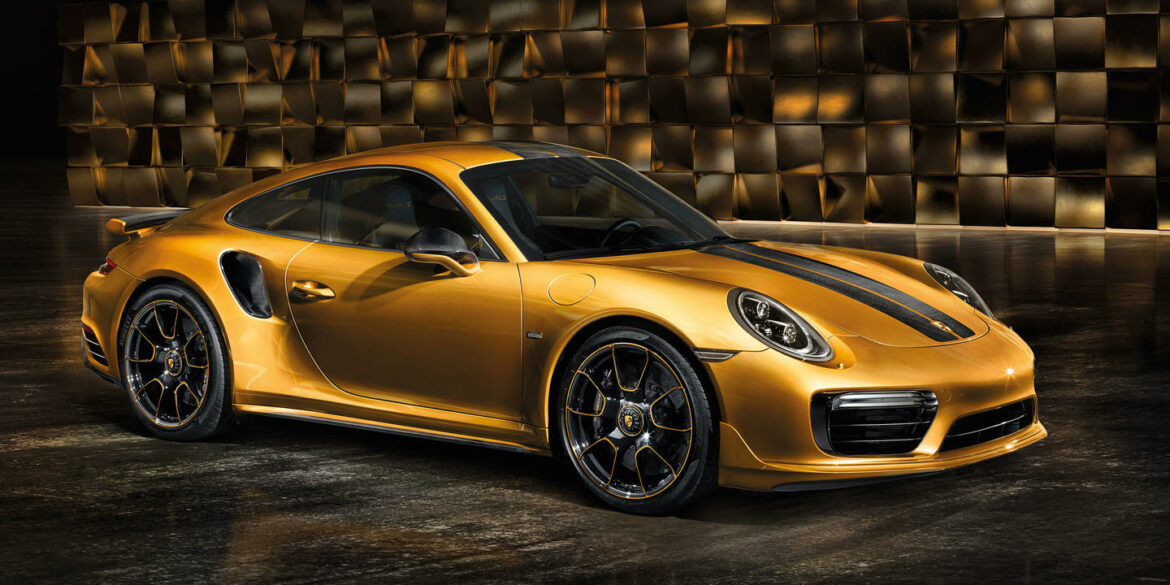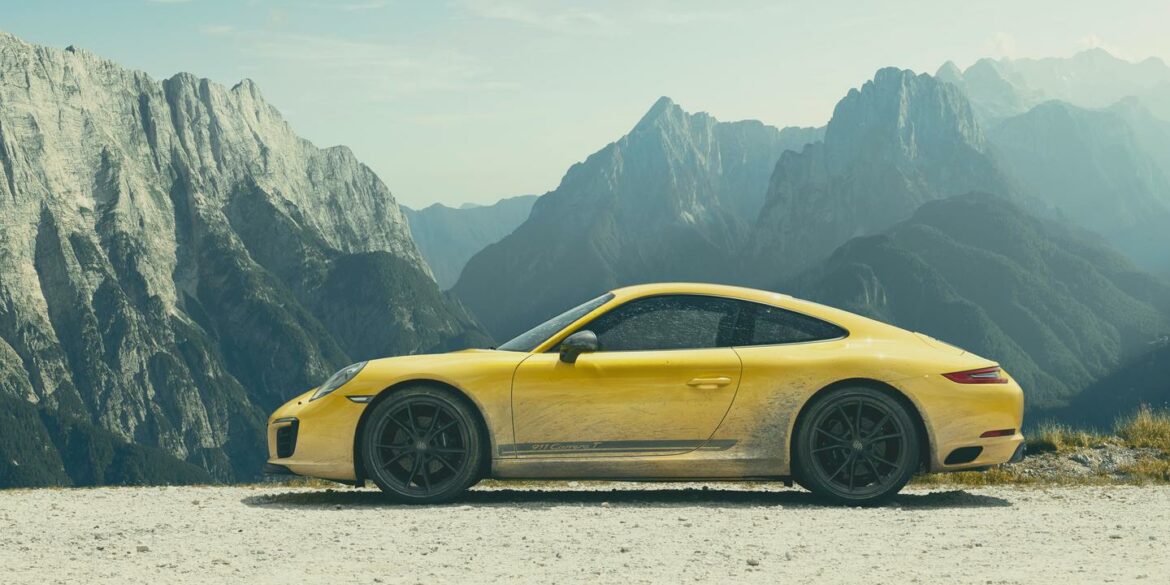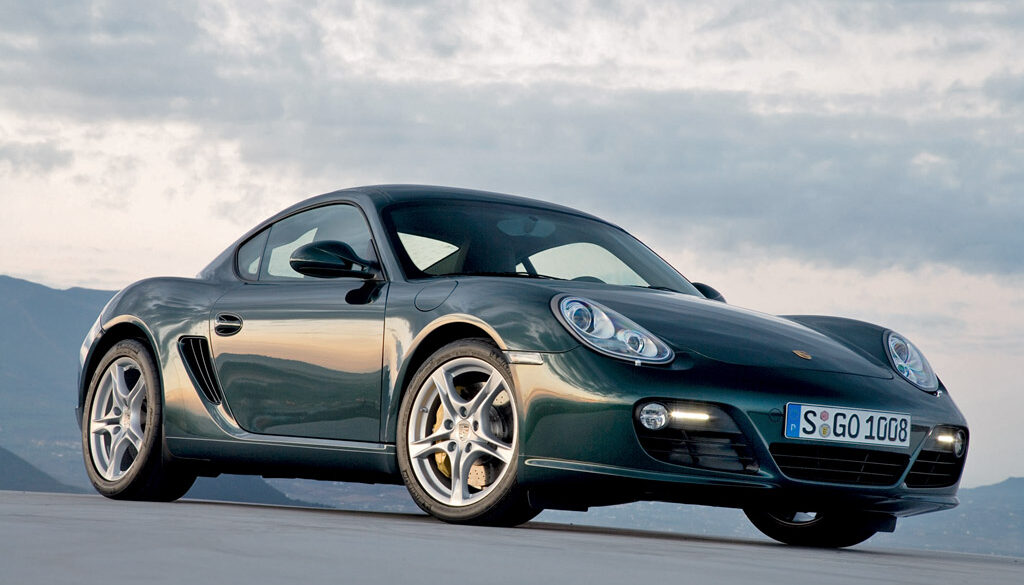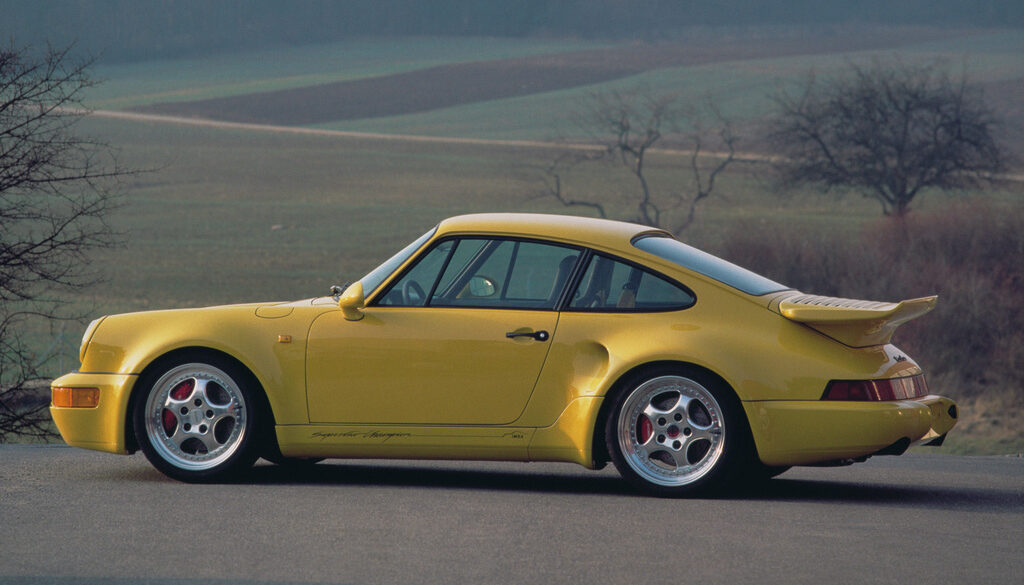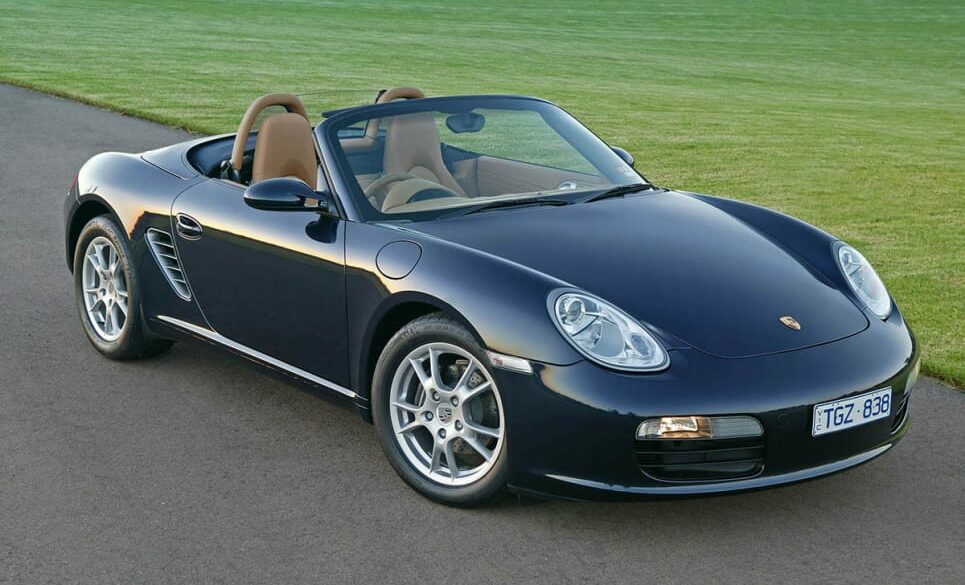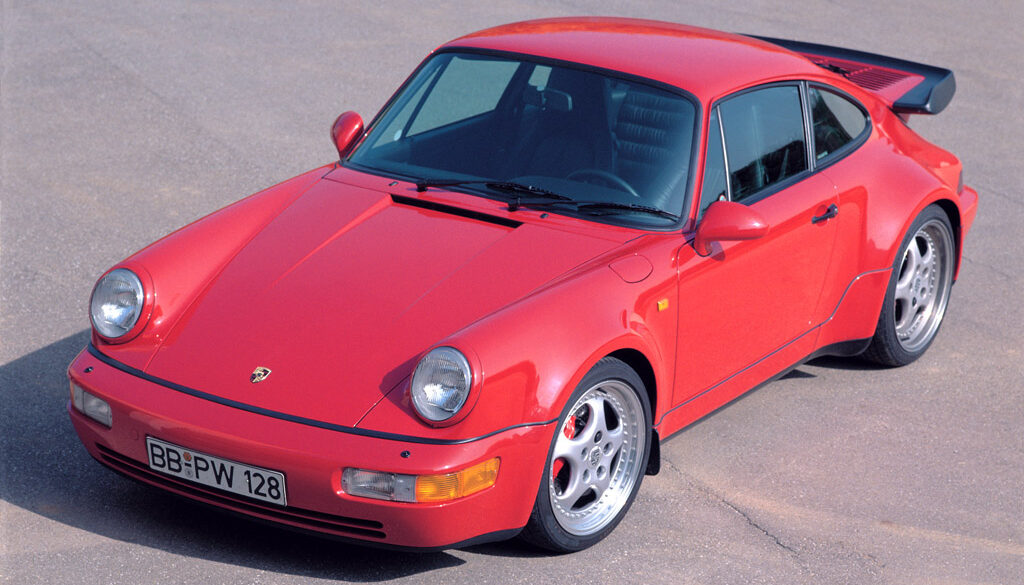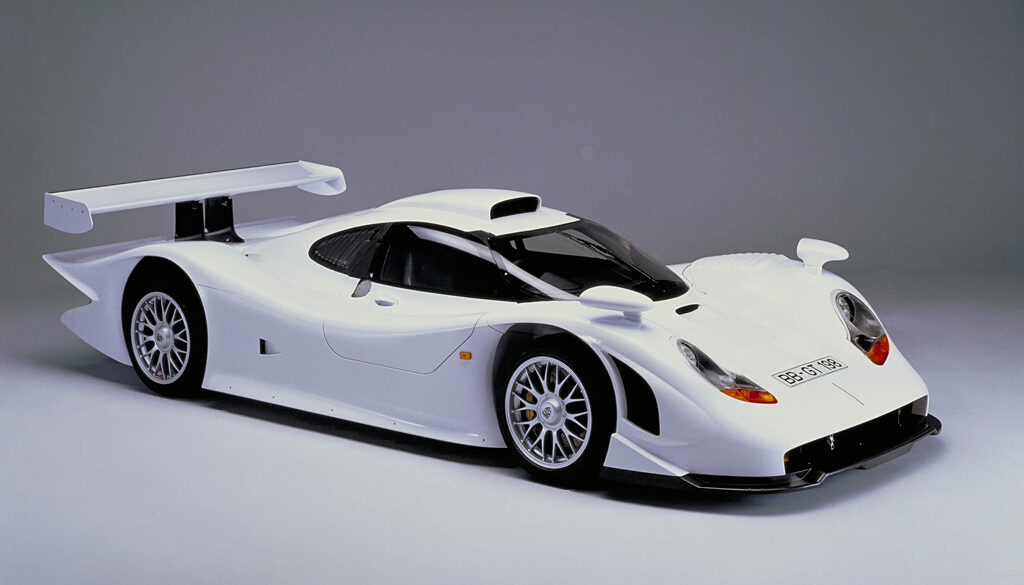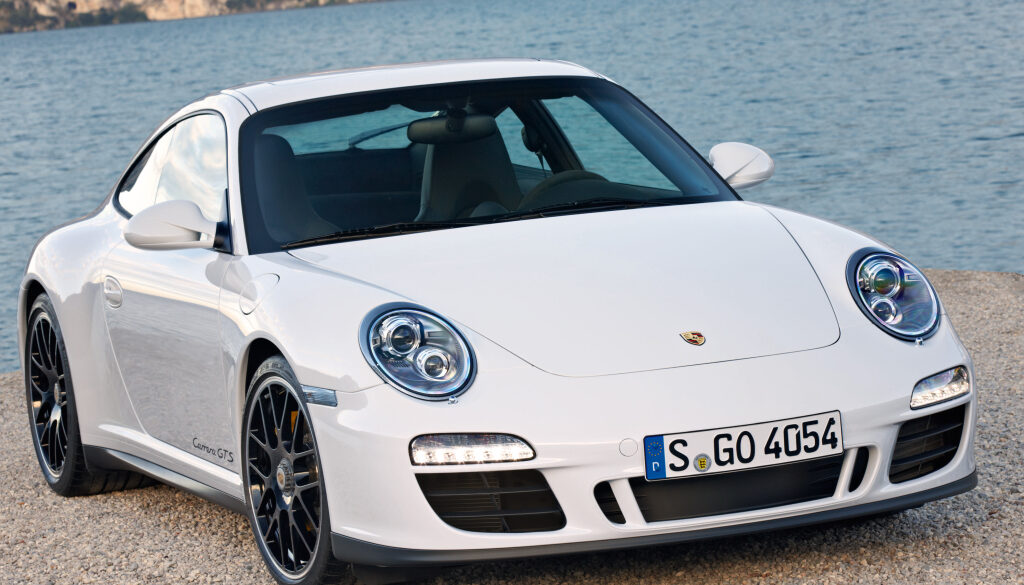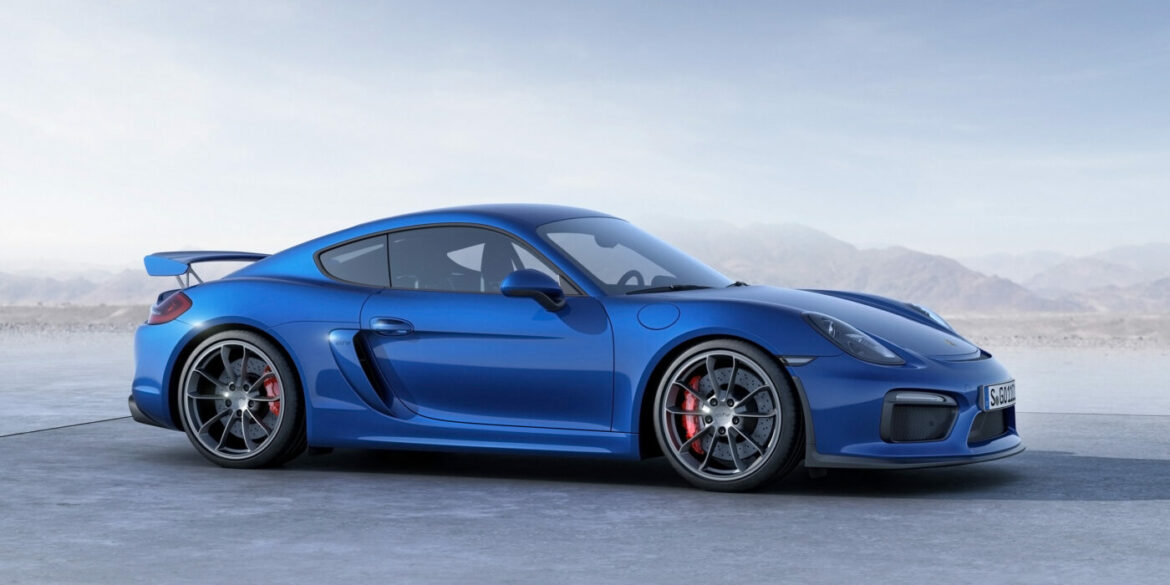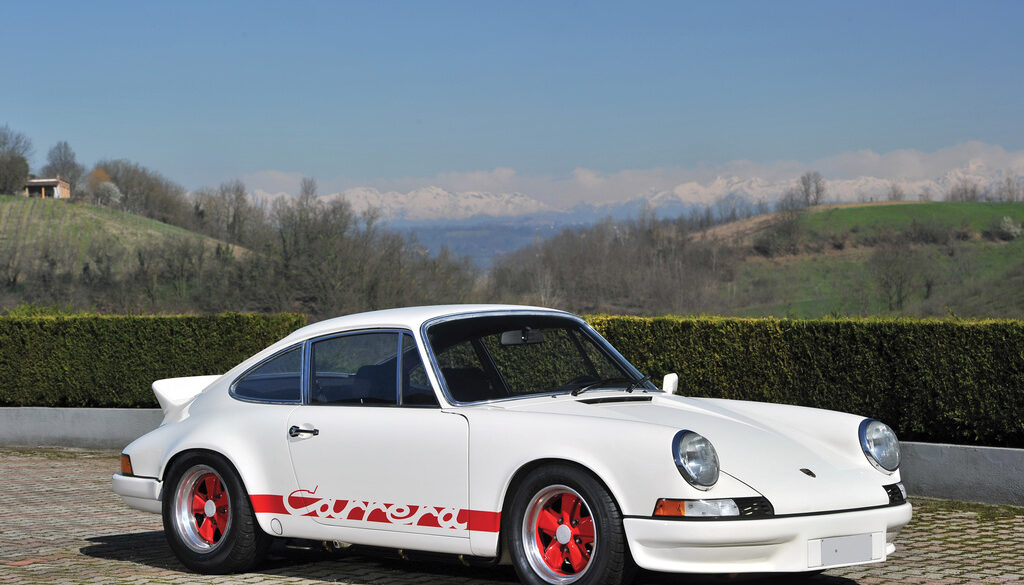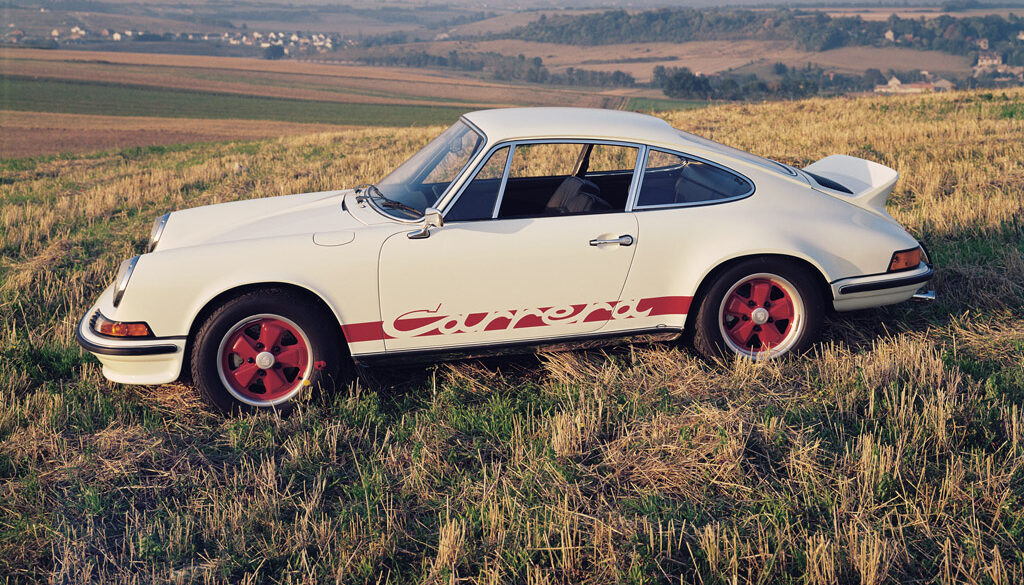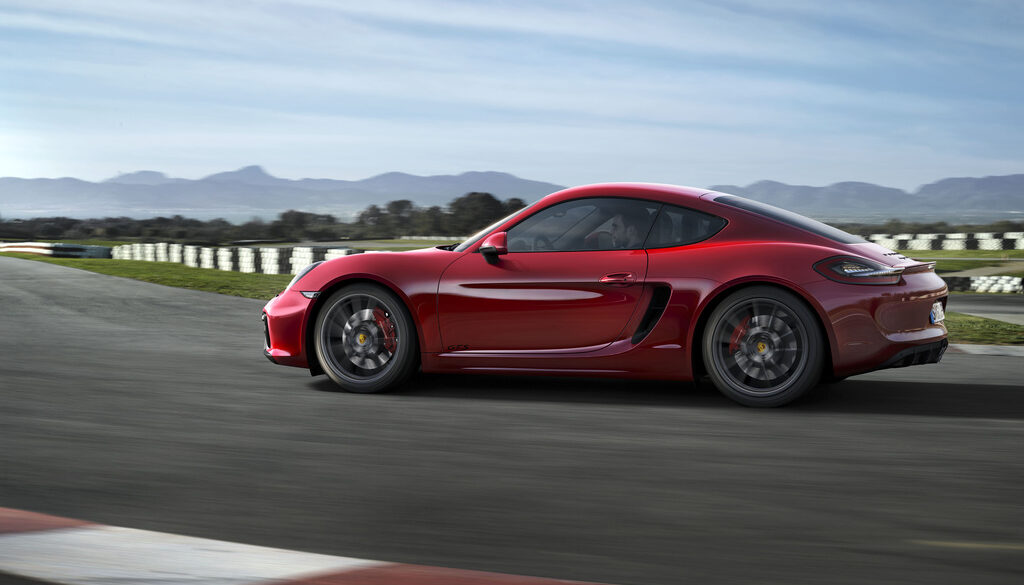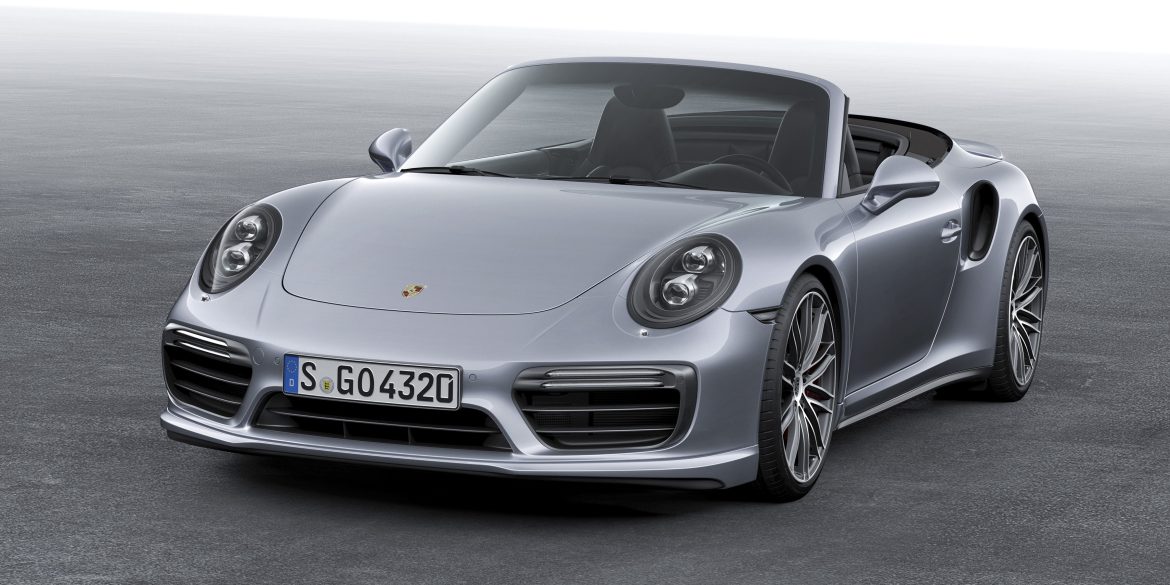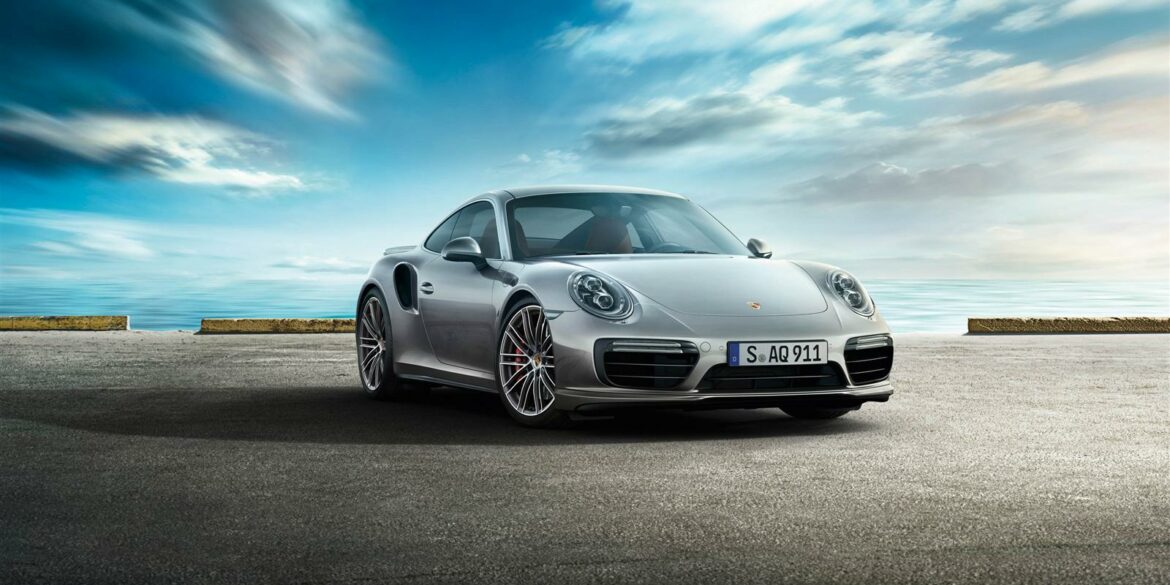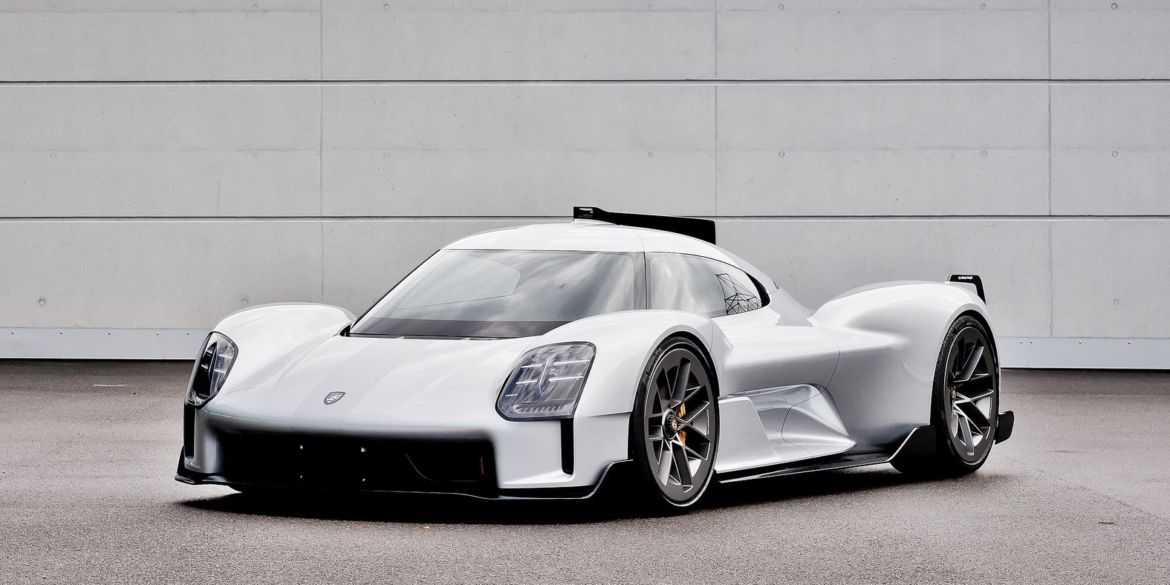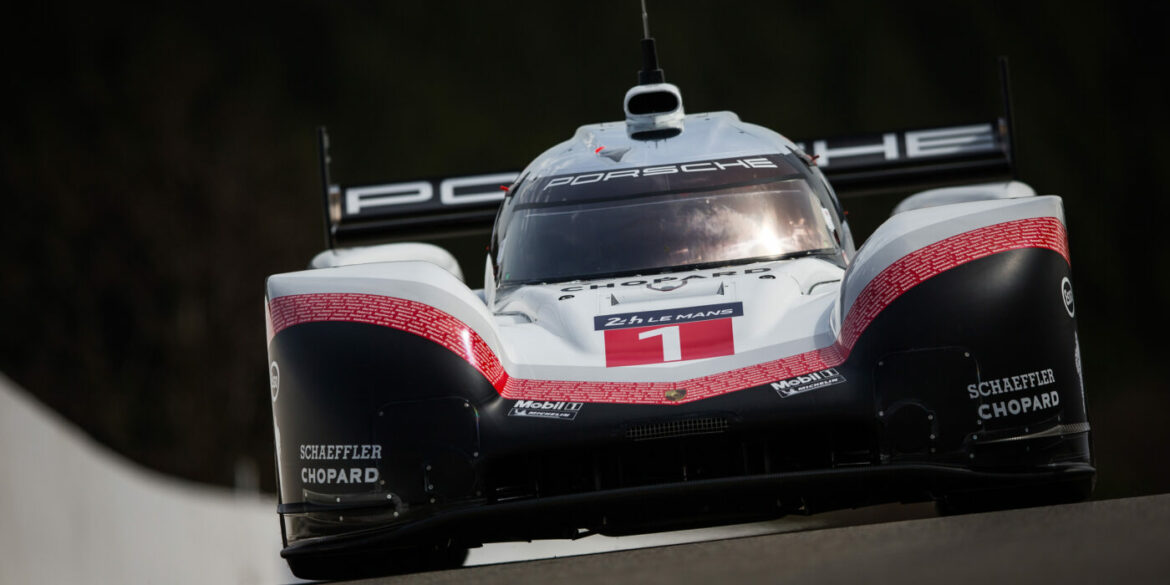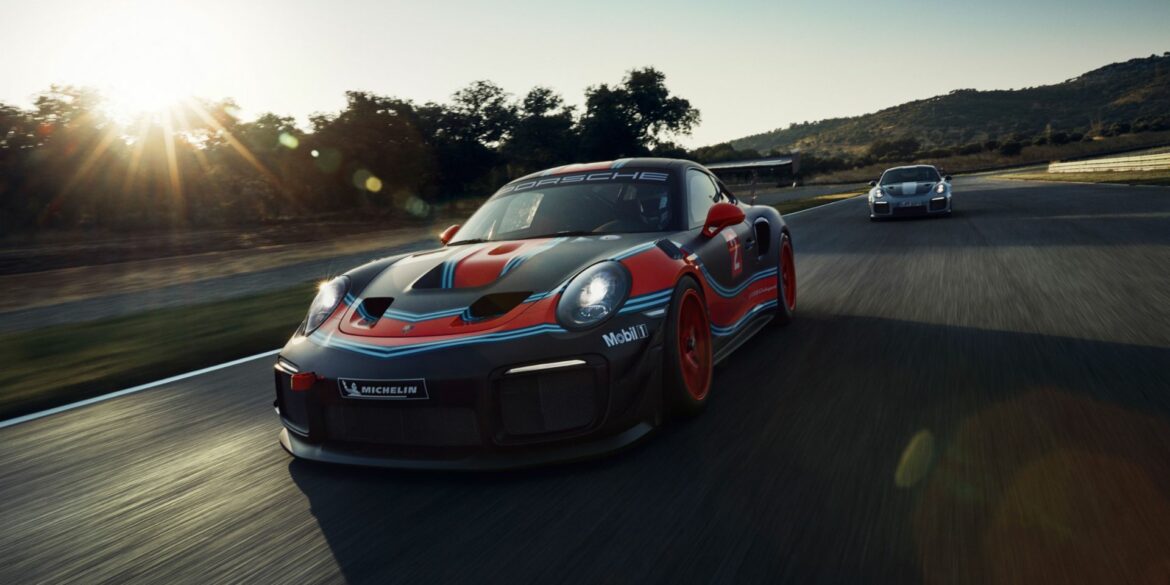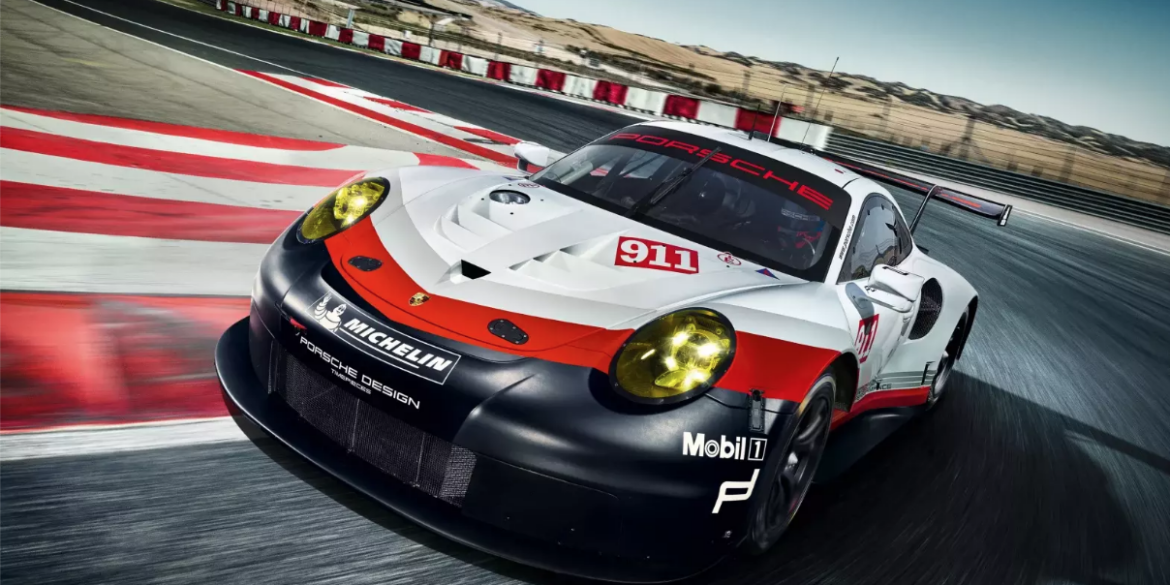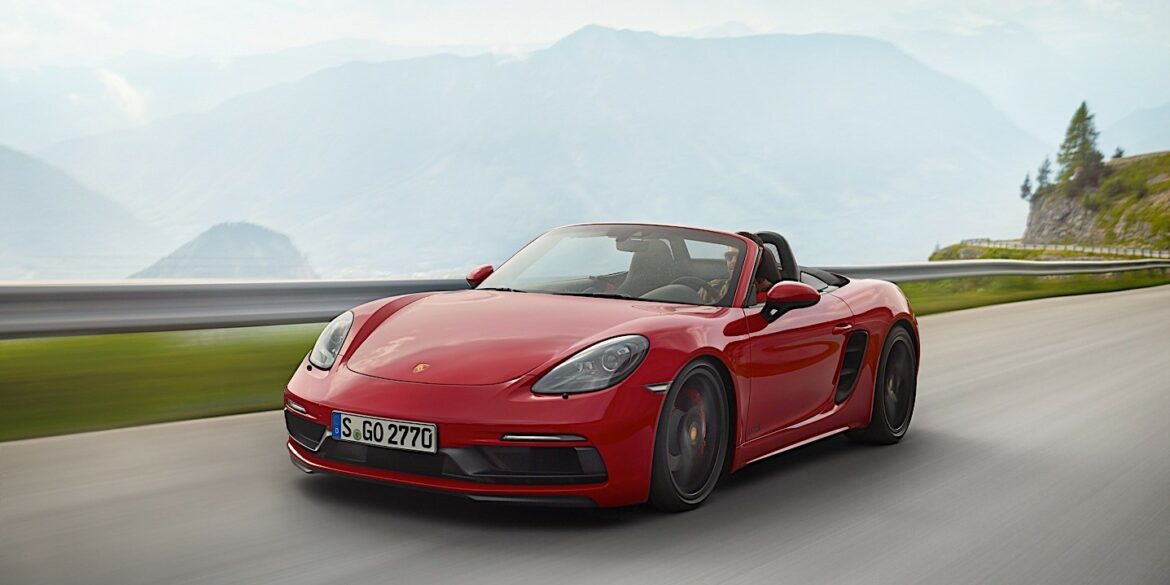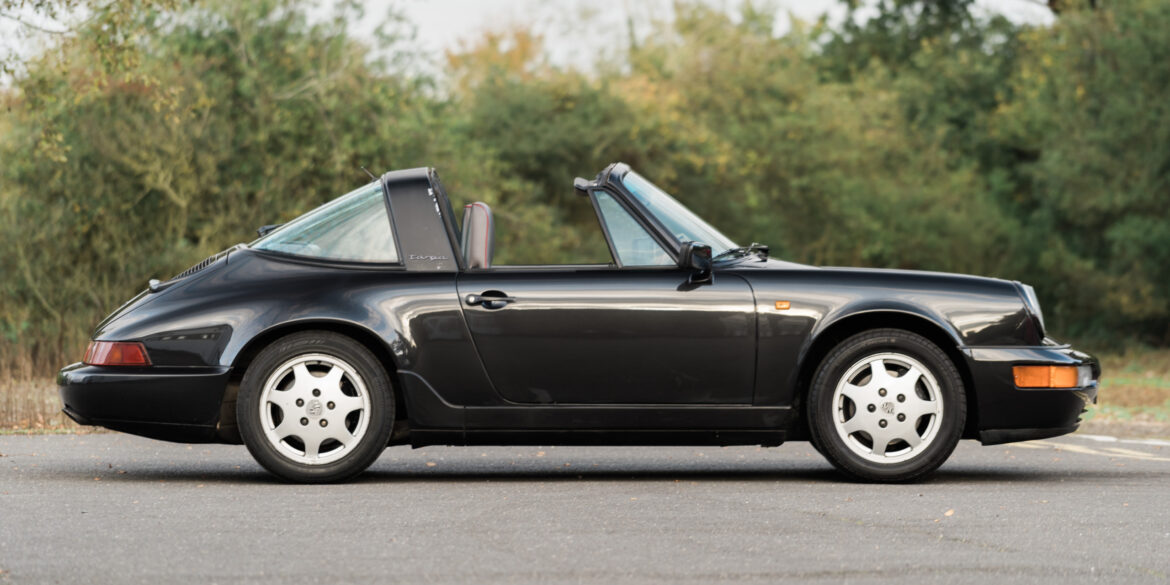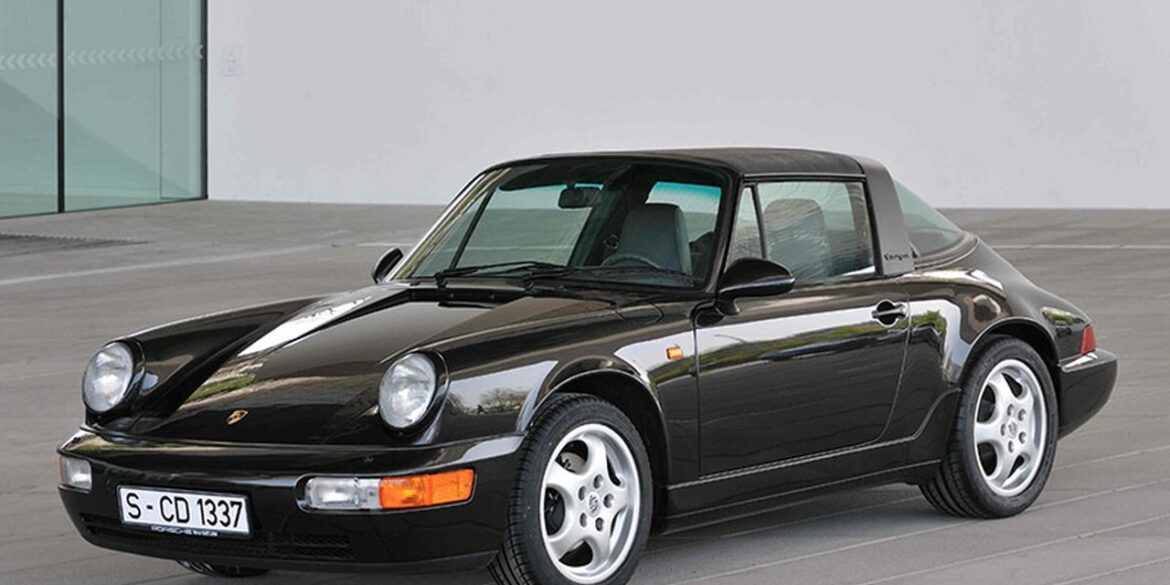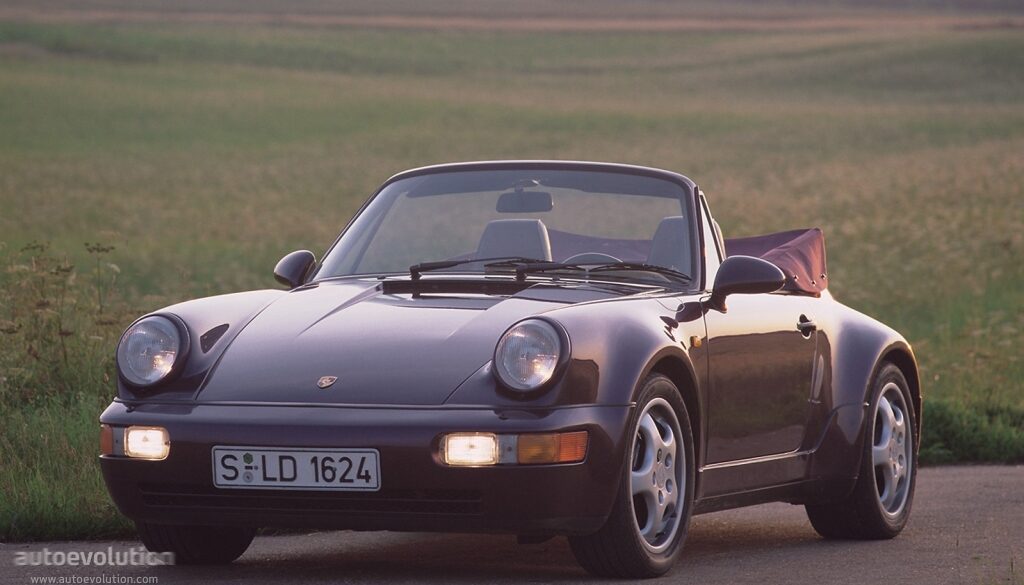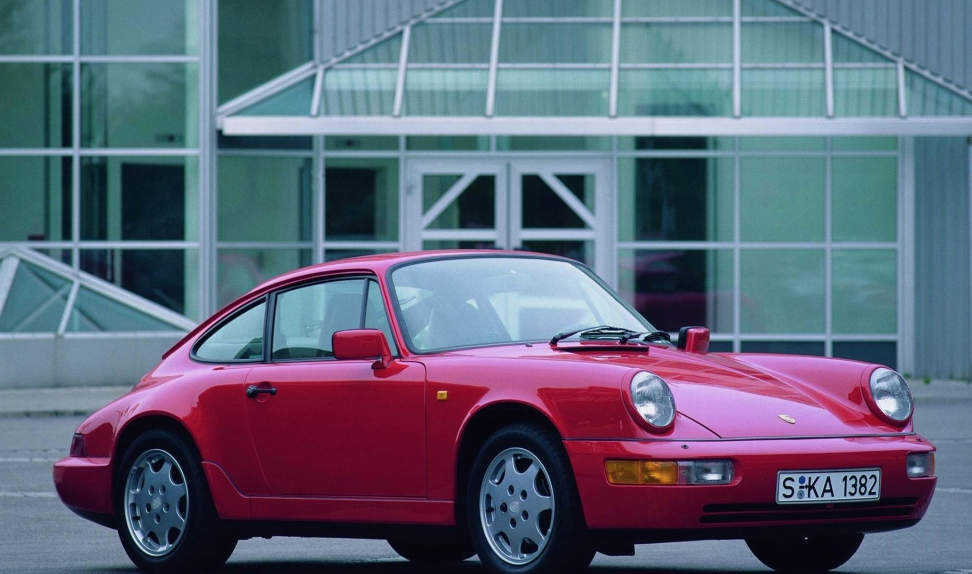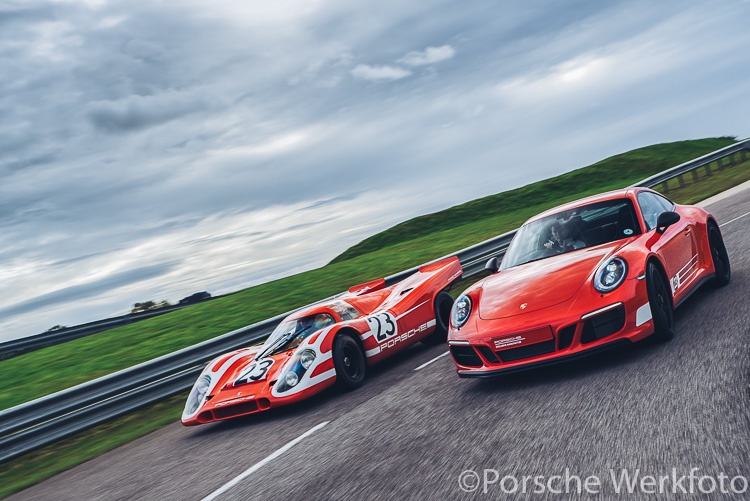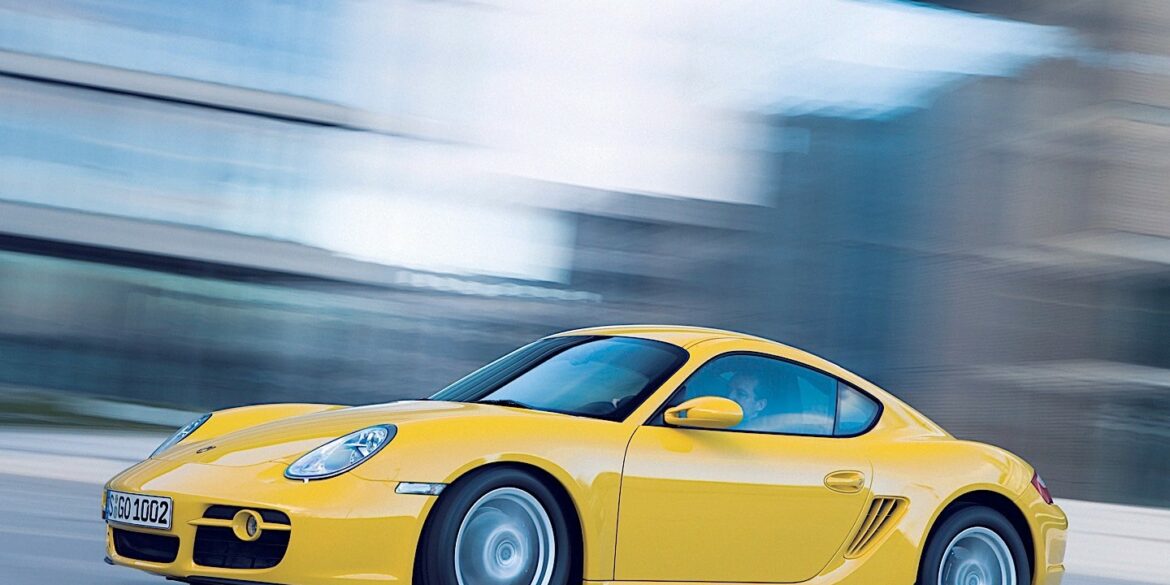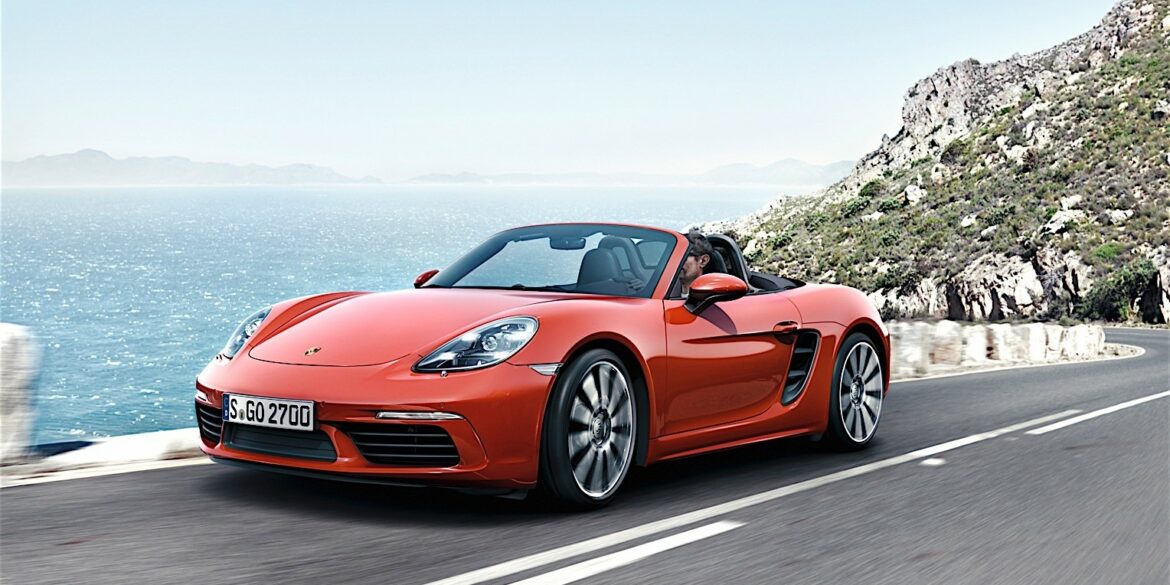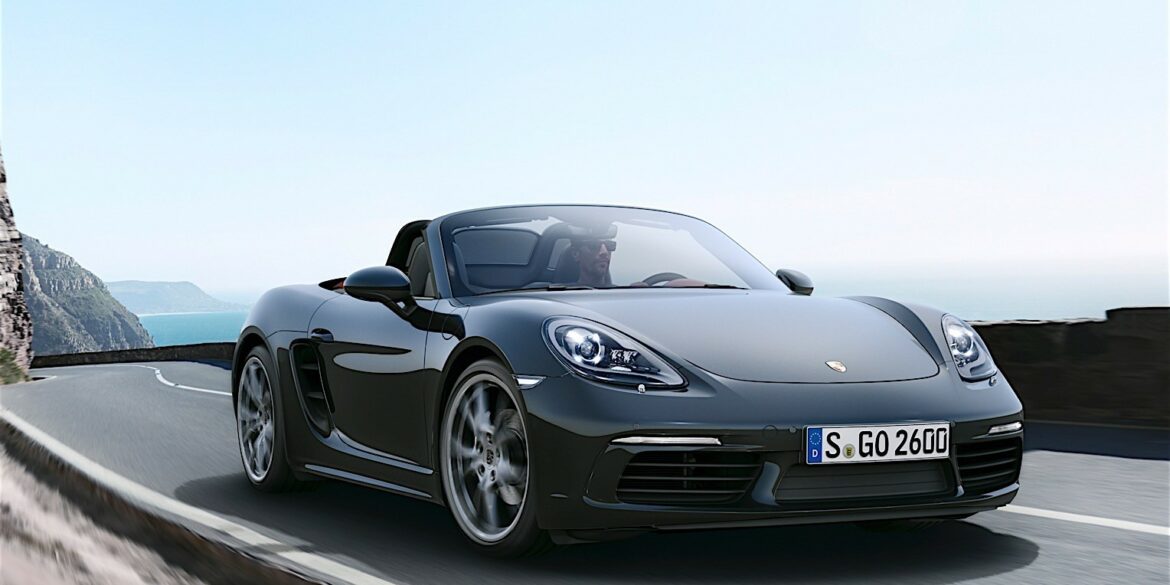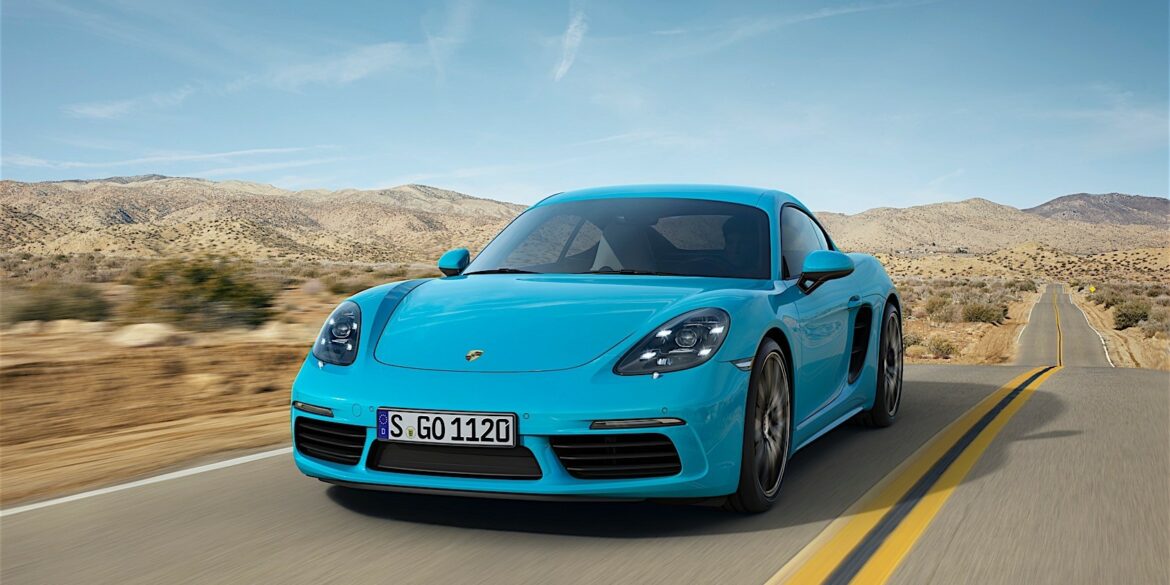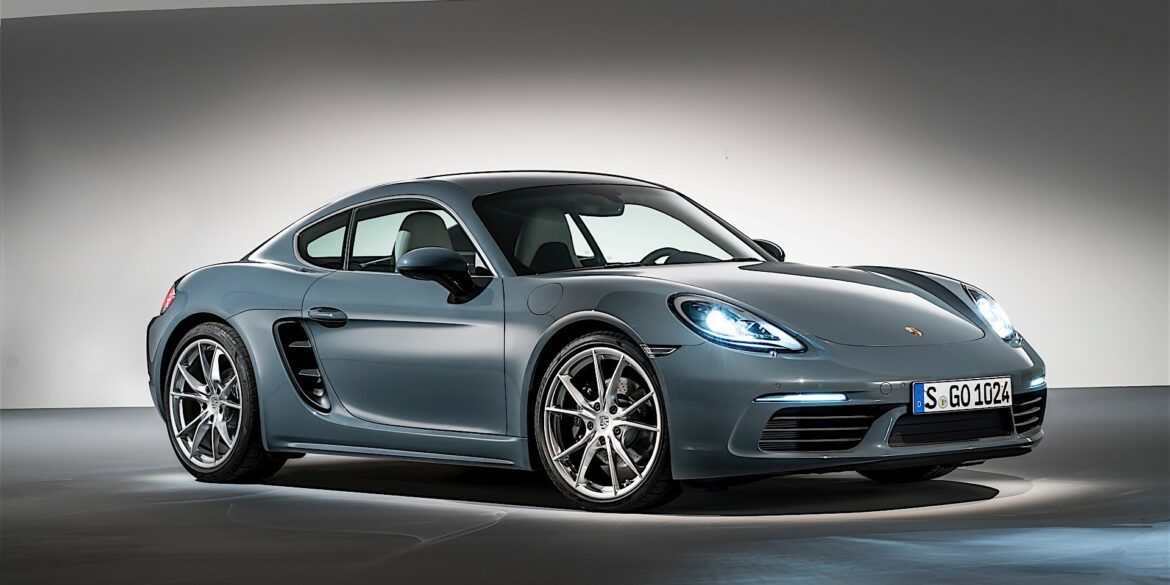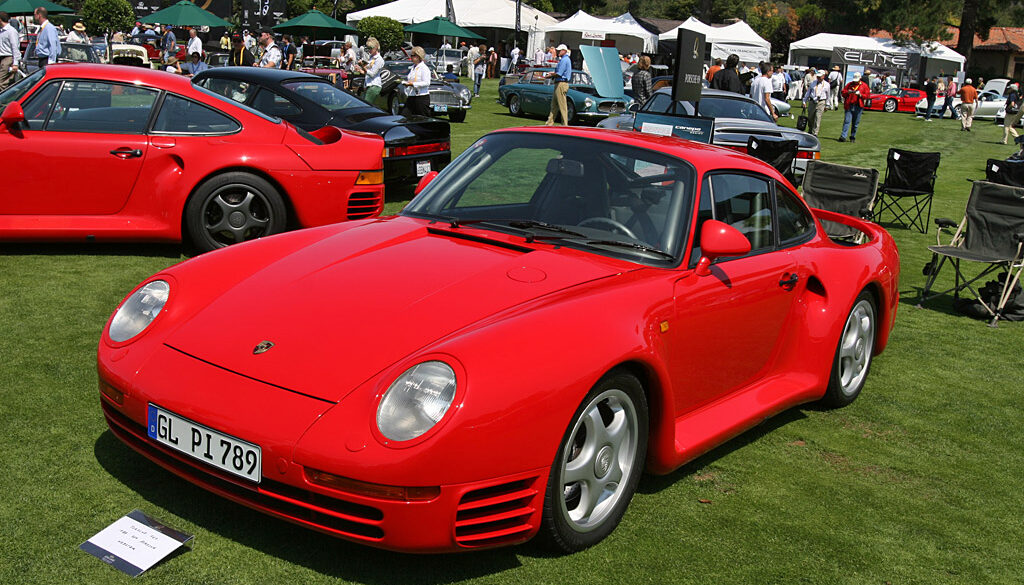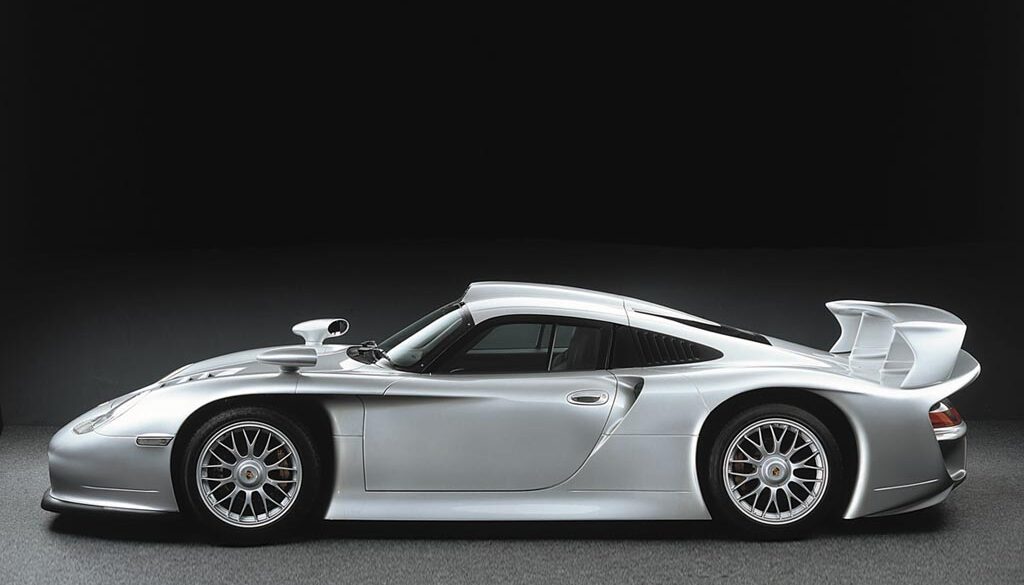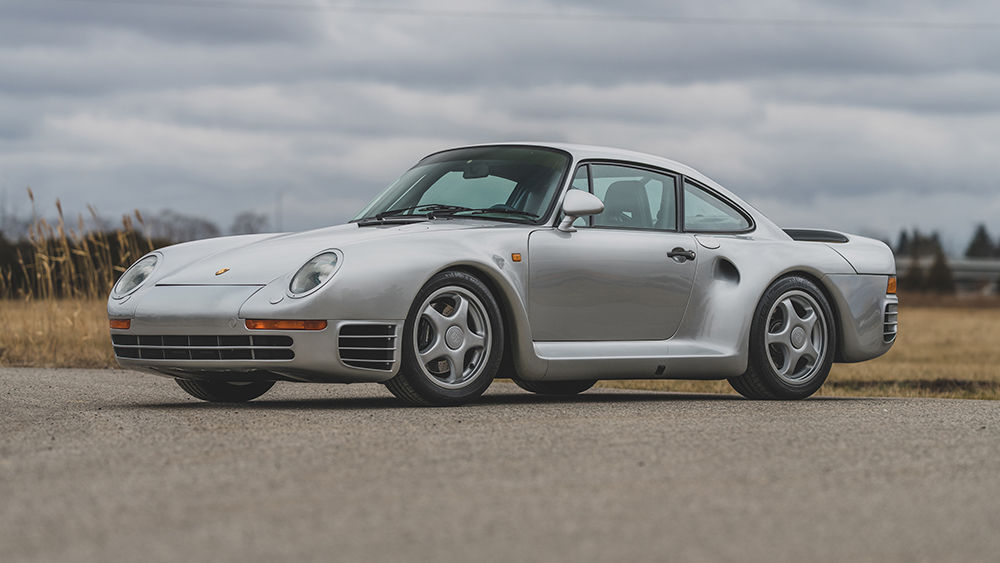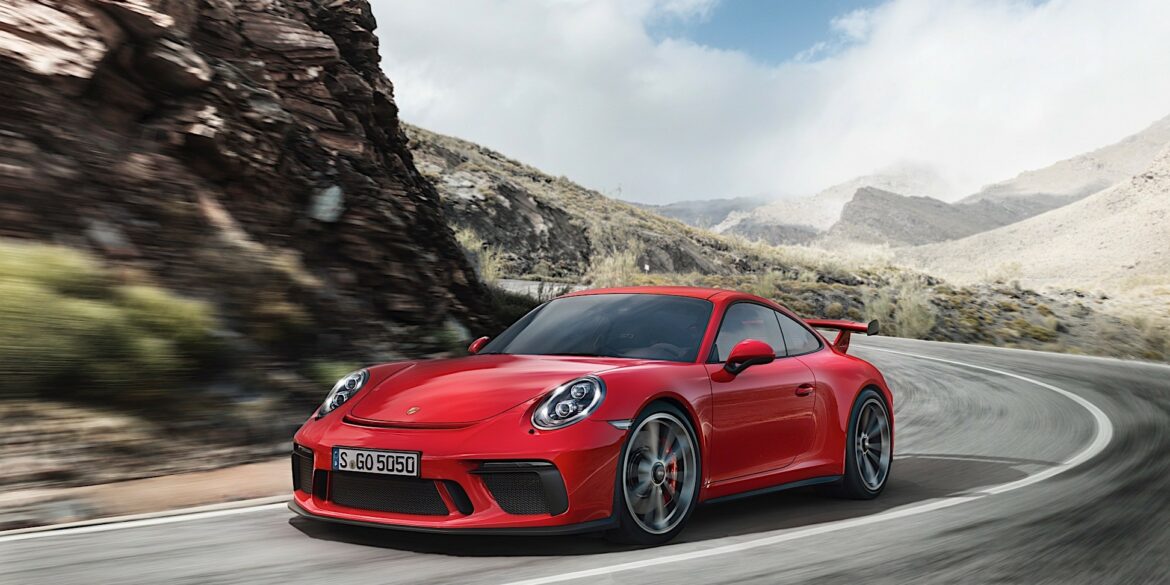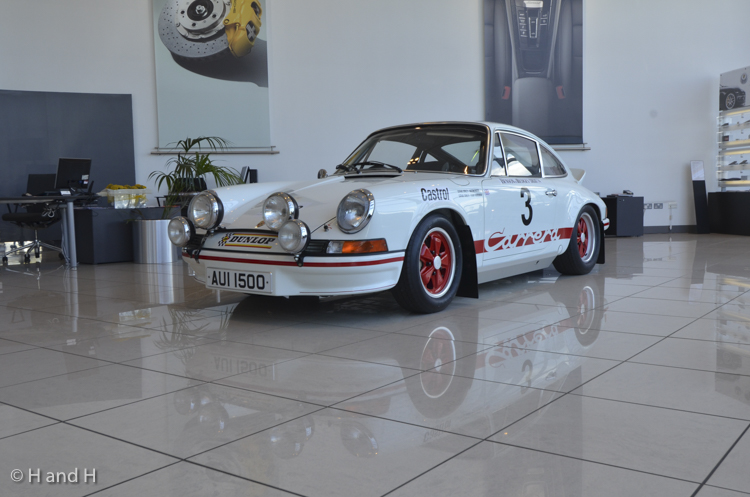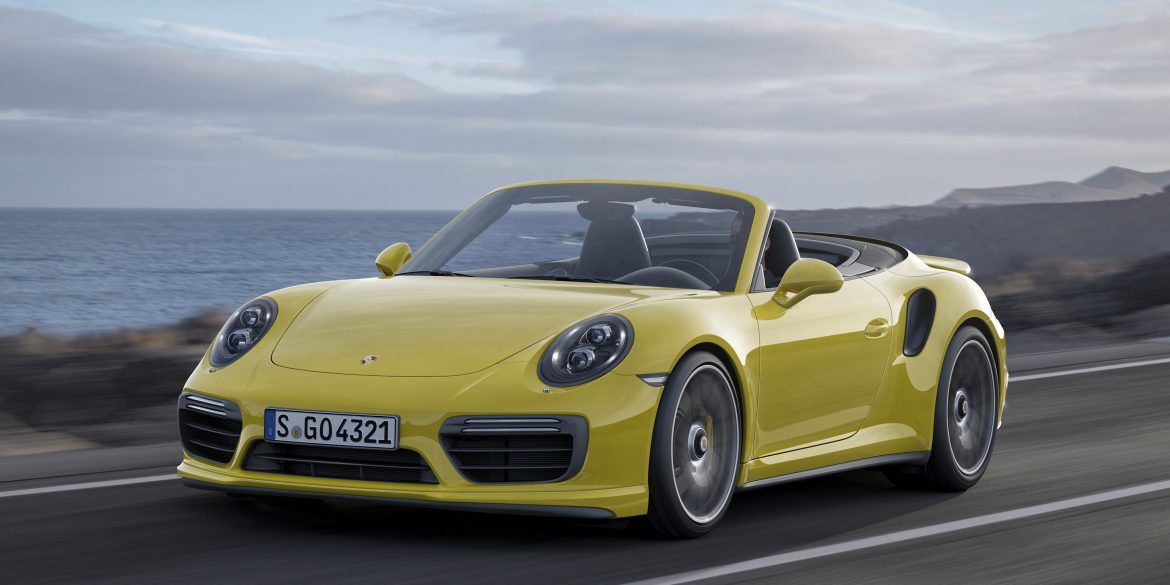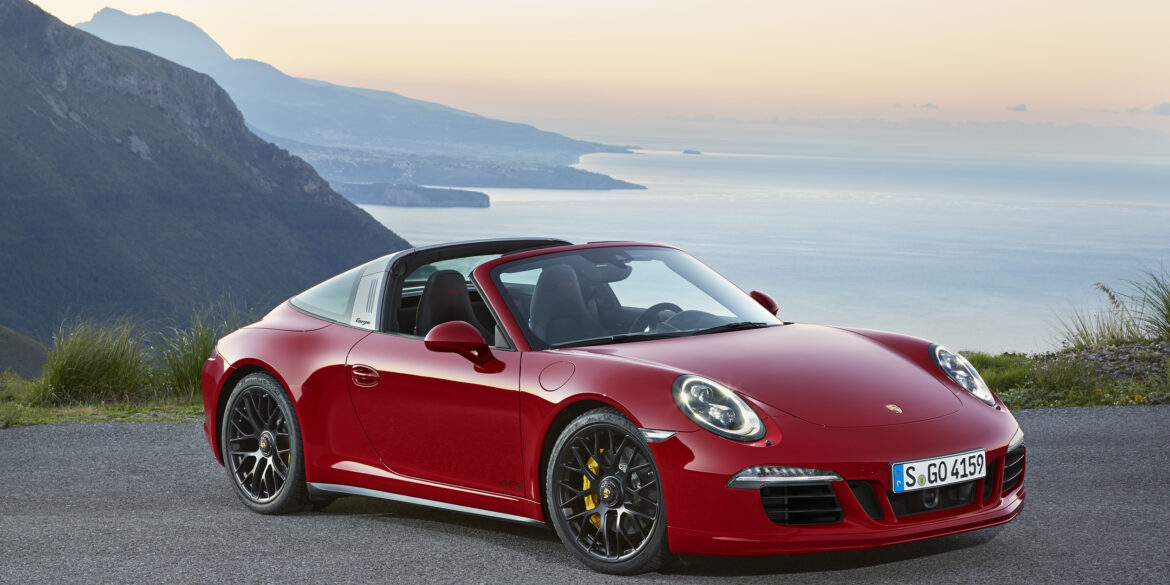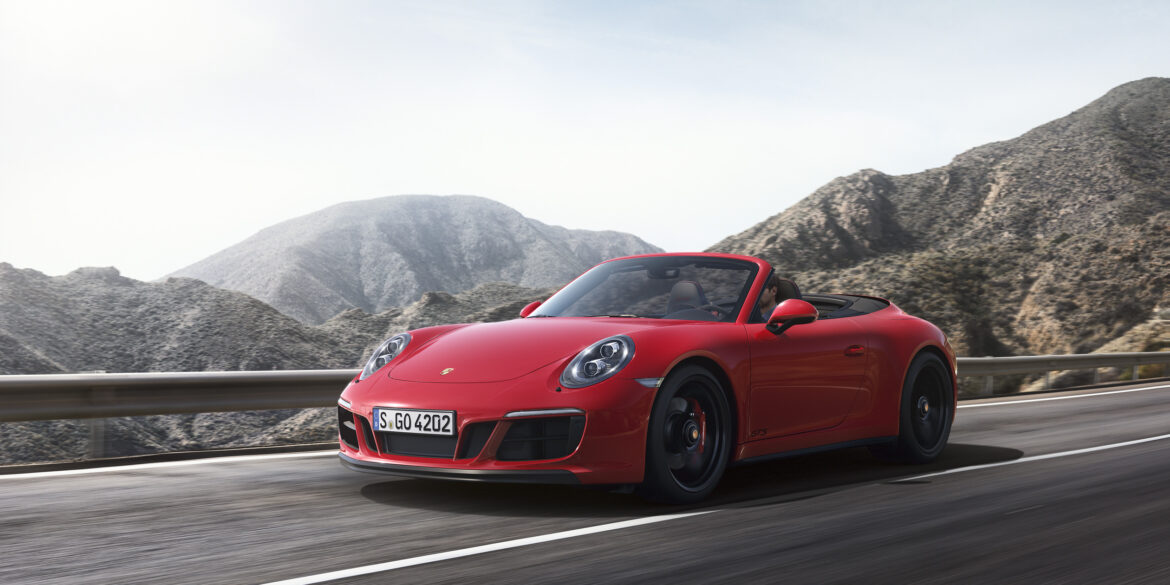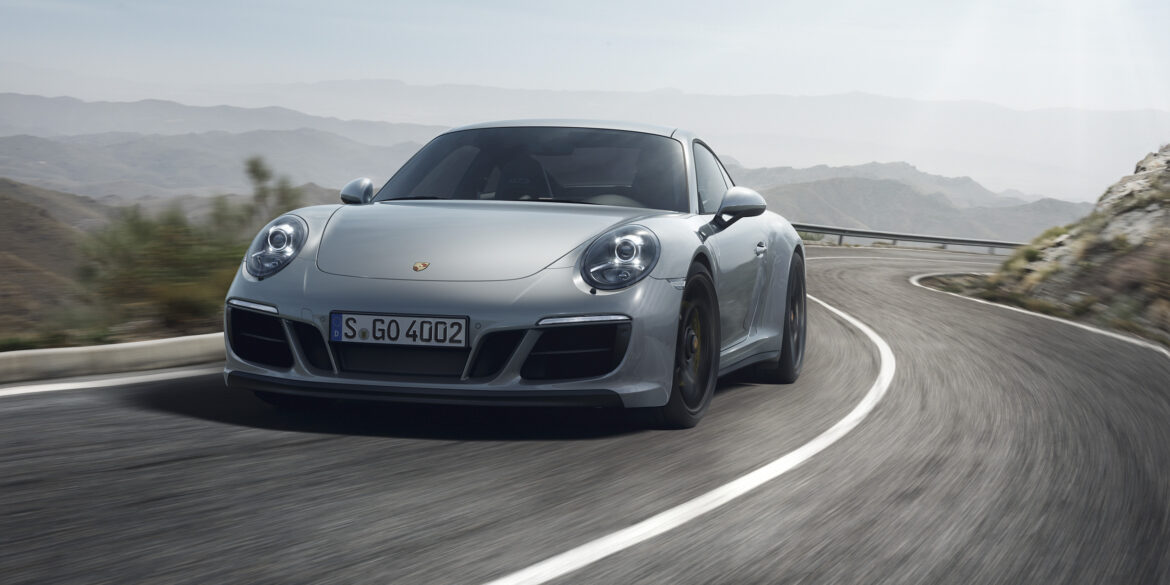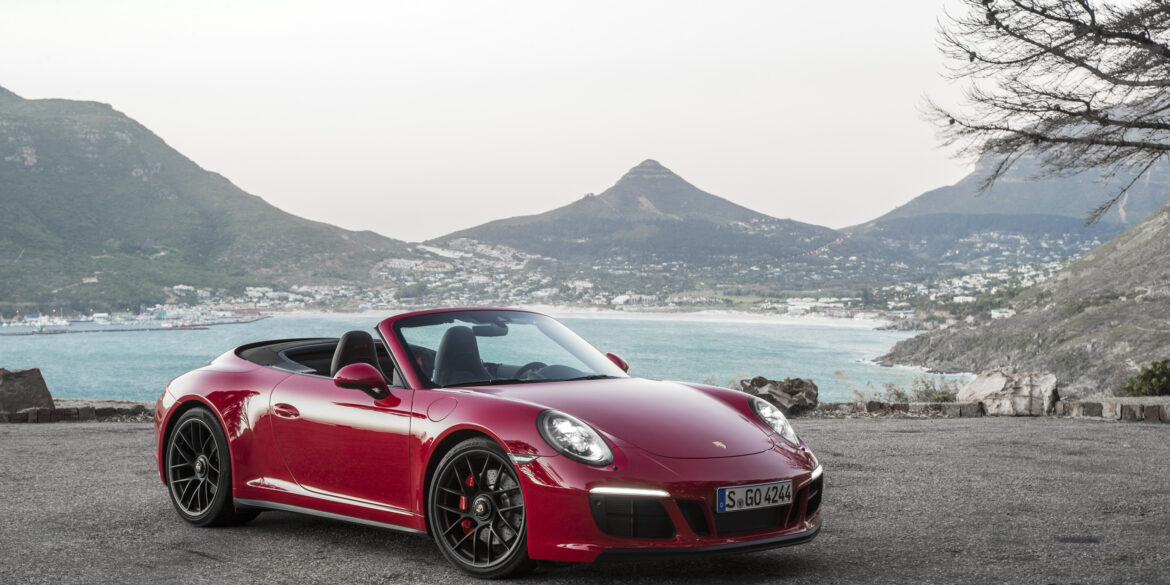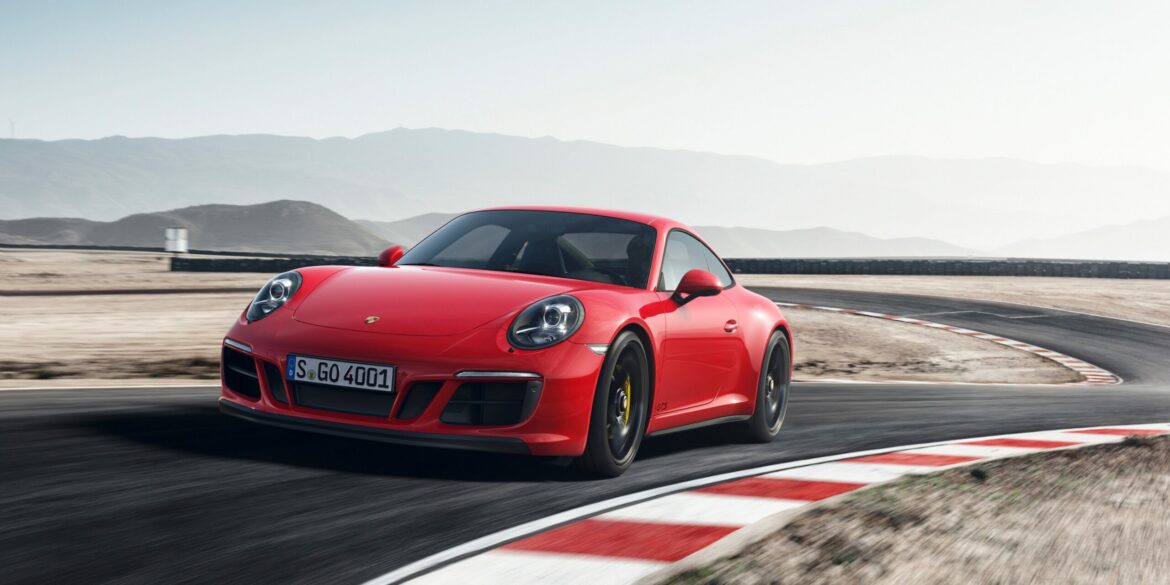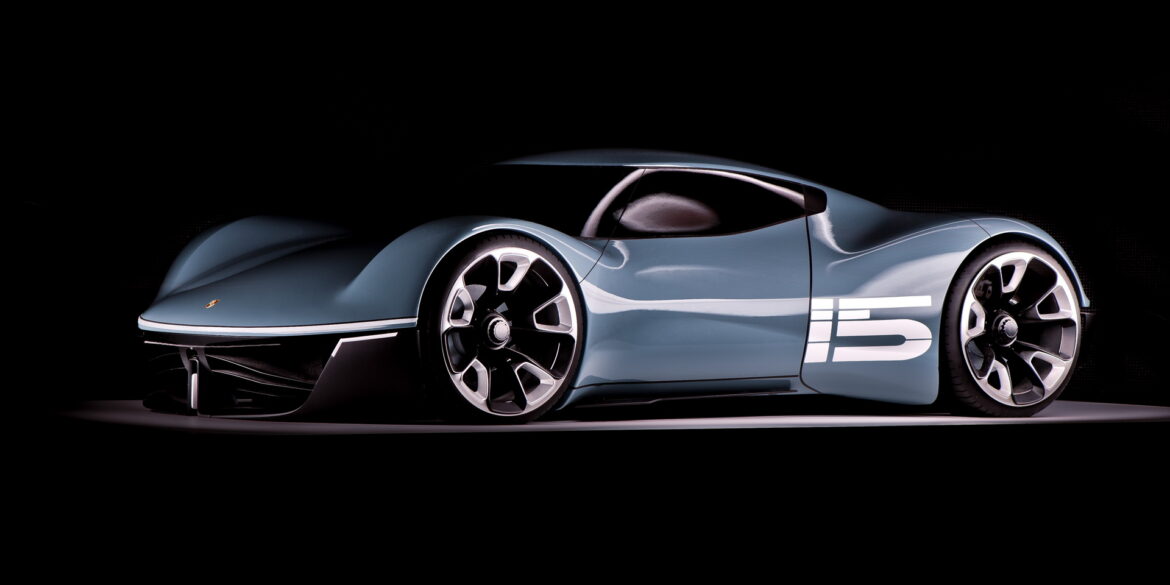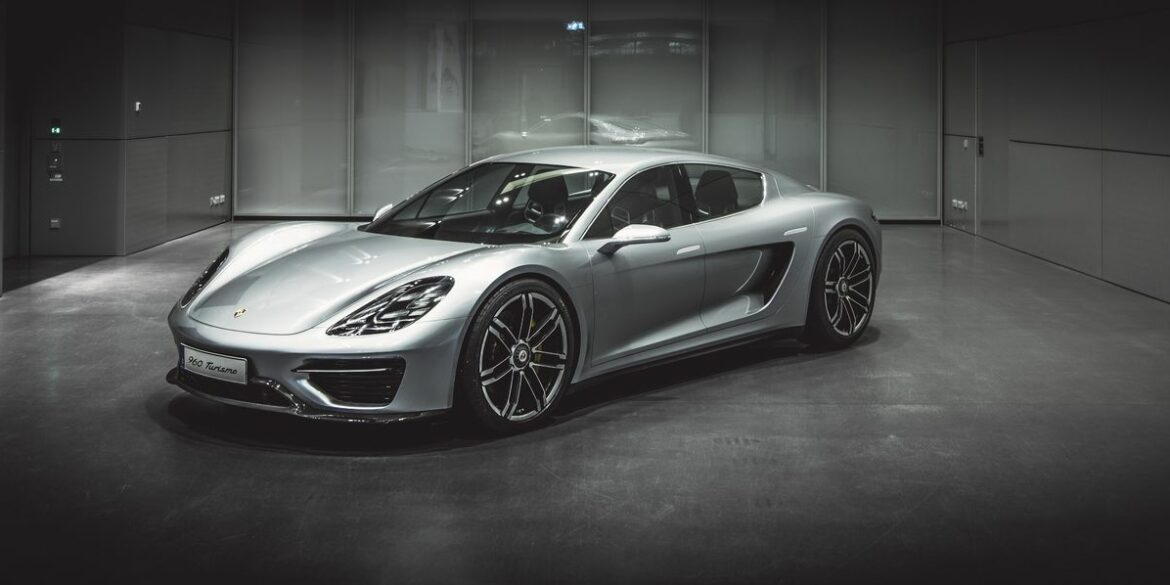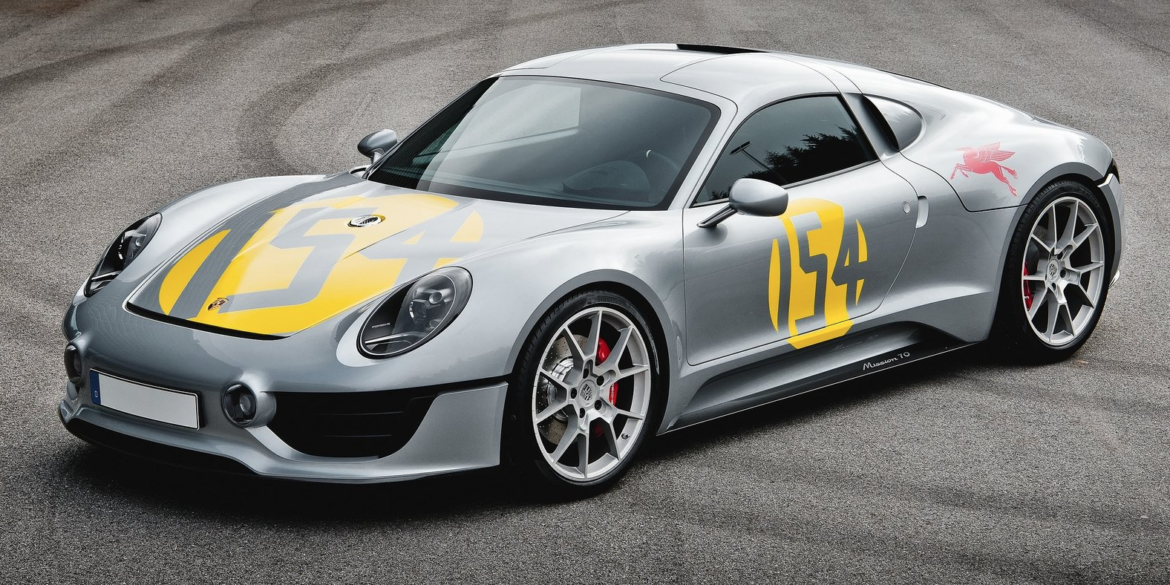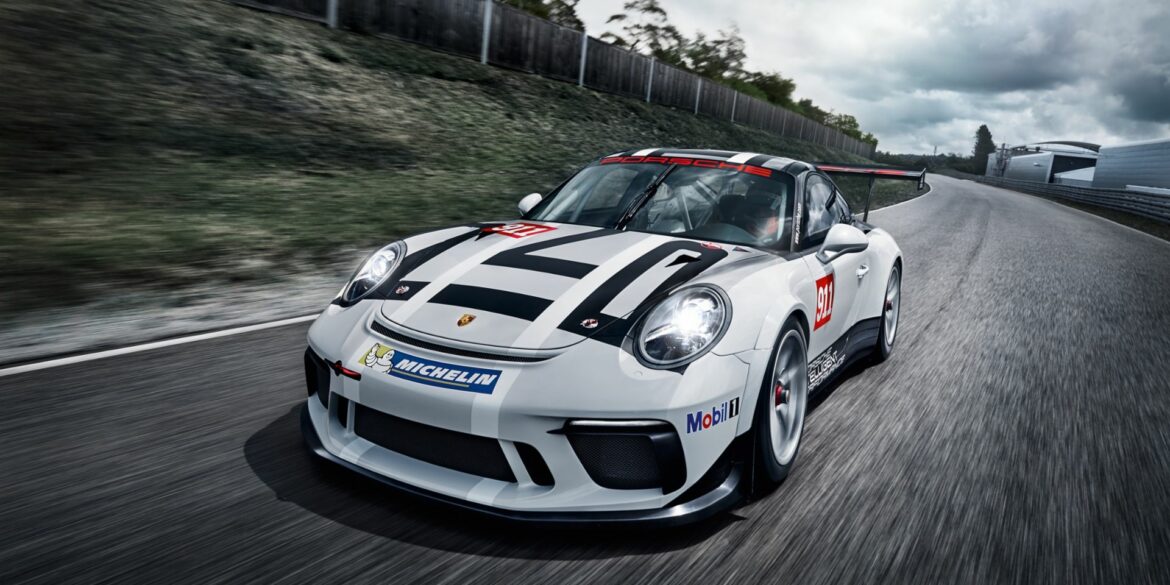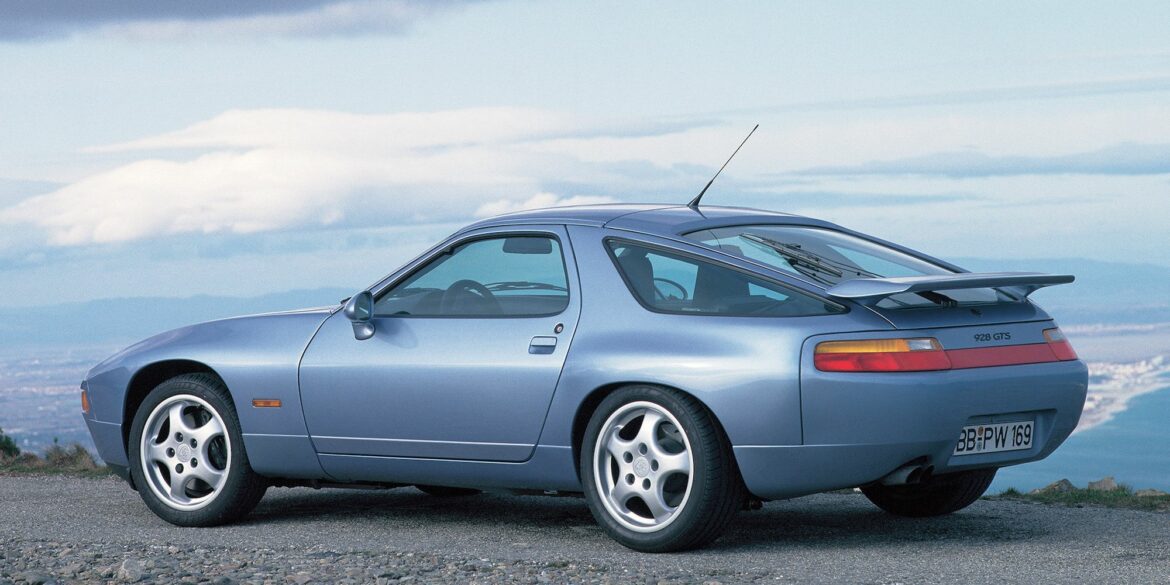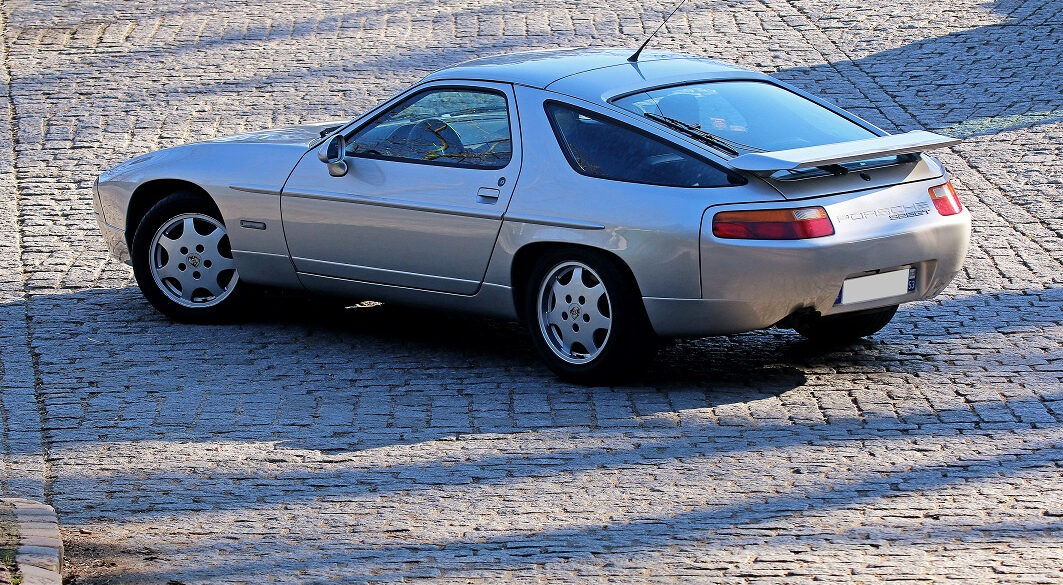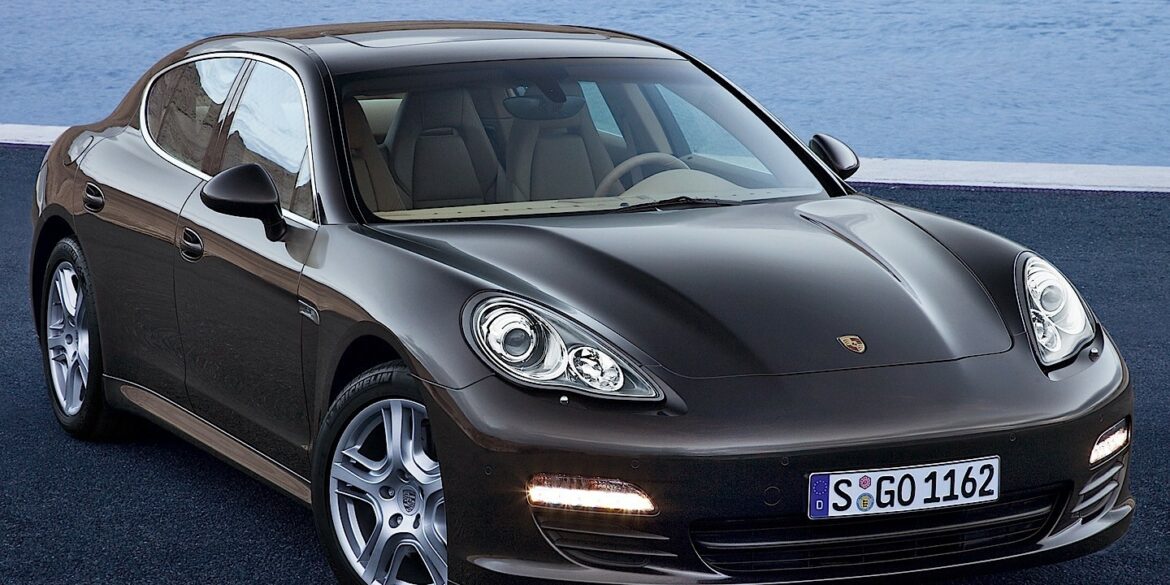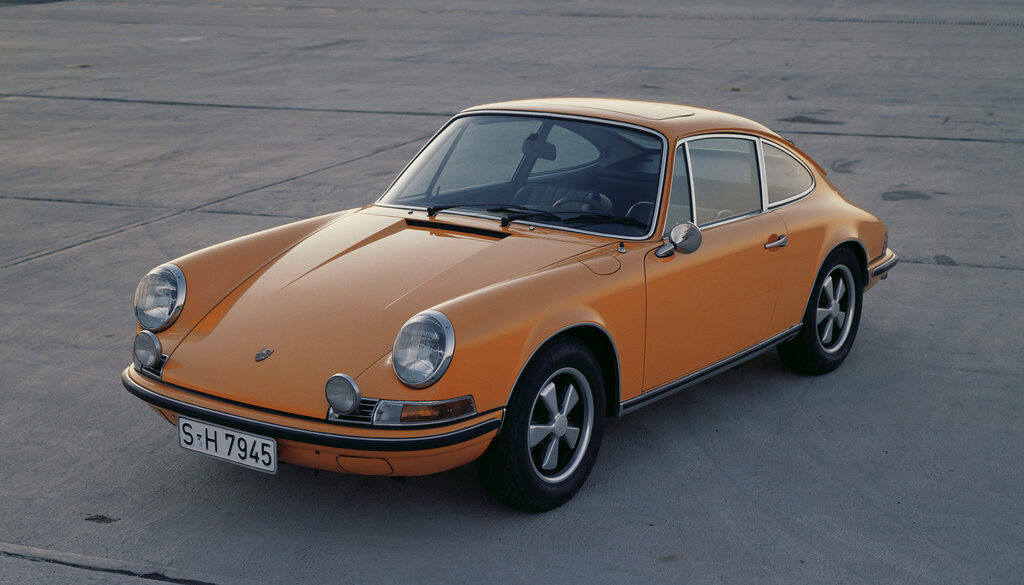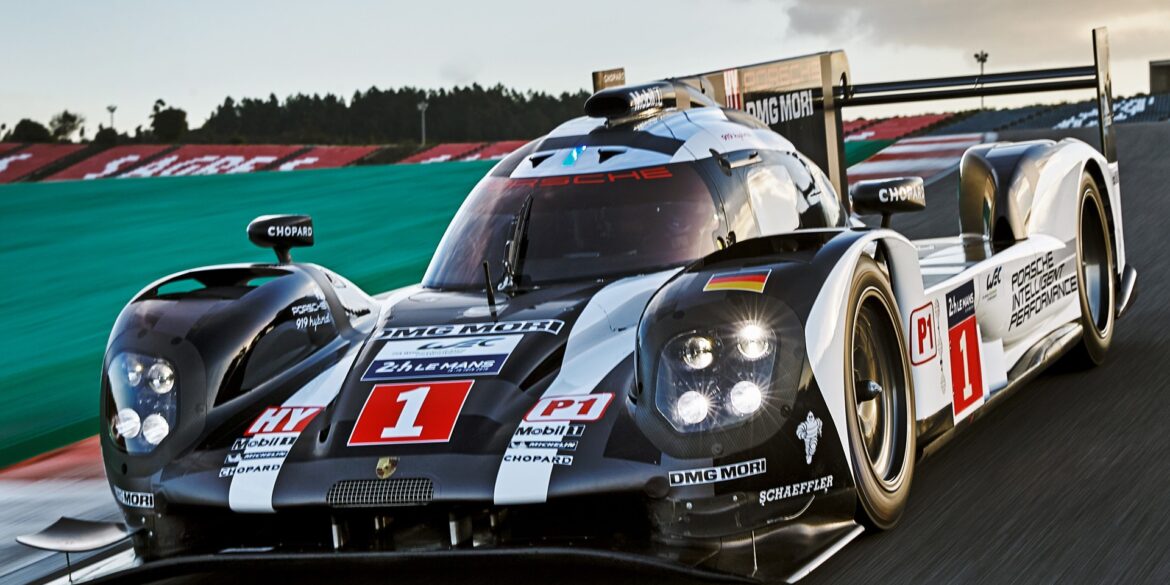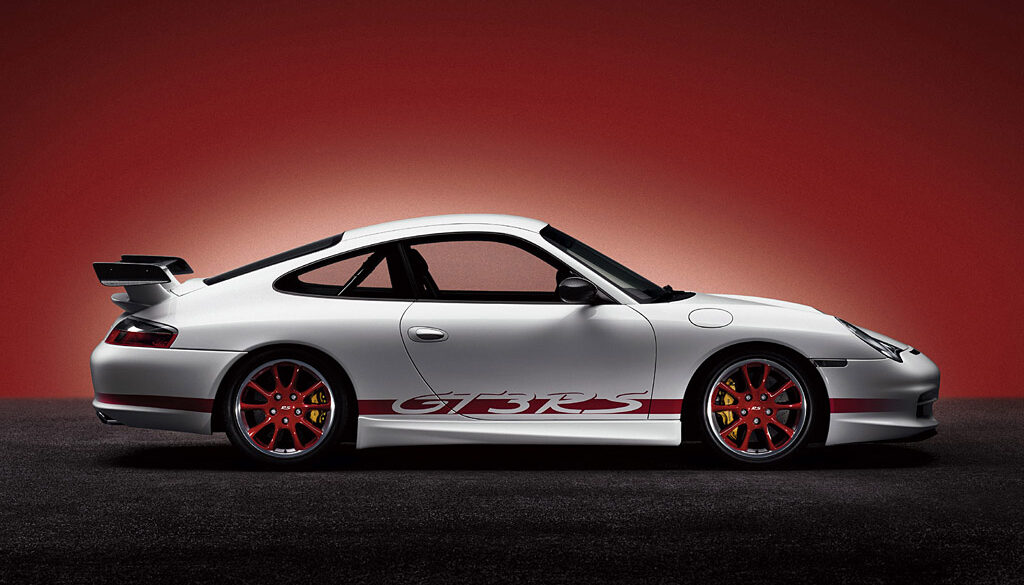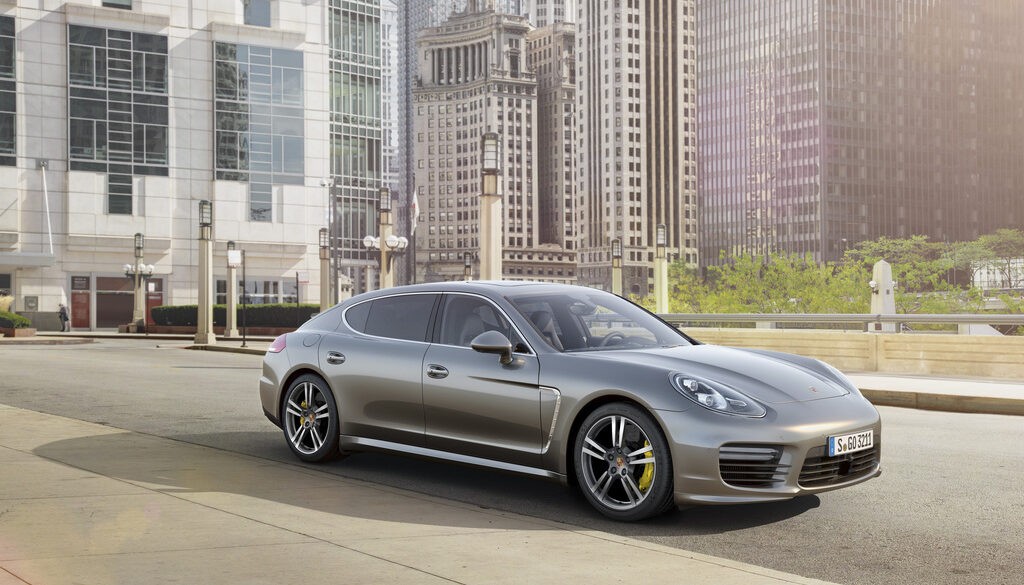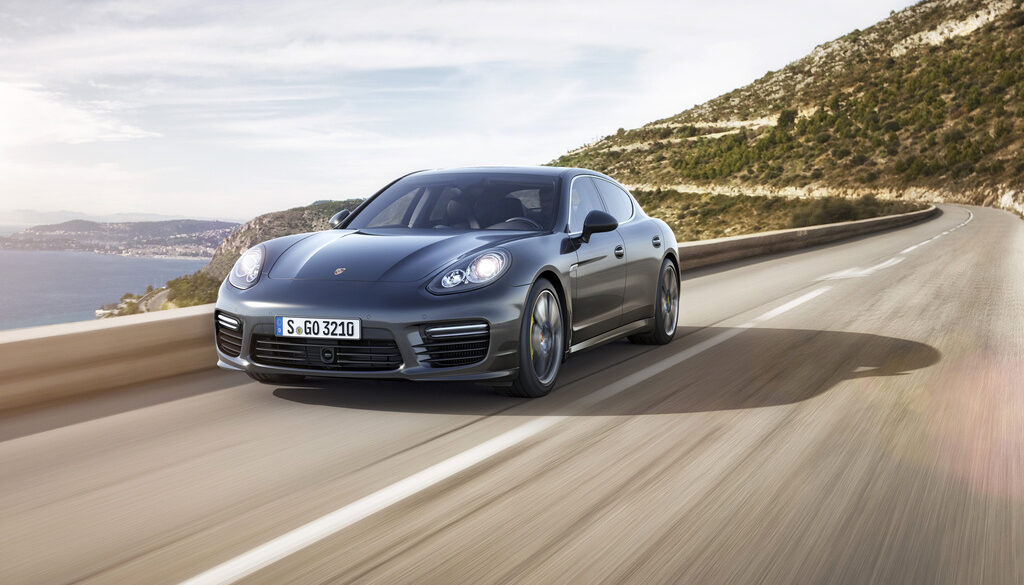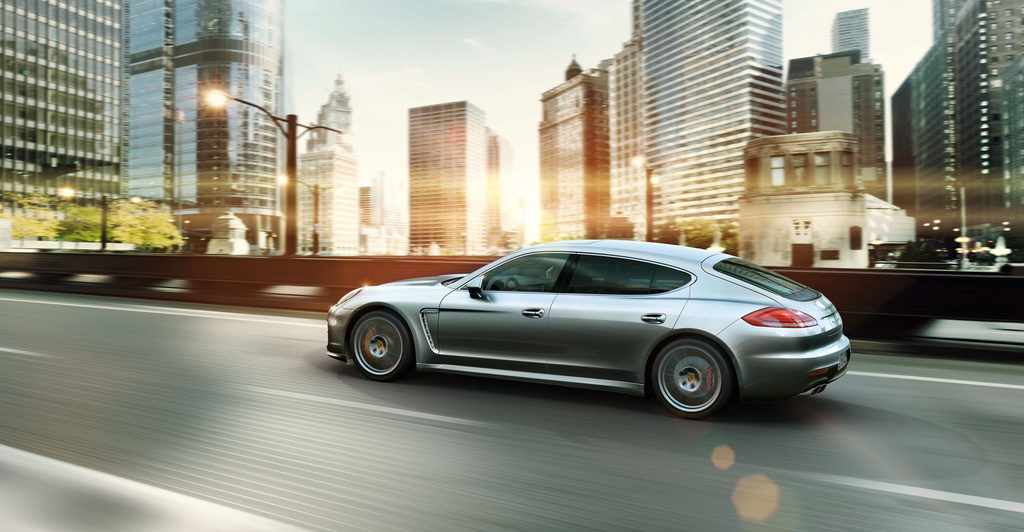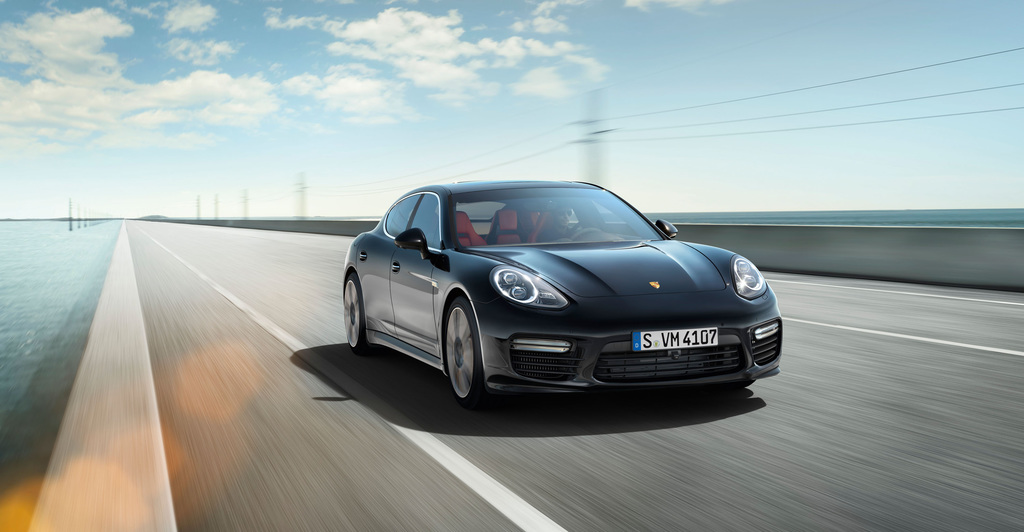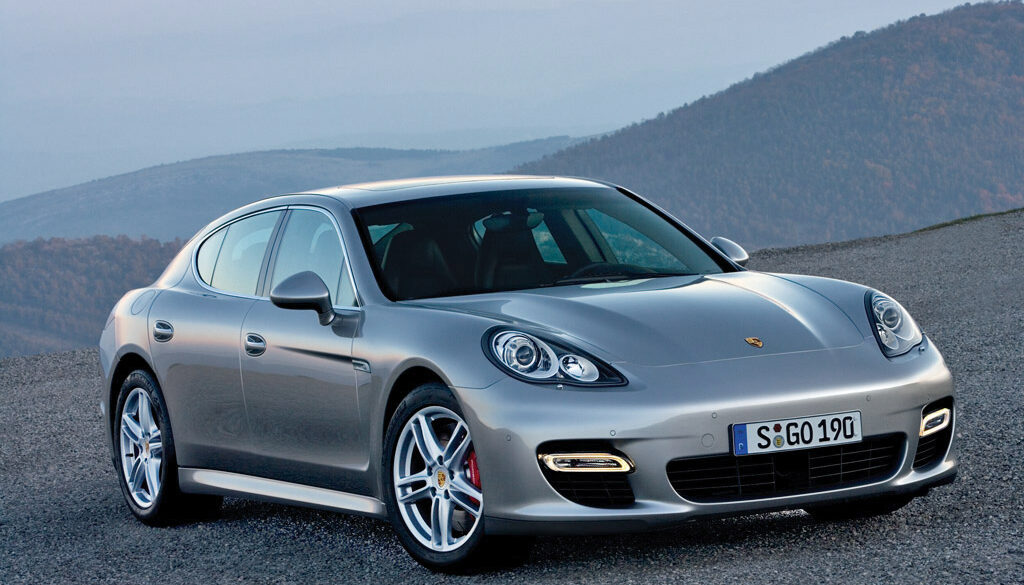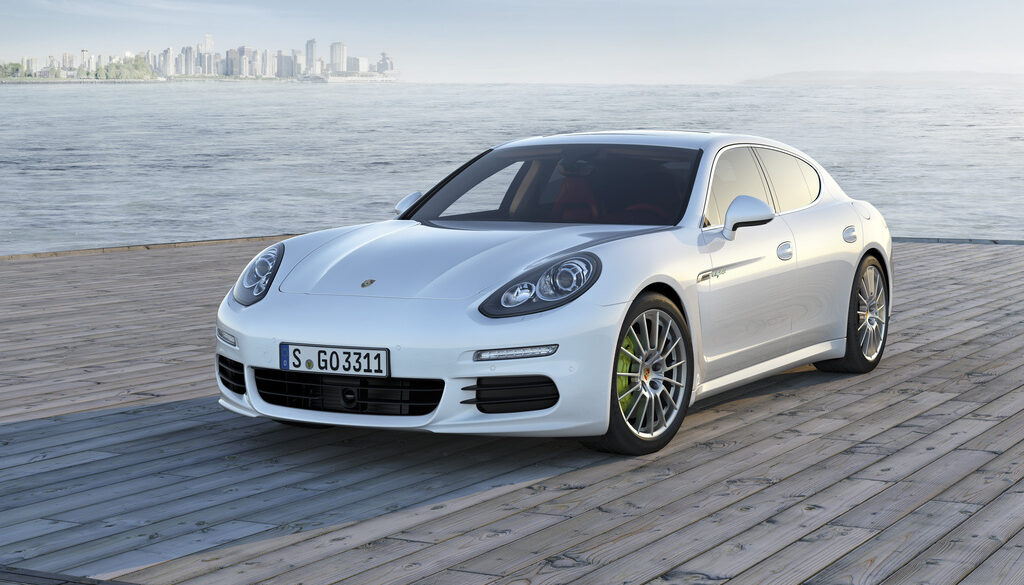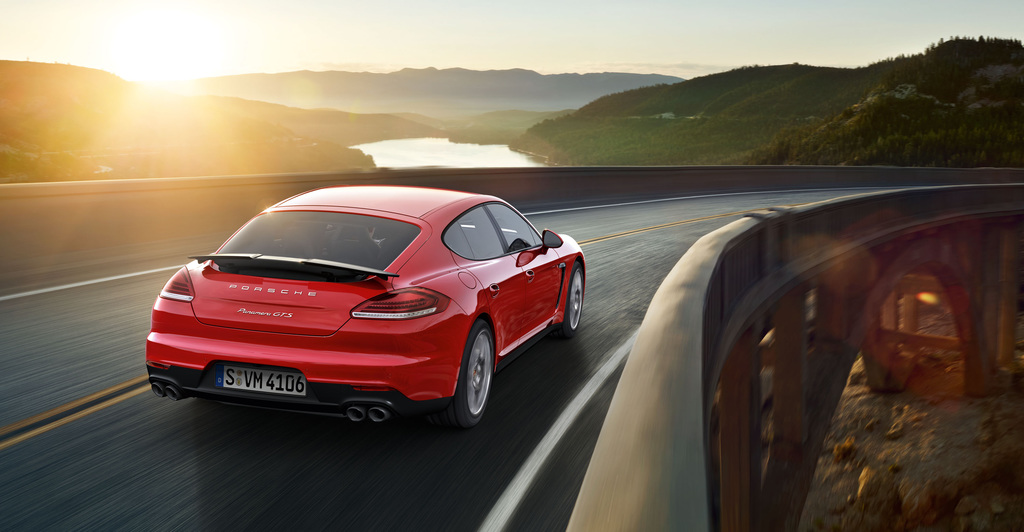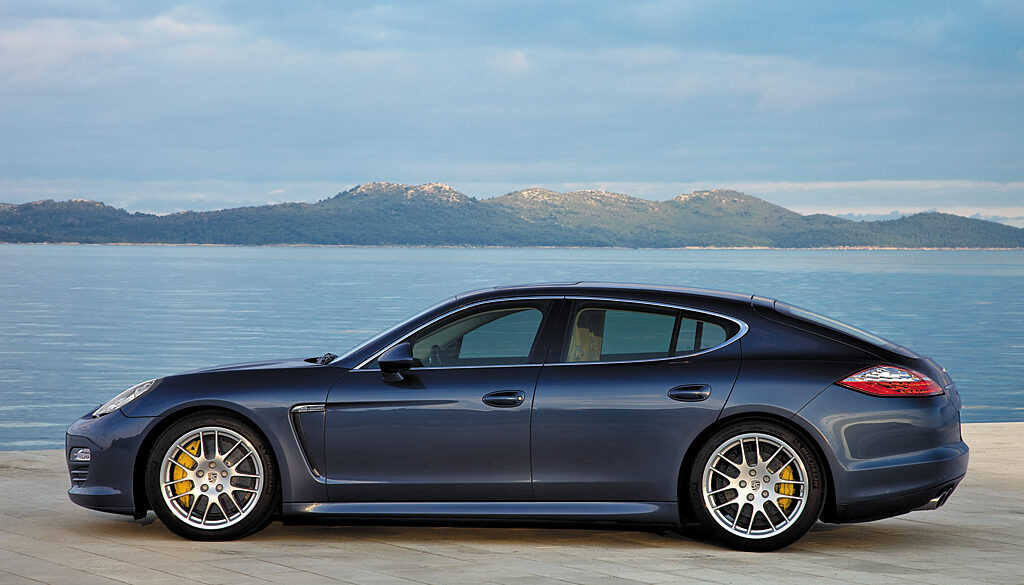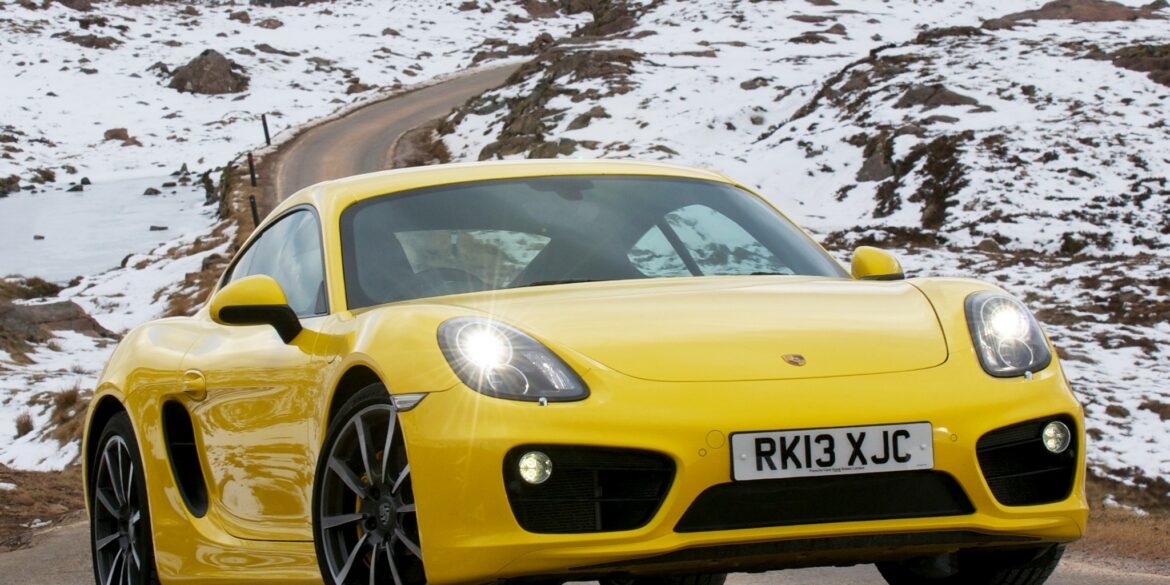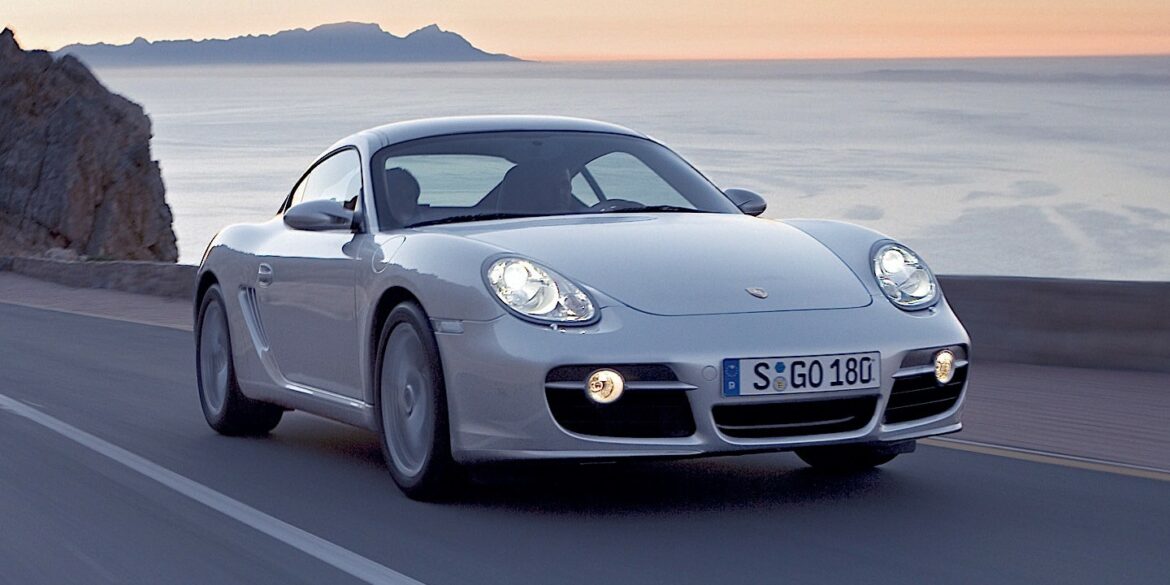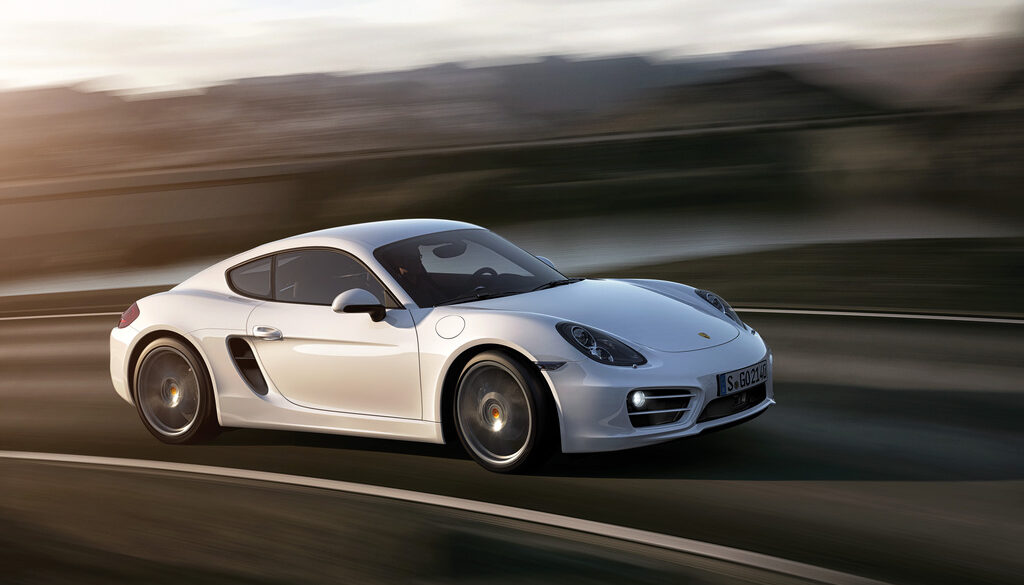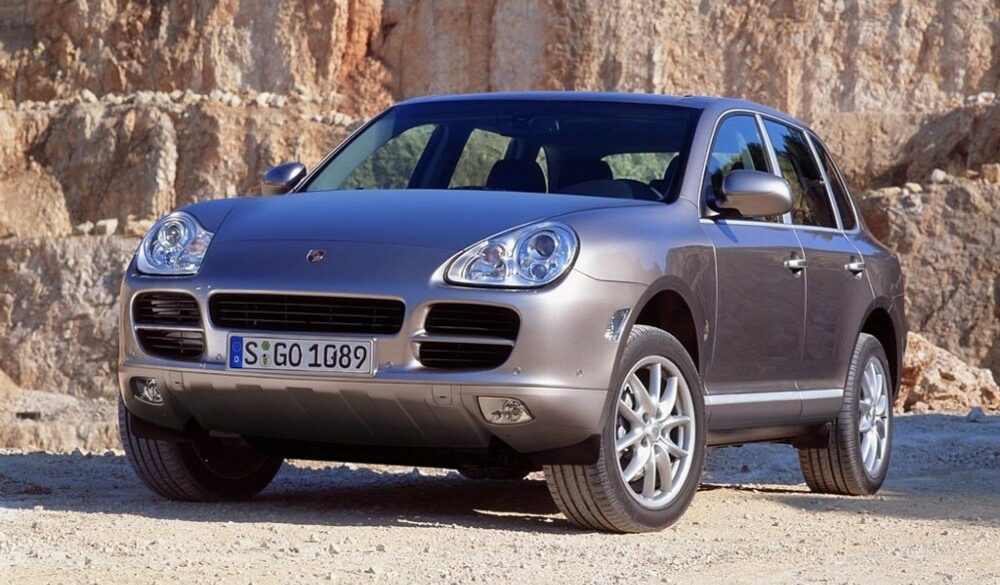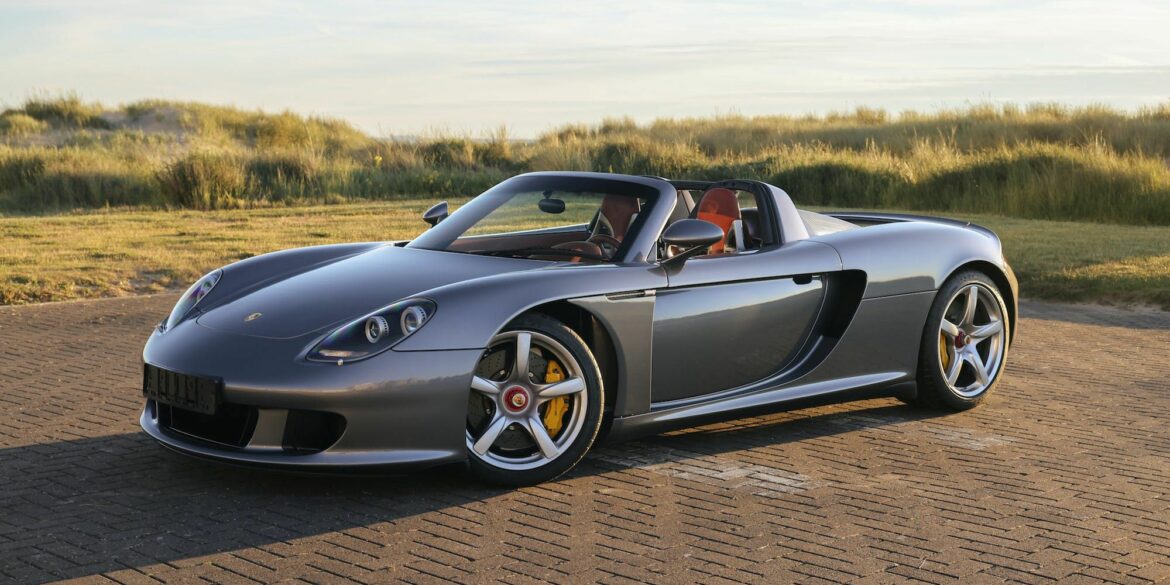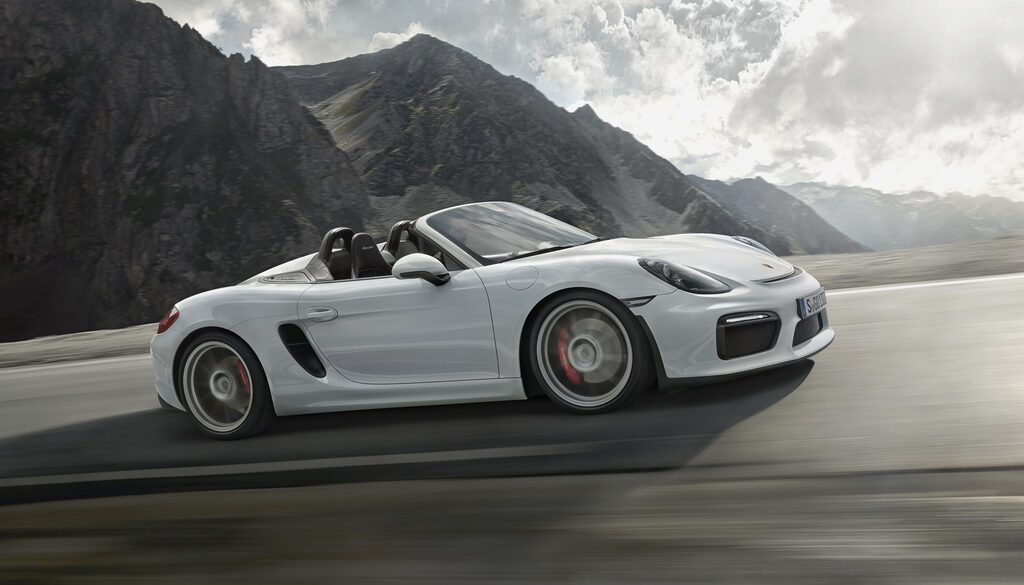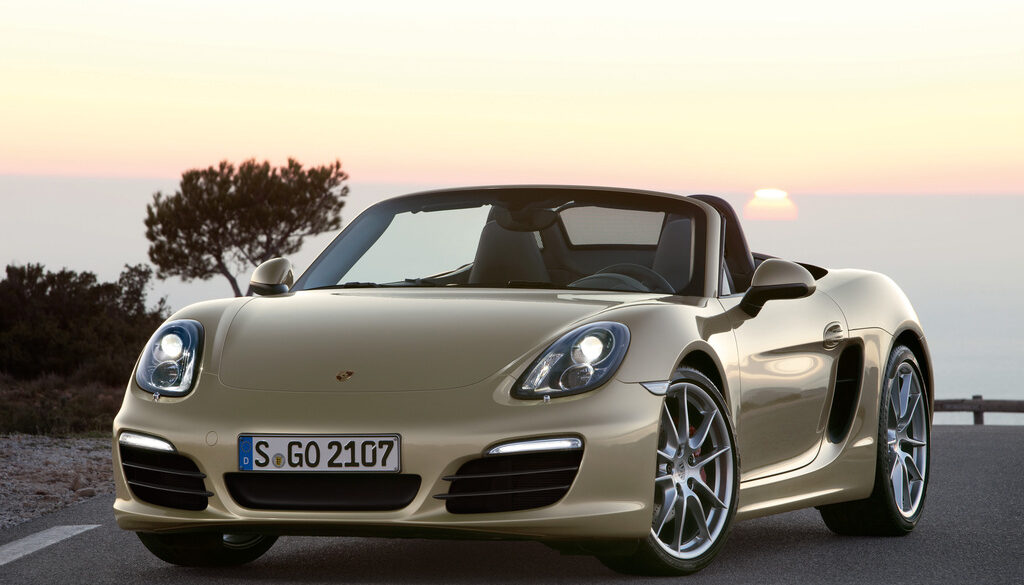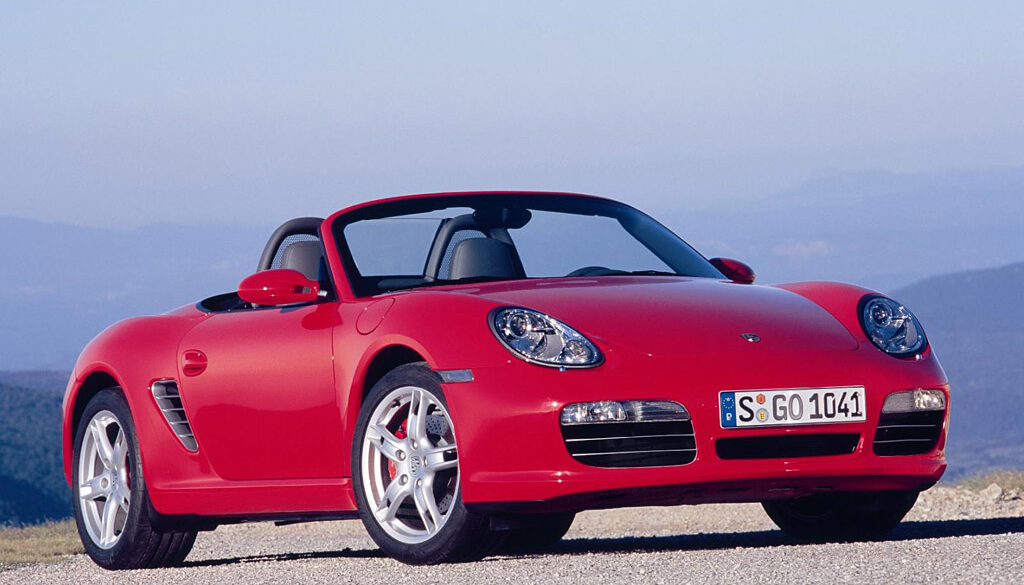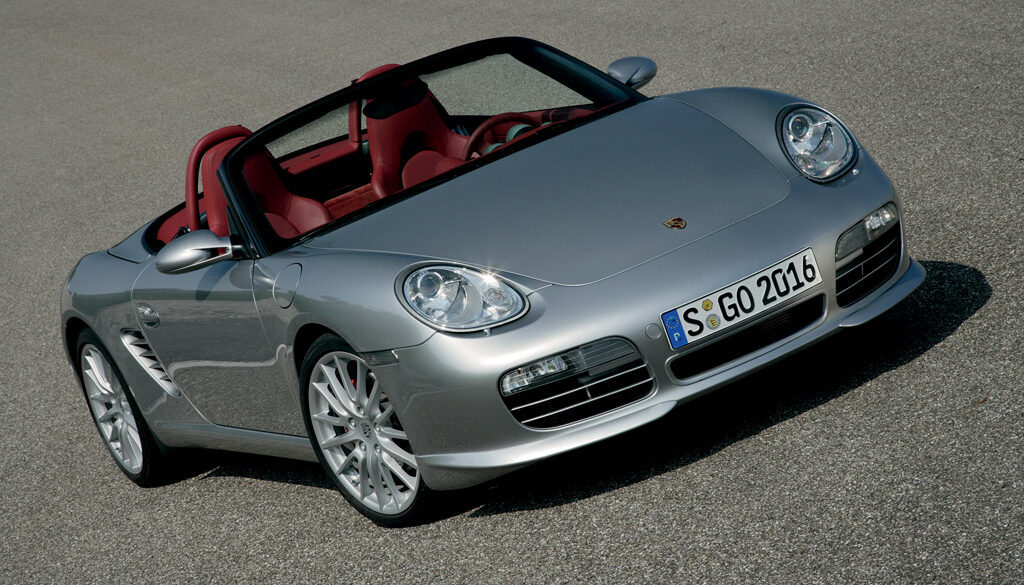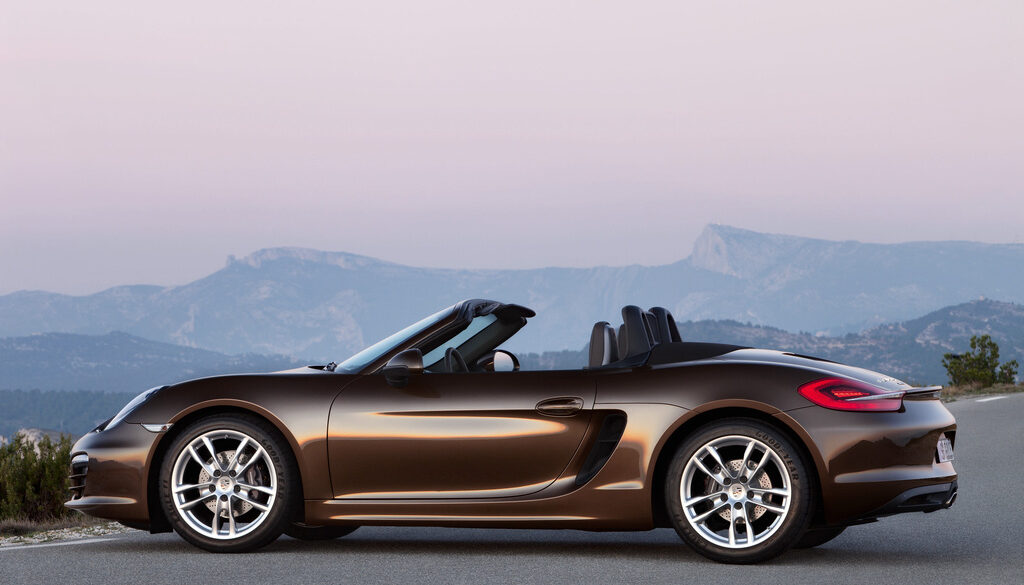The Porsche Vision 920 is a race car concept, designed and built by Porsche in 2019, to preview what essentially could be a successor to their highly successful LMP1 race car, the Porsche 919 Hybrid. Porsche says the company designed the concept as either a super sports car for the road or as a possible racing car that could be used in a customer motorsport series.
The Porsche Vision 918 RS is a supercar concept, designed and built by Porsche in 2019, to preview what essentially could be the next generation of a trackday, street-legal Porsche 918 if it were still in production. Some of the design elements, none of which bear resemblance to the original Porsche 918, include sharp and soft creases and large air intakes, three fins on the widened rear fenders and roof.
The Porsche Macan Vision Safari is a 3-door compact SUV coupe concept, designed and built by Porsche in 2013, essentially showing what would be an off-road Porsche Macan. The concept only had two doors compared to the four in the normal SUV, and came with a host of off-road-oriented accessories, some of them including an increased ride height, larger front and rear tires.
The 551 Vision Spyder was built in 2019 but kept a secret until its unveiling this week. Billed as a 21st century reimagining of the 1954 machine that made Porsche’s name, in fact it’s really an hommage to one particular car, James Dean’s Little Bastard, wearing the race number 131 (Dean’s was 130) and the licence tag “Little Rebel”.
It is expensive, it is fast and it is exceptional. The Porsche Taycan Turbo shows us that Porsche's electric future is going to be great for drivers. The Taycan Turbo feels even relentlessly rapid at any speed and the best part is that it really feels like a Porsche from behind the wheel. The Turbo has the same 93.4kWh battery stack as the Turbo S, and the same 614bhp power output. But when you’re going for it in Performance mode, the Turbo’s overboost power and torque are reduced compared with the Turbo S. It means the Turbo is four-tenths slower to 60 mph from standstill.
For the 2019 model year, the second-gen Panamera is now a beneficiary of the badge - which actually stands for ‘Gran Turismo Sport’ - that has come to represent the pragmatist’s choice of Porsche automobile. The Panamera GTS is also now available in a long-roof wagon body style, dubbed the Sport Turismo. In totality, this is the vehicle I will be writing about - the 2019 Porsche Panamera GTS Sport Turismo. Traditionally speaking, the GTS version of any Porsche has typified a “sport-plus” version of a mid-level trim within the model range.
The 718 Boxster Spyder is everything you could possibly want in a sports car. The sublime combination of a legendary chassis and naturally aspirated 6-cylinder Porsche engine is accentuated by the emphasis that less is more when done right - and nobody does this better than Porsche’s GT division. Connections with these cars are visceral and emotional, an outcome mutually desired by both Porsche engineers and customers alike. They will never be considered tardy in the right hands. The Spyder is in my opinion, the best sports cars you can buy in this segment.
The Taycan 4S is the more affordable version of the four-door electric car, but it still offers impressive performance and a high price tag. The Taycan 4S is the sweet spot for Porsche's electric four-door sports car, with more than enough performance for daily driving and enough equipment to feel like it is worth the money. The 4S makes a total of 522 horsepower with its base 79.2-kWh battery pack and 563 horses with the optional one, the 93.4-kWh Performance Battery Plus. Porsche claims a zero-to-60-mph time of 3.8 seconds for the 4S.
Four years after the introduction of the Cayman S, and three after the regular Cayman, the mid-engine sport-coupe from Porsche received an important update. The facelifted version of the Cayman offered a completely enhanced package. From the exterior to the interior, from the engine to the gearbox and suspension, it was reworked. It might be mistaken with a new model if the Porsche internal coding system wouldn't be the same as on the 2006 Cayman (987C). The engine displacement was increased from 2.7 to 2.9-liter and received direct fuel injection.
Features like Porsche’s active suspension and the new-for-992 “wet mode” are standard on the Carrera 4 variants, but the electronically controlled limited slip rear differential (standard on the 4S), as well as ceramic composite brakes (cast iron rotors are standard). The current 911 Carrera 4 Cabriolet is equipped with PASM (Porsche Active Suspension Management). The twin-turbo flat-six has 379 hp and 331 ft lbs of torque.
The Carrera 4 is the base model 911, equipped with all-wheel drive. It starts at $109,850 for 2022, which is about $7,000 more than the standard rear-drive Carrera. Other than the additional all-wheel-drive system and the 150 odd pound increase in curb weight, the Carrera 4 is identical to its rear-drive sibling. It gets the same 379-hp, twin-turbo 3.0-liter flat-six engine. The twin-turbocharged 3.0-liter flat-six has 379 hp.
Make no mistake that the Speedster is an absolutely fitting conclusion to the 991-generation. The Porsche 911 Speedster is an ingenious amalgamation of the latest technologies on offer, and the more simple ingredients that have been a principle of driving enjoyment since the invention of automobiles. A 502-horsepower engine, without turbochargers. A modern transmission, with just one clutch. A state-of-the-art suspension and chassis, with an unsullied purity. The list goes on. Perhaps the only drawback is that the Speedster’s rarity and price.
In 2000, Porsche gave us the Boxster S. With a 3.2 liter naturally aspirated Flat-6, it was good for 250 bhp and 225 ft lbs of torque, up by 25% on the base 2.7 liter Boxster. Hardward changes, a 6-speed gearbox and all this extra power and torque transformed the Boxster driving experience. From behind the wheel, the Boxster S rushes forward in a way that is missing from the base model, that torque increase really making itself known, especially in the midrange. 0 to 60 mph now takes 5.60 second (compared to 6.5 for the 2.7 L base model). Top speed is 161 mph and the quarter mile is 14.1 seconds.
Top down summertime driving in the current 911 Carrera 4S Cabriolet is about as good as it gets. It checks all of the right boxes, as while it has matured into almost a GT-type car; it still boasts more performance than ever. Like the rest of Carrera S models, the Carrera 4S Cabriolet is powered by the same 3.0-liter twin-turbo flat-six that makes 443 horsepower and 390 ft lbs of torque. It comes standard with the same eight-speed twin-clutch automatic transmission.
The perfect daily driving sports car with an all-weather, remarkably high-performance envelope. Like the rest of Carrera S models, the Carrera 4S is powered by the same 3.0-liter twin-turbo flat-six that makes 443 horsepower and 390 lb-ft of torque. It also comes standard with the same eight-speed twin-clutch automatic transmission with the same gear ratios, except the 4S with an added clutch and differential up front.
On 3 January 2019 the 718 Cayman GT4 Clubsport was unveiled in two variants, Competition and Trackday, with first customer cars delivered to customer teams ahead of the 2019 Roar Before the Rolex 24 Hours at Daytona International Speedway. The race car is powered by a 3.8-litre naturally-aspirated flat-six engine producing 425 PS (419 bhp; 313 kW) at 7,500 rpm and 425 N⋅m (313 lb⋅ft) at 6,600 rpm connected to a 6-speed PDK gearbox. The kerb weight is 1,320 kg (2,910 lb). Both variants feature a welded-in roll cage, a six-point harness and race bucket seat, a selection of body parts made of natural-fibre composite materials and race suspension from the 911 GT3 Cup.
Porsche plans to return to rally racing with a 718 Cayman GT4 Clubsport R-GT Rallye. The car came about because of the positive response Porsche received on a rally car concept that it sent out into the world. Before the official car comes, Porsche did some testing with its 718 Cayman GT4 Clubsport-based concept race car. The company let racing legend Walter Röhrl get behind the wheel at the GP Ice Race in Austria.
Porsche is celebrating their 70 years in the making with the Porsche 911 Speedster Concept car. With the Carrera Cabriolet 4 body as its canvas, the Speedster concept pays homage to its predecessors - most notably, the Porsche 356 1500 Speedster. The limited production Speedster is immediately distinguishable from the current 911 line-up, with its “double bubble” tonneau cover and other unique offerings and design tweaks.
The Mission E Cross Turismo concept is a more outdoorsy activity-wagon version that was first displayed at the 2018 Geneva motor show. This concept was built as a drivable car. Porsche essentially took the Mission E project’s hardware in development, so it serves as a snapshot of where things stood about two years into a five-year program.
The Porsche vision “Renndienst” (2018; 1:1 hard model) is the free interpretation of a family-friendly space concept for up to six persons. The design team designed a futuristic “space shuttle“ with exciting proportions. The study shows how the Porsche design DNA with its characteristic surface modeling can be transferred to an unknown vehicle segment for the brand.
The Porsche 911 Carrera S Cabriolet also features a heated glass rear window and integrated magnesium support elements. The automatic fabric top opens and closes at speeds of up to 31 miles per hour in just 12 seconds – one second quicker than before. The 992 Carrera S Cabriolet gets a twin-turbo 3.0-liter flat-six with 443 bhp and 390 ft lbs of torque. That is 29 more horsepower and 22 more ft lbs of torque than the outgoing model.
If the base 911 coupe doesn't do it for you, maybe the Carrera S coupe gets you over the line. For about $20k more, you get more horsepower, torque vectoring and bigger wheels. The Carrera S uses a version of the 3.0L twin-turbo flat-6 that generates 443 hp and 390 lb-ft of torque. Torque vectoring allows different amounts of torque to be distributed between drive wheels on the same axle. This means the inside wheel can turn slower than the outside wheel for improved cornering.
Removing the roof the car is supposed to have little impact on its chassis stiffness and curvy road prowess, but Porsche tells us that the current generation 911 Cabriolet drives just as well as the coupe. Powering the base Cabriolet is the same impressive turbocharged flat-six engine that makes 379 bhp @ 6500 rpm and 331 ft lbs of torque. The base cabriolet can do the 0 to 60 mph run in 4.2 seconds flat. With the optional Sport Chrono Package that drops to 4.0 seconds.
The most basic version of the Porsche 911 Carrera is pretty sweet. Porsche chose to detune the twin-turbocharged flat-six engine and downgrade some of the chassis components. These cars offer very good performance and driving dynamics for a slightly lower price. While marginally larger and heavier than the 991-generation model it replaced, the 992 is also more advanced. Power climbs by 15 bhp from the 991 Carrera, to 379 bhp @ 6500 rpm, which is more than enough horsepower for the street.
While the original 986 Boxster was a sweet ride, its performance began to lag behind newer competitors like the Honda S2000. Powered by a 2.5-litre flat six-cylinder engine, the base model was upgraded to a 2.7-litre engine in the year 2000. The gearbox options in the Boxster 2.7 are the same as in 2.5, but they got new type designations due to improvements. Externally, the 986 Boxster 2.7 looks like Boxster 2.5. Inside the side airbags are standard and the plastic feeling has been reduced. The fuel tank is a larger 64-liter. Alcantara trim is available on the options list.
Porsche upgraded the performance of its 924 with the introduction of a turbocharged model in 1979. While the lower end of the engine remained unchanged, many improvements were made to the upper end of the engine as well as the drivetrain. On the outside, the car gained alloy wheels, a distinctive NACA duct in its hood, and a rear spoiler. Horsepower increased from the naturally aspirated 125 bhp to 170 bhp in the turbo.
Matt Prior from Autocar nails the 991.2 GT3 RS: “While I don’t think the 3 communicates any better than a 2, the messages it does transmit are superior: you can feel that it’s lighter, more willing to turn, easier and more satisfying to ease onto the throttle and keep it pinned. It’s why this car is only a few seconds slower than a 2RS around the Nürburgring Nordschleife despite being almost 200bhp down.” He goes on... “And in the form of the GT3 RS it goes into creating - little by little, detail by detail - what might just be the best driver’s car currently on sale.”
Porsche expanded its mid-engine range with the new two-seater Porsche 718 Boxster GTS and Porsche 718 Cayman GTS. The vehicles' power has now been increased to 269 kw (365 hp) thanks to a newly developed intake duct and an optimised turbocharger for the 2.5-litre, four-cylinder boxer engine. With these improvements, the engine delivers 11 kW (15 hp) more power than the 718 S model and up to 26 kW (35 hp) more power than its GTS predecessor models with naturally aspirated engines. The new mid-engine sports cars are available with manual six-speed transmission or optional PDK
The GT2 RS's reputation as the most powerful street-legal car is as monstrous as this comprehensive guide. Suffice to say, this supercar has been built with the best Porsche has to offer. It's not bragging, it's just facts. There is no doubt that the new GT2 RS is the pinnacle of the 911 in terms of performance. It is simply the fastest 911 in history, and that’s a fact. It is the quickest production car to lap the Nürburgring Nordschleife. It is the most powerful 911 ever made.
The 500 hundred numbered 911 Turbo S Exclusive Series cars cross the 600 hp mark with their 446 kW engines. The power increase does not make much difference performance wise, but it is good to know you have more than 600 hp. Similar in acceleration and top speed to the ‘regular’ Turbo S, the car reaches 200 km/h (124 mph) in 9.6 seconds (0.3 seconds faster than the regular Turbo S). The car comes standard with the Turbo Aerokit and roof panel made of carbon-fibre reinforced plastic.
To the untrained eye, the Carrera T may appear to be a bare-bones and sparingly equipped 911 at first glance. The purpose of the T is to create a driver-focused 911, equipped with only the necessities required to appeal to those of a purist’s ilk. The Carrera T employs the same power plant used in the current base Carrera - a twin-turbocharged 3.0L flat-six with 370 horsepower and 331 lb-ft of torque. A 7-speed manual transmission comes standard with the T, along with a shorter final-drive ratio and the limited-slip differential. Porsche Sport Exhaust (PSE) is also standard. PASM sport suspension comes standard in the T, which lowers the chassis by 0.4 inches relative to the base Carrera and allows for two modes of dampening.
Four years after the introduction of the Cayman S, the sportier version of the mid-engine sports coupe Porsche was refreshed. It was even faster and could carry more cornering speed. The facelifted version of the Cayman S offered a completely enhanced package. From the exterior to the interior, from the engine to the gearbox and suspension, it was reworked. The engine was kept at 3.4-liter displacement, but due to its new direct-fuel injection system, the power was increased by 25 hp over its non-facelifted version.
Porsche made a lightweight version of the Turbo simply known as the Tuubo S. This used the spartan appointments of the Carrera RS with an upgraded version of the Turbo engine. Some cars received graphics on the side celebrating IMSA Supercar Championship. Similar to the Carrera RS, the Turbo S had no power steering, air conditioning, airbags, central locking, alarm system, rear window wiper, smaller window washer reservoir, smaller horn, and had thin-gauge glass. The engine used a second oil cooler and slightly higher boost to improve overall performance.
The 2007 model year Boxster got a change that most people don't think is significant, but is. Model year 2007 is when the base Cayman joined the 987 lineup. The interior and exterior remained mostly the same, but the Boxster S received the Cayman S 3.4-liter flat six while the 2.7 in both the Boxster and new Cayman received VarioCam Plus, which bumped horsepower up to 245. Think of this model year as Porsche taking the changes to get the base Boxster 2.7 to the same level as the recently introduced base Cayman.
The 1989/90 change of model year saw the launch of the Porsche 911, 964 series onto the market. This 911 model was initially available as a Coupe, Targa and Convertible. From model year 1991 onwards Porsche also introduced its top-of-the-line model - the Turbo - into this series. In spite of bearing a major similarity in terms of look to the naturally-aspirated model, the extended wings remained. This meant that the new Porsche could retain its turbo look. The 964 Turbo model was the successor to the Porsche 930. The 964 Turbo was the end of an era, the last of the single turbo rear-wheel drive 911 Turbos.
A single car - the 911 GT1-98 Straßenversion - was built in 1998 to homologate the all-new racing version under the new FIA regulations. The engine had to be slightly de-tuned to meet European emissions laws, although its 400 kW (544 PS; 536 hp) at 7,200 rpm and 600 N⋅m (443 lb⋅ft) of torque at 4,250 rpm proved to be more than adequate; the car could accelerate to 100 km/h (62 mph) from a standstill in 3.6 seconds on its way to a top speed of 193 mph.
It's not often Porsche creates an all-new model in their 911 lineup. But the 997 Carrera GTS is just that. It's faster, more powerful and better looking than any other model in the Carrera family. However it's still a little less hardcore than the 911 GT3, and a lot cheaper than the 911 Turbo. The Porsche 911 Carrera GTS features a 3.8 litre flat-six engine which is tuned to develop 408 horsepower, that's 23 hp more than the Carrera S manages. Think of it as the perfectly optioned Carrera S for less money.
In 2015, Porsche announced the car we all thought Porsche would never build. It has been a few years since it has been released and the excitement It was the first time Porsche introduced lets the motorsports guys in Weissach sprinkle their magic on a Cayman. With components sourced from the 911 GT3, an engine carried over from a Carrera S and a tweaked and tuned chassis, brakes and aerodynamics, Porsche’s engineers did their best to produce the perfect mid-engine sports car for road and track use. Compared with the standard Cayman, the GT4’s chassis was lowered by 30mm and bigger brakes were added, with many aspects of its suspension carried over from the 911 GT3. Some serious motorsport kit. One of the best ever.
Of all the 1580 Carrera RS 2.7s, only 200 were made were ordered with this lightweight ‘Sports’ trim which made the car more responsive and purposeful. In many ways these few cars were the ultimate road-going Porsche of the 1970s. Known as the Sports, Lightweight or even the M471 option code, these cars had improved the power-to-weight ratio. Reports of 75kg were stripped from the standard model by fitting lightweight body panels and lightweight glass.
Revealed at the 1972 Paris Auto Show, the Carrera 2.7 RS was a special model used to homologate the 911 in Group 4 racing. Developed from the 911S, the 2.7 was more potent in almost every area. Compared to the standard Carrera, the 2.7 RS featured a larger engine, wider flares to accommodate the Fuchs alloy wheels, stiffened suspension, larger brakes and a ducktail rear spoiler. The Touring outsold the Lightweight, with a total of 1380 units built (the Lightweight had only 200 units).
The Cayman GTS arrived a s 2014 model year car and boy was it special. It featured a marginally more powerful engine, a new body kit, new 20-inch Carrera S wheels, new Bi-Xenon headlights, and a new sports exhaust system. The Cayman GTS is longer than the Cayman and the Cayman S by 30.5 mm (1.2 in) due to its bumpers. The new, optional passive sport suspension allows the Cayman GTS to have a 20 mm lower ride height compared to the Cayman equipped with standard passive suspension or 10 mm lower compared to one with the standard-equipped PASM. Power was 330 bhp @ 6700 rpm and 0 - 60 mph was a brisk 4.1 seconds.
The Cabriolet version of the 991.2 Turbo got the same updates as its coupe sibling. The engine in the 991.2 911 Turbo Cabriolet is a twin-turbocharged flat-six with 540 horsepower and 523 pound-feet of torque, up a decent 20 more horses versus the 991.1 Turbo Cab. Improvements that come from increases in boost and fuel-injection pressures. Rounding the skidpad, the Turbo posts 1.02 g’s relatively easily. The wide P Zeros in back and the standard four-wheel steering conspire to hide the fact that 62 percent of the Turbo’s 3656 pounds sits over the rear wheels. 0 - 60 mph is over in just 3 seconds.
At the heart of the 991.2 911 Turbo is a twin-turbocharged flat-six with 540 horsepower and 523 pound-feet of torque. That’s a meaningful 20 more horses than the 991.1 Turbo. Improvements that come from increases in boost and fuel-injection pressures. Rounding the skidpad, the Turbo posts 1.02 g’s relatively easily. The wide P Zeros in back and the standard four-wheel steering conspire to hide the fact that 62 percent of the Turbo’s 3656 pounds sits over the rear wheels. With sport-plus selected, the 991.2 Turbo hits a 1.0-second run to 30 mph and a 2.6-second zero-to-60 time.
The Porsche 919 Street is a supercar concept, designed and built by Porsche in 2017, based on the highly successful Porsche 919 Hybrid LMP1 race car. The dimensions and basic design elements of the 919 Street are the same as that of the race car. However the 919 Street instead has a less-pronounced wing and more street-car comforts. This is the one we wish they made. Alas, the 900 HP LMP1-Based road-ready rocket that never was.
With the car retiring after the 2017 LMP WEC season, the Porsche team decided to throw it a truly memorable send-off. Freed from any restrictions brought upon by strict regulations in the class it competed in, Porsche threw out the rulebook and established a new benchmark. Amongst the notable parting gifts was a significant horsepower bump, increasing the turbo V4 to 720 horsepower from 500 horsepower. Additionally, the electric motor received a 10% boost, now generating 440 horsepower. In total this gave the 919 a remarkable 1160 horsepower.
This car was officially called as the 911 GT2 RS Clubsport, but the name is rather misleading. The car was not built for the GT2 racing class which is long extinct and club sport has stood for Porsche club track days while this non-streel-legal car is a real racing car. Finally, the car was based on the 991 GT2 RS, which already had the Clubsport version. So, in order to understand what is what, we call it "991 GT2 RS Clubsport racing version". The 991 GT2 RS engine with 515 kW was powerful enough, so it was not tuned.
Two decades after the different 911 GT1 cars the mid-engined 911 is back! In order to install a proper diffuser under the rear end of the 991, the engine had to make room for it and the engine/transmission unit was rotated 180 degrees. The extended rear diffuser, a top-suspended rear wing and the new side mirrors help to increase downforce with reduced drag. The FIA rules meant no turbo was needed due to power limits, so the normally aspirated 4-litre flat-6 was taken from the 991 GT3 R.
In true Porsche GTS spirit, the output of the 2.5-litre, four-cylinder flat ‘boxer’ engine has been increased to 360 bhp courtesy of a new intake system and an optimized turbocharger. These improvements generate 15bhp more power compared with the 718 S model, and up to 35 bhp more power than the prior GTS models. A manual six-speed gearbox is standard, with the Porsche PDK available as an option. Standard equipment includes the Sport Chrono Package, Porsche Torque Vectoring (PTV) with a mechanical rear axle limited slip differential and Porsche Active Suspension Management (PASM).
Like the Carrera 4, the Carrera 2 was available as a coupé, Targa or Cabriolet. This was the last generation Targa with traditional removable Targa roof (till 991). It sold ok, with 3,534 units sold over its lifetime. The engine was the 3.6 liter unit which produced 250 horsepower and a maximum speed of 162 mph while the 0 to 60 mph acceleration was made in about 5.6 seconds. Performance was on par with the coupe and it is the looker in the 964 range.
This was the last generation Targa with traditional removable Targa roof (till 991). The Carrera 4 Targa outsold the Carrera 2 Targa by 2x, making the 4 Targa much rarer and more collectible. In all, only 1,329 units were made. Overall, the Carrera 4 packed almost the same technical specifications as the Carrera 2 model. The Targa top was quite a project to take off (compared to the simple and fast cabriolet process) so be prepared to garage it all the time or spend 20 minutes every time you want to enjoy open top fun.
Porsche added the rear wheel drive Carrera 2 variant to the range in 1990. It was developed alongside the 964 Carrera 4, Porsche waited a year to release the Carrera 2 as a 1990 model year car. Like the Carrera 4, the Carrera 2 was available as a coupé, Targa or Cabriolet. Think of the cabriolet as a C2 coupe but with a fabric roof and more fun and you are right on the money. It was popular amongst buyers, particularly in the United States, with a total of 11,013 units sold, making it the third most popular 964 model.
Porsche added the rear wheel drive Carrera 2 variant to the range in 1990. It was developed alongside the 964 Carrera 4, Porsche waited a year to release the Carrera 2 as a 1990 model year car. Like the Carrera 4, the Carrera 2 was available as a coupé, Targa or Cabriolet. Overall, the Carrera 2 packed almost the same technical specifications as the Carrera 4 model. The engine was the same 3.6 liter unit which produced 250 horsepower and a maximum speed of 162 mph. Looked like C4 but was 200 lb lighter and more fun to drive.
Porsche is the most successful marque in the 24 Hours of Le Mans and British drivers have played an important role in delivering these historical achievements, and in celebration of this success a special limited edition model – the 911 Carrera 4 GTS British Legends Edition was created. Designed by the drivers who took wins in the 24 Hours of Le Mans for the factory team – Richard Attwood (winner 1970), Derek Bell MBE (winner 1981, 1982, 1986, 1987) and Nick Tandy (winner 2015) – this model was developed by Porsche Cars GB and Porsche Exclusive Manufaktur.
A year after the Cayman S and the second generation of the Boxster were unveiled, Porsche released the non-S version of its mid-engine sport-coupe vehicle. The “regular” Cayman was still a sports car that could top a 0 to 100 kph (0-62 mph) in 6.1 seconds so it couldn't be called a “slow” car. It was slower than its brother S, but it was still a daily-driver sports-car. The Cayman was built to be not only a fast and nimble car but a practical vehicle as well.
While the first generation Boxster S was received with mixed feelings, the second generation was praised. With the introduction of the 718 Boxster, the car-maker showed a special commitment to the smallest member of the Porsche family and it arguably become the best sports car in the world. The Boxster S featured a 2.5-liter flat-four engine. It was turbocharged and with direct fuel injection and was good for 345 hp. Performance was up a lot, especially in the midrange, now that torque was 310 ft lbs. It helped rocket the Boxster S from zero to 60 mph in just 4.0 seconds and onto a top speed of 177mph.
Welcome to the four generation Boxster. The base Boxster was powered by a twin-turbo 2.0-liter direct-injection gasoline unit. It offered a total output of 300 hp and it was paired as standard with a 6-speed manual, while a 7-speed automatic (PDK – dual-clutch) was on the options list. In terms of design, it gets a more modern look and feel and the interior is upgraded. More tech, more power and more speed. The only downside is the loss of the aural pleasure of a flat 6 engine that is naturally aspirated and loves to rev to the sky.
Searching for more muscle? The 718 Cayman S got a new 2.5L turbocharged boxer 4-cylinder. Power comes in at 345 bhp @ 6500 rpm and torque is a really strong 310 ft lbs @ 1900 rpm. For reference, the outgoing 981 Cayman S had 311 bhp and 265 ft lbs of torque. While we hate the drone of the turbo four cylinder, there is absolutely no doubt that is much more powerful and that performance numbers are much stronger. 0 – 60 mph is over in just 4.0 seconds and the quarter mile is finished in 11.9 seconds flat. Much faster than the outgoing model. But is it as engaging? No.
With the 982-generation Boxster/Cayman platform, Porsche went back in time to pull out the 718 name, a reminder that the sports car maker has been doing the small sports car thing for a long time. The 718 of course, is diminutive race car that won the Targa Florio race in 1959 and 1960. The marketing stunt was meant to evoke these past Porsche racing successes with light cars like the 718 that outmaneuvered competitors with larger and more powerful engines. The reason? Porsche got rid of the naturally aspirated flat-6 engines and instead would now have flat-4 turbocharged engines.
For some context, the iconic 959 remained Porsche’s fastest production car for a cool 26 years (in its very rare S guise) before the company topped it with the 918 Spyder in 2013. Details on the 959 S are scarce; Porsche made just 29 examples of it, with the 2.8-liter flat-six engine featuring larger turbochargers and the company claiming an “official” output of 508hp and 413lb-ft of torque, over the standard 959’s 444hp. Top speed was 210mph.
Homologated roadgoing version of the ’97 911 GT1 Evolution racer costing $890,805 upon release. Twin-turbochargers were fitted to the M96/80 engine, which had water-cooled cylinder heads. Apparent from the front and rear lights, the GT1 shares many components with its series production counterparts, but puts them together in a more competitive way. Gone is the rear engine layout which isn't suitable for prototype GT racing, the GT1's turbocharged flat-six engine sits in front of the rear axle and is supported by chassis tubes instead of the typical 911 rear sub frame.
The most advanced Porsche of the 1980s and part of a new breed of supercars. It had an all-wheel-drive system with driver-selectable torque split, adjustable ride height, hollow-spoke magnesium wheels, tire-pressure monitoring, and a six-speed gearbox. Even though the engine was air-cooled, it used water-cooled cylinder heads and twin turbos operating in sequence. This level of technical achievement on the 959 was huge for Porsche.
The new Porsche 911 GT3 carries the same four-litre flat engine from the GT3 RS with its power increased by 25hp for a new total of 500hp. The chassis is also redesigned and now features a rear-axle steering and a lighter construction. The Porsche 911 GT3 type 991.2 comes in at 1,430 kg when its tank is full. Although it is a bit heavier than the previous model, it still manages to reach 0-100km/h in just 3.4 seconds and reach top speeds of 318km/h. What’s more interesting here is that Porsche finally decided to switch back to a 6-speed manual gearbox (7-speed PDK is standard).
Porsche 911 Carrera RS Sport Lightweight ‘AUI 1500’ as it is today The Porsche 911 Carrera RS 2.7 broke cover in October 1972, being revealed to the public for the first time at the Paris Motor Show. Porsche’s marketing department considered it a big risk for such a small company...
With the Turbo S, the PDCC Porsche Dynamic Chassis Control hydraulic roll bars came as standard. The PCCB Porsche Ceramic Composite Brakes had been standard on the Turbo S already since the 996 generation. New options included the radar-based lane change assist and a lift system for the front axle (increased ground clearance by 1.6″/40 mm). The PCM now had a multi-touch screen like in the facelifted 991 Carrera. Routes and places could be visualized with 360-degree images and satellite images. Engine gets more horsepower too, now with 572 bhp and 553 ft lbs of torque.
This is the fastest convertible GT you can buy. The Turbo S cab gets 572 bhp (39 hp more than the base turbo cab) and 553 ft lbs (9 ft lbs more than the regular cab) of torque. With the Turbo S, the PDCC Porsche Dynamic Chassis Control hydraulic roll bars came as standard. The PCCB Porsche Ceramic Composite Brakes had been standard on the Turbo S already since the 996 generation. New options included the radar-based lane change assist and a lift system for the front axle (increased ground clearance by 1.6″/40 mm). The PCM now had a multi-touch screen like in the facelifted 991 Carrera.
The 911 Targa 4 GTS isn't the fastest or best performing 911. It is heavier, softer and not as fast as every other GTS model. But we still love it. The Targa 4 GTS has amazing performance coupled with the sexiest body in the business. In GTS trim the Targa body looks even better. This is the car you get when you can only choose one 911 and you need it for fun weekends, daily driving and taking the wife out to a fancy restaurant. With 450 hp and 405 lb-ft from 2150 to 5000 rpm, it also has more than enough street performance than you could ever need. Buy one.
The GTS 4 Cabriolet reminds us how awesome Porsche cars are. This is a 911 that can be used as a regular car, an all weather convertible 911 that does everything really well. And when you want to push hard, the car transforms into a true sports car, a car that no enthusiast will ever complain about. Drop-top 911s have always played a supporting role to the fixed roof versions, but in GTS specification the Cabriolet is now better than ever.
Ultimately, the Carrera 4 GTS is the ideal all-round 911. Its bag of tricks gives you accessible, astonishing performance on the right road – but its price tag and comfort levels make it a little more acceptable for everyday use than a GT2, GT3 or Turbo. The GTS scores particularly well on the practicality to performance ratio. Its rear seats can accommodate people and its all-wheel drive system means you can really use this car all-year round. The GTS-spec 3.0-litre flat-six develops 30bhp more than a Carrera S (at 444bhp) and 37lb ft more torque (at 406lb ft).
Porsche really has hit its brief with the turbocharged Carrera GTS Cabriolet. It is hugely capable on the road, easy to live with on a daily basis, and come the weekend, it’s massively fast on track. For the money, and for drivers who really want just a little more 911, but without the mind-bending speed of a Turbo or uncompromising nature of a GT3, then this is the car for you. It also looks unique and has enough of its own style that it it feels special both on the outside and inside.
According to Porsche, it retained the monocoque from 2016, but 60 to 70% of the 2017 car was new, with the largest alterations being to its aerodynamic demands. This included a major redesign of the front of the 919 Hybrid with wider arches for the front wheels to make it less aerodynamically sensitive from small bits of discarded rubber from the track surface. Porsche remained in the 8 MJ (2.2 kWh) MGU category for the 2017 season. The engine was modified to be lighter and more compact, and Porsche stated that it was its most-efficient ever.
The GTS coupe starts with the wider Carrera 4 body, with the rear fenders pushed out 1.7 inches, and the rear track widened 1.6in. Up front is the new SportDesign front fascia with its lower front spoiler and larger cooling air intakes. Standard wheels are 20-inch center lock items and 0.5 inch wider than standard Carrera S rims, finished in satin black. There are splashes of black elsewhere, too. The changes run more than skin deep. Bigger turbos pump up to 18psi of boost pressure which helps deliver not only 30 extra horses at 6,500 rpm, but 405 lb-ft of torque between 2,150 rpm and 5,000 rpm, up from 368 lb-ft. This is the sweet spot.
The basic idea: a study by one of Porsche’s design interns, the Porsche Vision 916 has compact dimensions similar to the Porsche 916, which was developed as a prototype in the early 1970s. However, this Little Rebel is driven purely electrically by four wheel hub motors. It pays homage to the car designer Ferdinand Porsche and his first Lohner-Porsche racing car with four-wheel drive from 1900.
The Porsche 960 Vision Turismo is a mid-size sedan concept, designed and built by Porsche in 2016 that previewed some of the future design cues that Porsche would incorporate into the Porsche 911 (generation 991.2). The creation of the concept happened nearly by accident when somebody saw a sketch of the 918 Spyder and thought it had four doors .
This extreme road sports car based on the Porsche Boxster is reminiscent of the groundbreaking Porsche 550 racing coupé that started in 1953 at the 24 Hours of Le Mans. The front and rear bonnet open in opposite directions and fuel is supplied via a central nozzle at the front. At the rear is an eight-cylinder engine with excessive sound development.
The rear of the world’s most-produced GT racing car now houses a 4-litre, six-cylinder flat engine for even more drive. Thanks to thoroughbred motorsport technology, the compact engine with direct fuel injection delivers peak performance of 357 kW (485 hp). A range of innovative details also improve efficiency in addition to engine performance, ensuring even better durability of the naturally aspirated engine in racing mode and reduced maintenance costs.
The last evolutionary stage of the 928 model featured flared rear wings, a red light panel at the rear, a rear wing painted in exterior colour, exterior mirrors in the Cup design plus 17" Cup rims as standard. The 5.4-litre engine of the GTS generated 350 hp. The 928 GTS came for sale in late 1991 as a 1992 model in Europe and in spring of 1992 as an early 1993 model in North America. Changed bodywork, larger front brakes and a new, more powerful 5.4 L engine were the big changes.
In 1989, 928 buyers had the choice of the S4 or the GT, a better-equipped, manual-only car. The 928 GT was sportier than the 928 S4. Thanks to various modifications, its power unit generated up to 330 hp. The GT was delivered as standard without side protection strips and with wheels in a unique design. It featured a dogleg manual gearbox, a more aggressive suspension, and special seven-spoke Club Sport wheels
The rear-wheel drive and naturally aspirated 4.8-litre V8 make the first Panamera S a great all around passenger car with sports car energy. The Porsche Panamera 4S is an all wheel drive vehicle, with its engine placed in the front, and a 4 door saloon (sedan) body. The Porsche Panamera 4S belongs to the 970 range of cars from Porsche. Power is supplied by a double overhead camshaft, 4.8 litre naturally aspirated 8 cylinder motor.
1970 Porsche 911 S 2.2 Coupé Along with all the C-series improvments to the 911 line, the 1970 Porsche 911 S was upgraded to include a 180 bhp version flat-6. This further improved the performance credentials of the model which already had Fuchs light alloy wheels and bigger brakes. Specific...
The third-generation 919 Hybrid (2016 MY) is powered by a turbocharged four-cylinder, two-litre petrol engine delivering almost 500 hp that drives the rear axle. The V4 engine, which is fully load-bearing, is turbocharged and features 4-valves per cylinder, DOHC, a Garrett turbocharger, direct fuel injection and an aluminium cylinder crankcase. In addition, the electric motor delivering more than 400 hp to the front axle. The latter is fed by two energy recovery systems.
The 996 GT3 RS was a sharpened version of the Mk.2 GT3, built for track use and it was the homologation model for the GT3 race-car. It was the forbidden fruit for the U.S. and Canadian customers. It was available in a limited number and it was a true track-oriented vehicle. It was based on the GT3 version, but with fewer comfort features and even stiffer suspension. It was the kind of car which could have been taken from the shop and dive into the first race-track. The GT3 was available in white color only, with red or blue inscriptions on its sides. The adjustable rear wing and the “duck-tail” were mounted in the back, to provide better traction on higher speeds. It was fitted with the same engine as the GT3.
For the first time ever, an Executive version of the Panamera Turbo S is also available with a wheelbase that has been extended by 15 centimetres. As a result, the Panamera Turbo S Executive offers significantly more space and even more comfort, particularly at the rear. Thermal and noise-insulated windows, which include privacy glazing, the interior lighting package designed especially for the rear and a large centre console at the rear are just some of the extensive equipment options that belong to this series.
The sporty, luxurious character of the new Panamera Turbo S is evident not only in its driving performance but also in the key distinguishing features of its appearance. The Palladium, metallic exterior colour, which is available solely for the new Panamera Turbo S. Porsche added 50 additional horsepower than the Panamera Turbo. The 4.8-liter V8 turbocharged engine was mated to a standard PDK 7-speed automatic gearbox and gets PCCB (Porsche Carbon Ceramic Brakes) fitted as standard.
The big news for 2014 was the introduction of an all-new Panamera Turbo executive model. It featured a 15 cm (5.9”) longer wheelbase than the Turbo. It was built to offer more legroom in the back. Strangely though, it was built especially for the Chinese market, where the long-wheelbase version of a car, any car, was considered an executive car by default. Basically, the Executive Panamera is an excuse for Porsche to elongate a Panamera Turbo by nearly six inches for an extra $19,800. All of the legroom goes to passengers in the back.
The Porsche Panamera Turbo got an update at the same time as the rest of the Panamera lineup for the 2014 model year. The 2014 Panamera Turbo got the same twin-turbo 4.8-liter V8 unit but now with more power. Power was 520 hp instead of 500 hp and it was coupled to the same 7-speed (PDK – double-clutch) automatic gearbox as before, but with a different final drive ratio. The Turbo was fitted with the PTM (Porsche Traction Management) all-wheel-drive system. With the Porsche Chrono Package, the car received an extra boost when needed.
As a top of the range version, the Panamera Turbo featured the same 4.8-liter V8 engine from the S-version, but with a pair of turbochargers that increased the power from 400 hp to 500 hp. It was available exclusively with a 7-speed automatic (PDK double-clutch) gearbox and all-wheel-drive. Inside, the Panamera Turbo designers took their inspiration from the Vertu luxury mobile phones, with high end appointments throughout. This is one quick and sporty sedan.
Porsche is introduced the world’s first plug-in hybrid to the luxury class. The Panamera S E-Hybrid far exceeds the driving performance of the previous model. The Panamera S E-Hybrid is a systematically advanced development of the parallel full hybrids with a more powerful electric motor, a higher-performance battery that supplies more energy and the ability to charge it externally from the electrical grid. The acceleration time from a standstill to 100 km/h was shortened by half a second to 5.5 seconds.
More power and upgraded brakes, a body lowered by ten millimetres and the especially sportily tuned chassis with air suspension and PASM are the major technical modifications that make it the Panamera model capable of cutting it on the racing circuit – without sacrificing practicality. The power unit in the new Panamera GTS is a modified 4.8-litre naturally aspirated V8 engine, delivering 434 hp (316 kW) at 6,700 rpm, while maximum torque also increased from 500 Nm to 520 Nm.
The biggest change for the 2013 Panamera S was under the hood, where a twin-turbo 3.0-liter V6 engine was installed. It replaced the older 4.8-liter naturally aspirated unit. It was a win-win combination since it offered 20 hp more and it was more fuel-efficient. Unlike its predecessor, it was available exclusively with a 7-speed automatic (PDK – dual-clutch). The all-wheel-drive system was carried over, but the final drive was different to allow better fuel-efficiency.
For the drivetrain, Porsche chose Cayenne as an inspiration model installing the 4.8-liter V8 engine under the hood. For the Panamera 4S, it fitted the car with an all-wheel-drive system and a 7-speed automatic (PDK – double-clutch) gearbox. The 400 hp Porsche 4-door hatchback was good for a 5-second run from 0 to 100 kph (0-62 mph).
For 2013, Porsche gave us the new 981 generation Cayman. The Cayman S engine displacement is unchanged at 3.4 liters. Power is increased by 5 horsepower to 325, shooting the S from 0-60 mph in just 4.4 seconds while delivering as much as 30 miles per gallon (PDK & Sport Chrono+). There are two transmissions choices available in the 2013 Caymans, both carrying over from 2012. The Cayman S come standard with the 6 speed manual gearbox and 7 speed PDK was available as an option. The 981 Cayman S is arguably the best all around sports car that Porsche offers, the right balance between being fun and usable daily.
After the initial announcement that Porsche was going to release a small mid-engine coupe, we were all excited. In 2005 we finally got the Cayman S. A fast, mid-engine coupe in the Porsche lineup, starting with the S version as a 2006 model year car (the base model came a year later). The 2006 Porsche Cayman S was based on the Boxster series, the two-seat coupe incorporated dramatic new styling, a powerful 295 hp (SAE) engine, and features and options made popular by Porsche's current range of sports cars.
The 2013 model year saw the introduction of an all new platform, the new 981 Cayman. The differences between the 981 and 987 were significant, but not unexpected as many of the new technologies were already introduced in the new 991 and 981 Boxster. This is a big year with lots of changes in many areas. The base engine for the Cayman was a 2.7-liter flat-six unit that boosted out 236 hp and it was mated to a standard 5-speed gearbox. A 5-speed Tiptronic sequential gearbox was available as an option.
The first-generation Cayenne Turbo 955 has 450 PS (331 kW), and can accelerate from 0–100 km/h (62 mph) in 5.3 seconds. Under the hood, the Cayenne Turbo was fitted with a turbocharged 4.5-liter V8 unit mated to a standard 6-speed automatic. Thanks to the standard air-suspension, the Turbo version could get up to 28 cm (11”) of ground clearance. The German brand needed a car to sell in volumes and save them from a foreseeable financial collapse. The Cayenne Turbo did just that.
Porsche's open-top, 603-hp, manually shifted Carrera GT makes other supercars seem quaint. It is arguably the best supercar ever made. Under the skin, the car used many modern hallmarks of motor sport engineering: a carbon fiber chassis, dry sump lubrication, inboard suspension and a mid-mounted engine that was engineered to sit as low as possible to ground. Performance on paper and in person was spectacular. Peak supercar.
Following in the footsteps of the nineteen fifties and sixties 356 Speedsters, 550 Spyders, different 718 Spyders and the two thousand ten Boxster 987 Spyder, the Boxster 981 Spyder is by far the most powerful of them. The power-to-weight ratio of the original 718 Spyder 1.7- and 2.0-litre 4-cylinder models was better though already 55 years earlier. Visually the Porsche Speedsters and Spyders are characterized by their unique side view silhouette - the result of the low windscreen and low roofline when the temporary canvas top is fitted.
Unlike its Boxster brother, the S version of the mid-engined Porsche roadster offered a 3.4-liter unit from its predecessor, but with some improvements and a lower vehicle mass. It offered 311 hp and enough torque to push the car to 100 kph (62 mph) in 4.8 seconds if the car was fitted with PDK (automatic dual-clutch). The two-seat roadster featured a clean design interior, with influences from the Carrera GT super sports-car. The Boxster S was the sweeter of the two models.
The second generation of Porsche Boxster came out in 2004 at the Paris Motor Show and shared almost the same design with its predecessor. The Boxster S came with the 3.2-liter flat-six engine mated to a standard 6-speed manual transmission, while a 5-speed Tiptronic S (automatic) with manual override to select gears was on the options list. The Porsche Stability Management was fitted as standard. It got a bump on power over the prior generation Boxster S as well as a newly modernized exterior design. The interior was also upgraded and was much nicer.
In November 2007, Porsche announced a commemorative RS60 Spyder edition of the Boxster to celebrate Porsche's 1960 win in the 12 Hours of Sebring in Florida. Only 1,960 units were produced worldwide with each model bearing a numbered production badge on the dash. The RS60 Spyder came only in GT Silver Metallic exterior colour while the standard interior is Carrera Red leather, with dark gray leather as an option. The RS60 came standard with 19 inch SportDesign alloy wheels, Porsche's Active Suspension Management System, and a sports exhaust that increased the engine output to 303 PS (299 hp; 223 kW).
The third generation Boxster was a bigger car than the 987 it replaced, but it was also lighter and more powerful. The 2013 model year Boxster went through a downsize program and received a 2.7-liter boxer engine, which was 0.2-liter smaller than its predecessor. With 261 bhp @ 6700 rpm and 206 ft lbs @ 4500 rpm the base Boxster still felt underpowered to many. The base 981 Boxster got a 6-speed manual gearbox or you could opt for an optional 7-speed reworked PDK. The base car is plenty fast but if it were our money, we would opt for the more powerful Boxster S.


